サブスタンダード船とは?
What is a Substandard ship?
What is a Substandard ship?
UNDER-PERFORMING SHIPS (1年間に3回以上出港停止を受けた船舶) TOKYO MOUのHP
安全性が低く、操船する船員の質も低いサブ・スタンダード船が頻繁に海難を起こす。 そしてサブ・スタンダード船が座礁や沈没によって環境破壊を起こした場合、 放置される可能性は非常に高い。 この悪しき体質を変えないとサブ・スタンダード船は極端にはに減らない。
サブ・スタンダード船の中には元日本船籍内航船が多く含まれている。 日本船籍内航船は上記の国際条約を満足するようには建造されていない。簡単に言えば、遠洋は沿海エリアに比べて波が高く、転覆や浸水しても直ぐには救助に行けないので、簡単に転覆しない、そして浸水しても簡単に沈没しないような規則を満足しなければならない。また遠洋を航行する船は火災になっても救助に簡単にいけないので火災が広がらないような規則を満足しなければならない。このような規則を満足するような船を建造するとコストがアップする。無線設備も近距離の通信が可能な装備(A1又はA1+A2)なので長距離(A1+A2+A3)の通信は出来ない。日本の特定の海域だけしか運航しない場合は、特定の海域で運航される船舶に要求される規則だけを満足するように建造されている。極端な例はハイキングの装備で富士山を登山するようなものだ。運が良ければ何も起こらないが、悪天候や遭難すれば、死亡する可能性もある。よって、外売されて外国船籍船として登録された時点でサブスタンダード船となる。国際航海の前に、国際条約を満足するような追加工事や作業が行われなければならない。
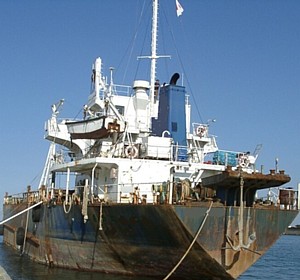 |
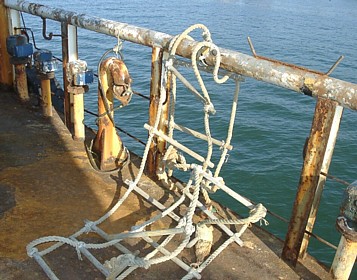 |
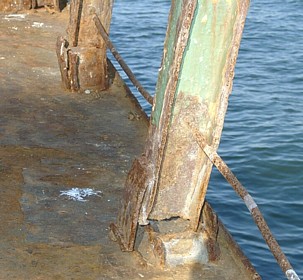 |
|---|---|---|
| 日本から出港する直前の船 | ||
サブ・スタンダード船と旗国の関係や
検査会社の問題が解決できない状況では予想できる展開と言える。
PSC(国交省職員)は目の前の問題を解決する事で国際問題を解決する事に間接的に貢献できる事を理解してほしい。つまり、ダークサイドの検査会社の問題に関係している可能性が高い。
旗国や検査会社が協力、又は、同じサイドでないとインチキは難しくなる。
 シエラレオネ籍船に関しては日本でも貨物船UNIVERSAL(1195トン)がら覚せい剤が見つかり、出港停止命令を受け、最後にはスクラップとして曳航されていった。
シエラレオネ籍船に関しては日本でも貨物船UNIVERSAL(1195トン)がら覚せい剤が見つかり、出港停止命令を受け、最後にはスクラップとして曳航されていった。 シエラレオネ籍船は問題船が多いと考えて間違いないのかもしれない。
シエラレオネ籍船は問題船が多いと考えて間違いないのかもしれない。
Evelyn Macairan
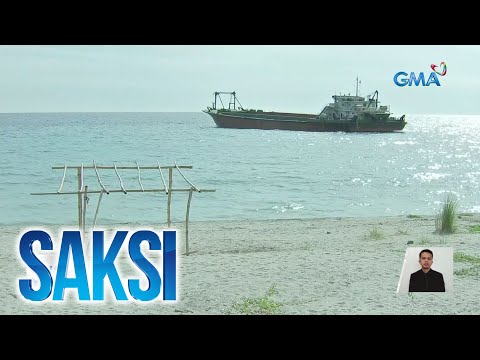
The PCG told media that it received a report on Wednesday, May 15, about a ship anchored off San Felipe, Zambales, that was “hoisting the Philippine flag.” When attempts to communicate via radio yielded no response, the Coast Guard headed out to inspect the vessel. ・・・
When prompted, the ship’s crew “failed to present original and printed versions of relevant documents, including the crew list, passports, and seaman’s books,” said the PCG.
BEA CUPIN
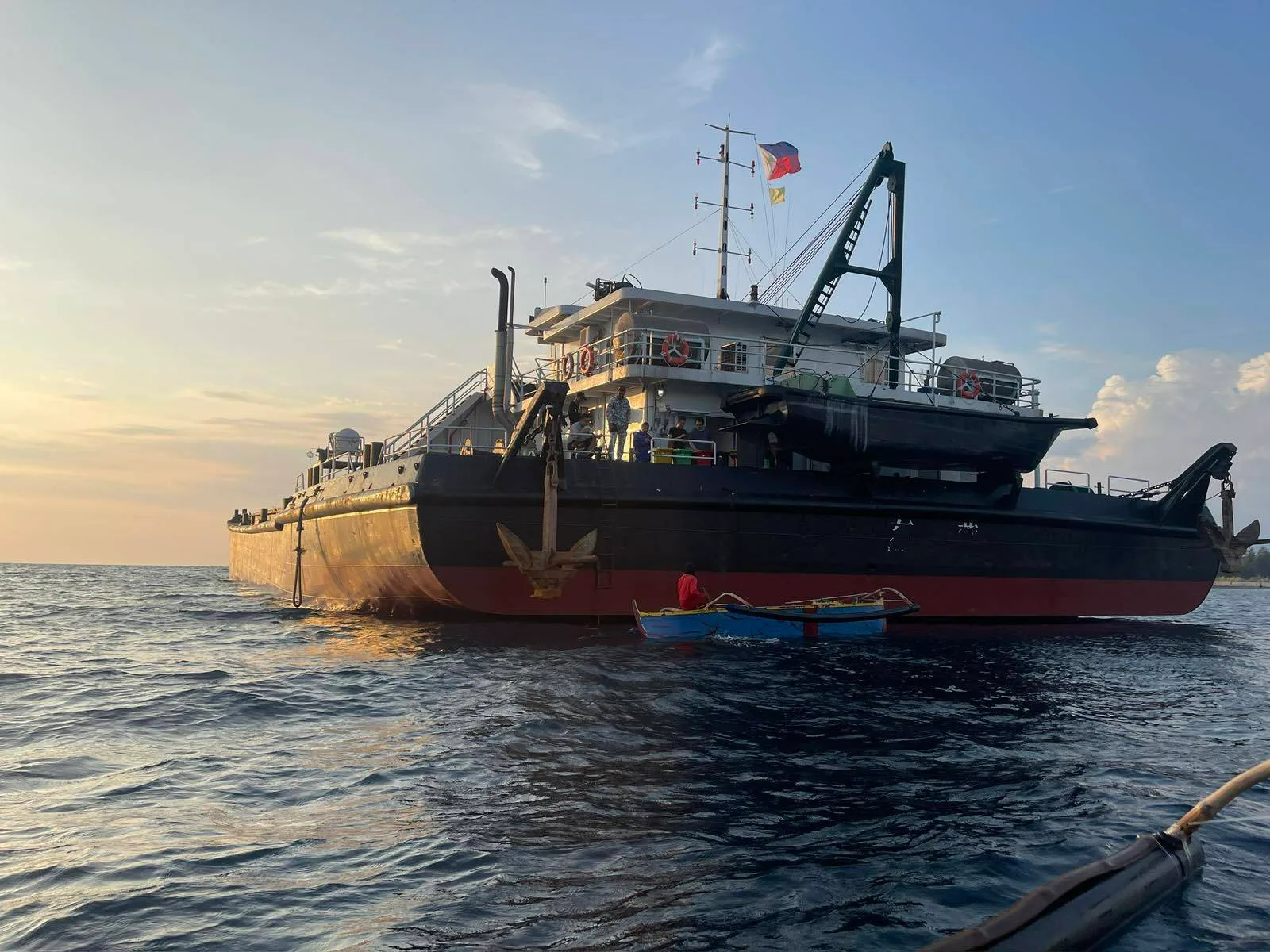
The seven-man Chinese crew failed to produce documents such as their crew list, passports, and seaman's books, says the Philippine Coast Guard
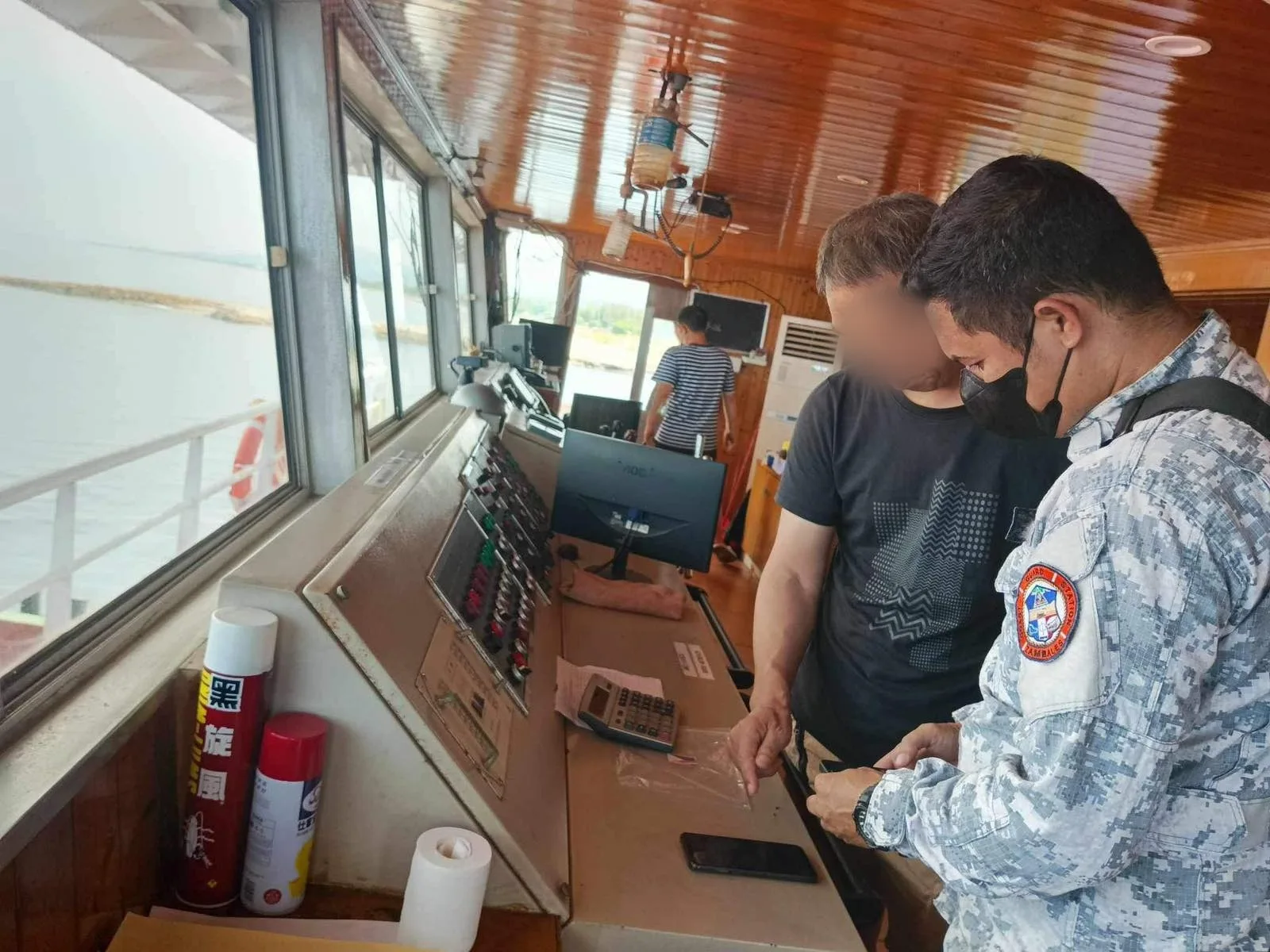
DETAINED. The Philippine Coast Guard inspects and later detains a Sierra Leone-flagged ship that was anchored off the coast of Zambales. Photo from Philippine Coast Guard
3千トン級バルク船(DEYI号):IMO8360676は韓国と中国の航海ではAIS:船舶自動識別装置の電源を入れているが、ロシアへの航海では記録が残らなように電源をオフにしているようだ。日本に来たことがあるのかは不明。ただ、 トーゴ籍船に問題がある船が含まれていると考えて間違いなないと思える。
トーゴ籍船に問題がある船が含まれていると考えて間違いなないと思える。
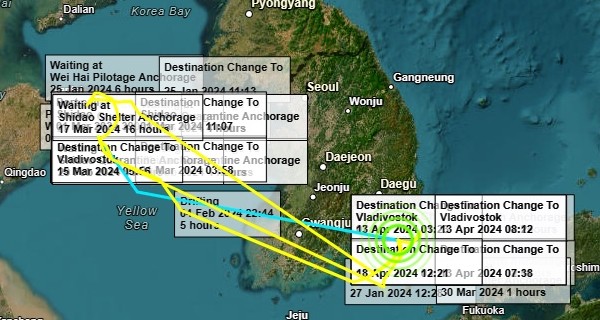
ロシア、独自の輸出ネットワークを構築し制裁逃れる
西側がロシアのウクライナ侵攻に対する制裁のために昨年12月に導入したロシア原油の「輸出価格上限制」は、1年で完全に有名無実化したという分析が出ている。
英フィナンシャル・タイムズは10日(現地時間)、分析機関の資料を引用して、ロシアがタンカーを通じて輸出する原油のうち、西側が上限として提示した1バレル当たり60ドル未満で販売される物量はほとんどないと伝えた。英国の政治危機コンサルティング会社「エンメテナ・アドバイザリー」の設立者、マクシミリアン・ヘス氏は「今年第1四半期には上限制がうまく作動したが、ロシアは第2四半期から迂回する方法を見つけ、第3四半期には上限制が事実上終わったのに続き、第4四半期には完全に終わった」と述べた。ロシア原油の上限制現況を追跡しているウクライナの「キーウ経済大学」研究チームも、10月にすでにロシアがタンカーを通じて輸出する原油の99%がバレル当り60ドル以上で売れたものと分析した。
欧州連合(EU)、西側主要7カ国(G7)、オーストラリアなどは、昨年12月5日から1バレル当たり60ドル以上で販売されるロシア産原油の輸送を拒否し、海上保険など運送関連サービスの提供も禁止した。
西側の上限制制裁がまともに作動しないのは、ロシアがインド、中国、トルコなどに輸出対象を変え、西側の制裁から逃れるタンカーネットワークを独自で構築したためだ。ロシアが西側のG7のタンカーと関連サービスを利用して輸出していた原油量は、ウクライナ侵攻直後の昨年4月は全体の80%水準だった。しかし、最近は全体量の71%が自国または第3国のタンカーおよび関連サービスを利用して輸出されている。
データ分析機関クプラーは、ロシアが原油輸出に利用するタンカーを、ロシアが自主的に保有するタンカー、西側の従来の制裁対象であるベネズエラやイランの石油輸送を担っていた「闇の船団(ダークフリート)」、ウクライナ侵攻以降に新たに確保した「灰色の船団(グレーフリート)」に大きく区分している。「闇の船団」や「灰色の船団」は、所有構造が不明で運営会社が租税回避地など西側の規制が及ばない地域に登録されている船舶を指す。
クプラーは、ロシアの灰色の船団への依存度が特に高まっているとし、先月はロシア西部地域から輸出する原油の半分以上を灰色の船団が担ったと分析した。同社のアナリスト、マシュー・ライト氏は「今年上半期までは国際原油価格が低く、価格上限制がロシアとしては特別な圧力として作用しなかった」とし、「原油価格が上がり始めた今夏からロシアが灰色の船団を利用して原油価格上昇の恩恵を享受している」と指摘した。また「米国がこのような船舶にどのように対応するかは現在としては分からない」と述べた。
米国のシンクタンク「戦略国際研究センター」のベン・カーヒル先任研究員も「ロシアは自ら船団を構成し、(西側に代わる)保険も見つけ、原油関連の人的環境を構築することに成功した」とし、「これを再び戻すことは非常に難しくなった」と指摘した。
サブスタンダード船を野放しにしても大きなリスクにならないケースはあると思うが、サブスタンダード船を放置して喜ぶのは船主、用船者と荷主だけ。事故が起きれば泣く人と達や組織が存在する。PSCはよく考えて検査するべきだと思う。
By Adam Corbett
A tanker spill in the Philippines earlier this year has led to 35,500 separate claims totalling more than $50m.
The 1,143-dwt Princess Empress (built 2022) sank off Oriental Mindoro in February, leading to widespread oil pollution.
According to data released at the International Oil Pollution Compensation Funds’ November meeting, 35,500 claims have been made up to now against the spill.
Oil pollution compensation claims of PHP 1.4bn ($25.3m), $26.4m and €2.7m ($2.9m) have been made so far.
The first layer of claims costs, up to the owner’s liability limit, will be met by the Shipowners’ Club, which is the Princess Empress’ protection and indemnity insurer.
The remaining claims will be paid out through the IOPC Funds, according to the 1992 Civil Liability Convention (1992 CLC) and the Small Tanker Oil Pollution Indemnification Agreement.
Around 33,000 of the claimants are involved in the local fishing industry, which has led to logistical difficulties in meeting claims.
“The compensation process has been complicated by the fact that most claimants in that sector do not have bank accounts,” IOPC Funds said.
“However, working together with the [Shipowners’] club, the secretariat quickly found alternative ways to make payments and has also continued with the process of making provisional payments in order to alleviate the financial hardship on those affected.”
So far the Shipowners’ Club and IOPC Funds have paid out PHP 42.5m, $24.8m and €2.6m.
The Shipowners’ Club liability over $10m will be met through the International Group of P&I Clubs claims pool.
IOPC Funds director Gaute Sivertsen also tabled a paper at the meeting on the organisation’s concerns about a possible oil spill related to the so-called “dark fleet” of tankers operating around sanctioned oil trades.
This fleet has been growing and includes many tankers without adequate liability insurance or any valid insurance.
Sivertsen warned that IOPC Funds and its contributors are exposed to an increased risk of having to pay the full compensation for spills if insufficient insurance is available to cover the shipowner’s liability.
He urged IOPC Funds member states to carry out their responsibility to check ships have CLC certificates verifying insurance coverage.
カメルーン船籍の「Wan Lung」のような船を野放ししていたらトラブルしか起こさないであろう。
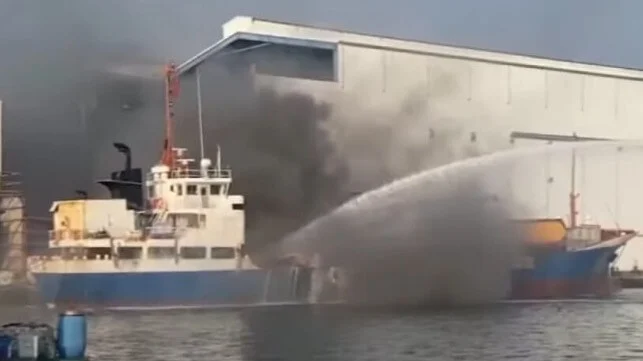
Fire crews fighting the blaze as the crew ran to escape (CTV News/YouTube)
by Noam Raydan
On the anniversary of the 2020 Beirut explosion, Lebanese authorities have done nothing to decrease the risks posed by deficient vessels like the one implicated in the port disaster.
Three years ago this month, Lebanon’s devastating port explosion highlighted the many risks posed by substandard shipping in the Mediterranean and abroad. When the Moldova-flagged cargo ship Rhosus docked in Beirut in November 2013 laden with 2,750 tons of ammonium nitrate, its machinery and hull bore severe deficiencies. If Lebanon had strong maritime regulations and the capacity to detain substandard ships, it would have dealt with Rhosus months before the vessel sailed to the capital with its highly explosive cargo.
One opportunity to do so came in June 2013, when the vessel called at the port of Saida and was found with seventeen deficiencies, including detainable defects related to its engines. Yet no action was taken, and Rhosus later stopped in Beirut on its way to Mozambique, reportedly to pick up extra cargo. There, it was impounded due to a combination of deficiencies and unpaid debts, and its owner abandoned the vessel. The ammonium nitrate then sat at the harbor improperly stored for seven years until it detonated, killing over 200 people, injuring thousands, and leaving large parts of the city in ruins.
The blast should have forced the state to introduce radical measures against substandard ships, reform its maritime sector, and ensure that those responsible for port mismanagement and corruption were held accountable. Three years since the tragedy, however, sources indicate that vessels with major deficiencies continue to enter and leave Lebanese ports unhindered amid ongoing political interference in the blast investigation.
Lebanon’s Regulatory Limits
In shipping terms, “deficiency” implies a condition that is not in compliance with relevant international conventions, including the most important treaty on the safety of merchant vessels: the International Convention for the Safety of Life at Sea (SOLAS). Deficiencies can be related to structural conditions, navigational safety, pollution prevention, and numerous other factors.
Since the Beirut explosion, Lebanese ports have continued to host ships that have major deficiencies. Similar to the Rhosus, many of these vessels were also registered by countries whose flags have been blacklisted due to poor performance on maritime safety issues (see below). These findings are based on inspections carried out by port state control regimes in Lebanon and other countries. As defined by the International Maritime Organization (IMO), port state control, or PSC, “is the inspection of foreign ships in national ports to verify that the condition of the ship and its equipment comply with the requirements of international regulations,” thereby providing a “safety net to catch substandard ships.” But a state’s ability to detain a ship for major deficiencies depends on its willingness and capacity to arrest the vessel and bear any possible lawsuits. And in the case of a politically polarized and corrupt country like Lebanon, this ability can be affected by political connections as well.
What follows is an analysis of five general cargo ships whose cases were chosen from a larger pool of substandard vessels based on the severity of their deficiencies, their record of detentions, and their involvement in illicit activities. The information was compiled from the shipping database Equasis, local sources, vessel data from MarineTraffic, and information from the Paris Memorandum of Understanding on Port State Control (Paris MoU), a multinational PSC regime established by European countries in 1982. The Paris MoU has since expanded to twenty-seven participating maritime authorities and inspired the creation of similar regimes in other regions—including the Mediterranean MoU, of which Lebanon is a member.
Risky Vessels in Lebanese Waters
Afew days after the Beirut port explosion, the Togo-flagged vessel Safi (IMO ship identification number 7108899) was inspected at Lebanon’s northern port of Tripoli. There, a PSC inspection report dated August 11, 2020, showed that the vessel had sixteen deficiencies, including ones that would have warranted detention at other ports. For instance, its hatchways and other covers were not properly maintained, which can cause flooding and sinking; its deck and hull suffered corrosion; and it exhibited various problems related to the mandatory International Safety Management (ISM) code. The purpose of the ISM code, which is part of SOLAS, is to offer “an international standard for the safe management and operation of ships and for pollution prevention.”
The Safi had a significant history of such problems well before 2020. In February 2013, it was arrested for seventeen days at Italy’s Catania port, where a PSC inspection report showed that it had sixty-seven deficiencies, including structural issues. Soon thereafter, it was banned from European ports after failing to call at a repair yard. By 2021, the substandard vessel had been scrapped.
Managed by the Lebanon-based firm Global Management and Trading, the Safi flew under the flag of Togo, one of several flag administrations blacklisted by the Paris MoU for poor performance. Likewise, the U.S. Coast Guard considers the Togo flag “high risk” due to its detention ratio score. Since 2017, the International Registration Bureau (based in Greece) has been authorizing vessels to fly the Togo flag under a contract with the Togolese government. Yet some poorly maintained vessels bearing that flag have reportedly been involved in smuggling drugs and transporting U.S.-sanctioned Venezuelan and Iranian oil. Amid such concerns, the U.S. State Department “has repeatedly tried to help the Togolese government to clean up its act.”
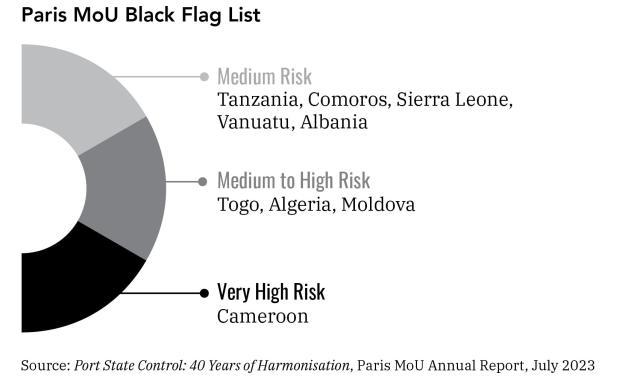
![]()
This map from MarineTraffic shows the path Nuray took and the regions it visited from August 2, 2022, to August 1, 2023.
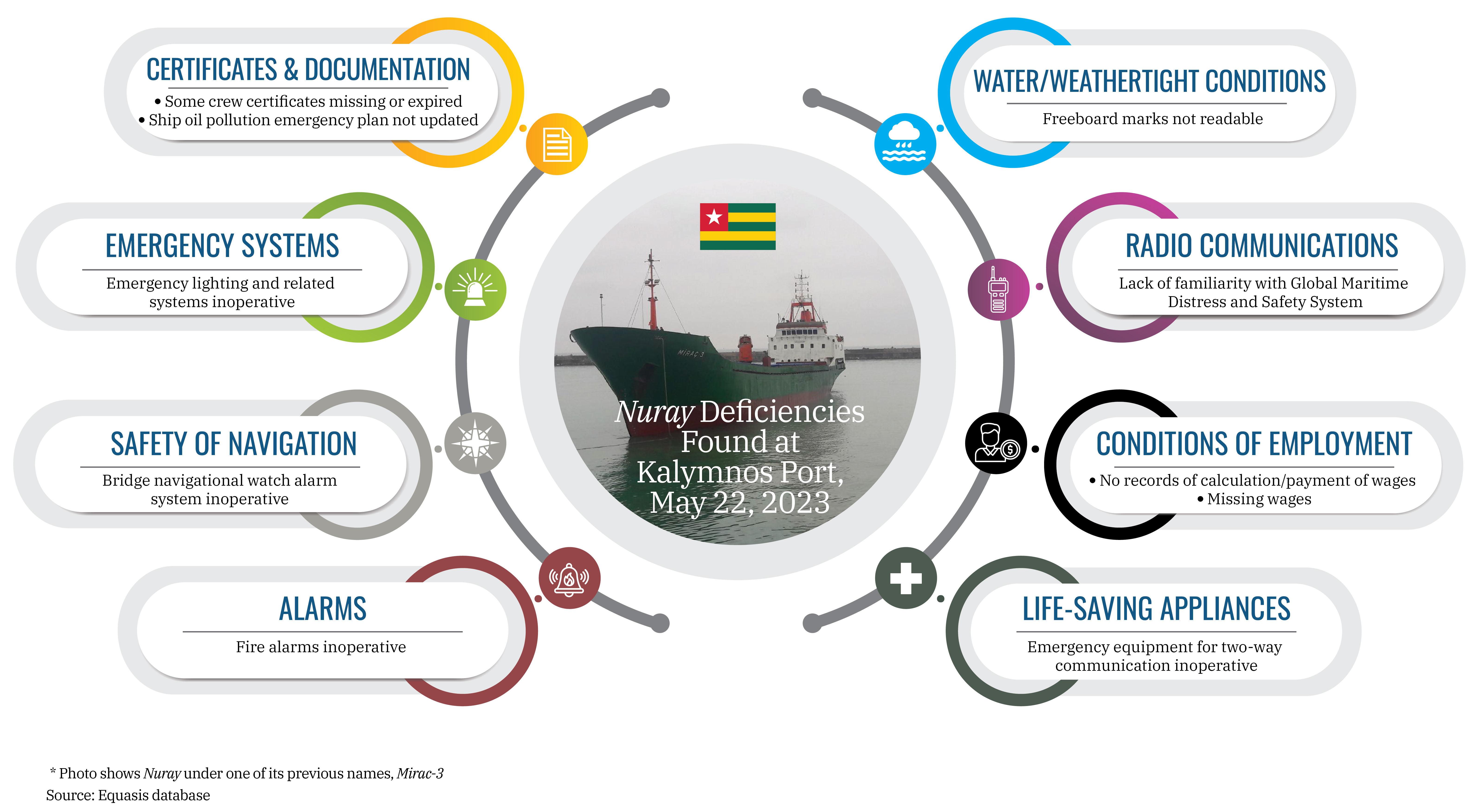
![]()
This map from MarineTraffic shows the path NS Union took and the regions it visited from August 2, 2022, to August 1, 2023.
Sam Chambers
Russia may well need to seek younger ships to shift its oil as many vintage tankers from the so-called dark fleet are becoming easy red flag targets for inspectors around the world.
There are more than 700 ships operating today in what data analytics firm brands the opaque fleet, carrying Russian, Venezuelan or Iranian oil.
Among shared characteristics making them easy to spot for port state control inspectors are their age, generally above 17 years old, as well as their choice of flag, insurer, and latterly their classification society choice.
Among the underperforming ships listed by the Tokyo MOU for April, for instance, are ships classed by little-known class societies including Asia Shipping Certification Services from landlocked Mongolia, a nation that is also flagging more and more of the dark fleet. Other class societies popping up on detained vessel lists include Dalian-headquartered Union Bureau of Shipping, Belize-based Novel Classification Society, Overseas Marine Certification Services from Panama, and Yantai-based Universal Maritime Bureau.
Singapore, a vital transit point for the world’s tanker trades, has detained 33 ships for failing safety inspections so far this year, the same as for the whole of the decade through 2019, according to figures carried by Bloomberg citing data from the Tokyo MOU. April saw nine detentions, the most for any month since at least 2010.
Singapore’s maritime bodies have been spooked by the explosion a month ago today of an uninsured 1997-built aframax tanker called Pablo in nearby Malaysian waters with three crewmembers dying. Malaysian authorities remain unsure what to do with the wreck one month on.
Splash reported earlier this week on China also stepping up detentions of vintage tonnage moving Russian oil while across Europe port state control inspectors are on high alert too.
“Although insufficient documentation and safety lapses are typical for vessels operating in opaque markets carrying Russian, Iranian and Venezuelan crude, the increasing number of tankers detained in Asian ports could mark a potential shift in the attitude towards ageing vessel operating in the grey fleet,” Maersk Broker noted in its latest weekly tanker report.
“The simple fact is that a growing number of vessels that are transporting oil are insured, flagged, and classed with institutions and countries that do not provide anything like the same technical and regulatory oversight as we have come to expect whilst those providing the insurance cover lack the experience and quite possibly the financial capacity to deal with a major incident,” commented Mike Salthouse, a sanctions expert and head of external affairs at NorthStandard, a P&I club, in conversation with Splash last month.
German insurer Allianz released its annual ship casualty report this week in which it noted that vessels belonging to the dark fleet tend to be older ships, operating under flags of convenience with lower maintenance standards.
Reports indicate there were at least eight groundings, collisions or near misses involving tankers carrying sanctioned oil products in 2022 – the same number as in the previous three years, the Allianz report noted.
地中海で運航されているクック諸島船籍、 ![]() パラオ籍船、
パラオ籍船、 シエラレオネ籍船、
シエラレオネ籍船、![]() トーゴ籍船に登録されている船舶をターゲットにして船舶検査が行われるそうだ。これらの国籍の海運局は船主からお金さえ受け取れば、他の国籍の海運局が受け入れない船でも登録すると書かれている。これらの船籍船舶は危険で運航されるべきでないITFコーディネーターは言っている。データによると2年間でこれらの船籍に登録された100隻以上の船が放置されたそうだ。
トーゴ籍船に登録されている船舶をターゲットにして船舶検査が行われるそうだ。これらの国籍の海運局は船主からお金さえ受け取れば、他の国籍の海運局が受け入れない船でも登録すると書かれている。これらの船籍船舶は危険で運航されるべきでないITFコーディネーターは言っている。データによると2年間でこれらの船籍に登録された100隻以上の船が放置されたそうだ。
日本だと シエラレオネ籍船、
シエラレオネ籍船、![]() トーゴ籍船に登録されている船舶が日本に頻繁に入港している。個人的には問題のある船は多いと思うが、
残念ながら日本のPSC(国土交通省職員)の検査は厳しくないので、出港停止命令はあまり受けないのが現状だと思う。
トーゴ籍船に登録されている船舶が日本に頻繁に入港している。個人的には問題のある船は多いと思うが、
残念ながら日本のPSC(国土交通省職員)の検査は厳しくないので、出港停止命令はあまり受けないのが現状だと思う。
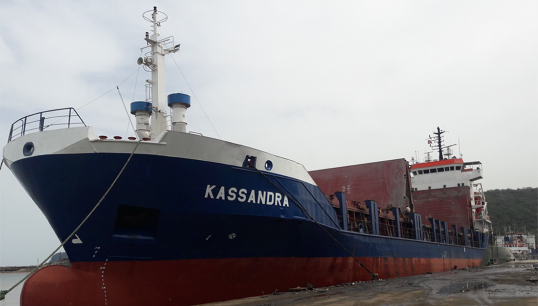
ITF inspector Assaf Hadar led an inspection last year that resulted in the detention of the Sierra Leone-flagged general cargo vessel Kassandra. It was detained for 23 days by Israel's Port State Control in Haifa after 46 structural, navigation, fire safety and crew welfare defects were discovered. Image: Babur Halulu
Sam Chambers
Up to 1,000 ships flagged to the Cook Islands, Palau, Sierra Leone, and Togo will be targeted for safety, maintenance and seafarer welfare inspections across the Mediterranean Sea in the coming eight weeks by an army of inspectors from the International Transport Workers’ Federation (ITF), seafarers’ unions and port authorities.
“Substandard shipping in the Mediterranean Sea is driving down seafarers’ wages and conditions, it’s endangering the lives of crew and risking our environment,” said ITF inspectorate coordinator Steve Trowsdale.
“These flags take money from shipowners to register ships that other countries wouldn’t touch. Many are old vessels and are poorly maintained by their owners. Many of these ships are dangerous and should not be trading,” he said.
The blitz comes off the back of new analysis showing the four flags of convenience registries together accounted for more than 100 crew abandoned in the last two years, with millions of dollars wages not paid to crew by the flags’ shipowners that the ITF then had to recover on seafarers’ behalf.
The ITF inspectors’ efforts will be bolstered in France by the country’s Port State Control agencies, which are organised regionally.
By Eric Priante Martin
You would be hard-pressed to find a shipping register with as ignoble an
inspection record as that of Cameroon. And yet, as TradeWinds correspondent Adam
Corbett reports, nearly a year after Russia’s invasion of Ukraine touched off a
whirlwind of sanctions, ships are flocking to the registry and other
marginalised flags as a “dark fleet” grows to move Russia’s energy exports.
The growth of flags with unenviable inspection records to serve a shadow tanker
market is one of many yawning cracks that have emerged in shipping’s
international regulatory framework in the wake of the conflict in Ukraine.
It is a global structure that relies on the willingness of flag states and port
states to regulate and inspect. That has left a door open for ships to enter a
dangerous realm, as long as they trade where both flag and port state will look
the other way.
Trading giant Trafigura has estimated that some 600 ships are operating in the
dark fleet, including 400 crude tankers, according to Bloomberg.
Shipping’s safety record has improved on many fronts over the years, and
thankfully oil spills are a relatively rare event. But companies operating in
the dark trades are brazenly flouting the provisions of the international safety
regime, bulldozing through regulatory norms by turning off AIS transponders,
engaging in offshore ship-to-ship transfers and carrying out other deceptive
practices.
The fact vessels are flocking to registries that will hold them to a lower
standard to play this game is another concerning development in the growth of
the dark fleet serving Russia.
Gabon and Tanzania
Among those are Gabon, whose fleet barely registers in port-state-control data,
and Tanzania, which the US Coast Guard has labelled a high-risk flag.
In the case of Cameroon, the fleet under the country’s flag surged by 41.5% in
2022, as TradeWinds reports.
The Paris Memorandum of Understanding, a treaty organisation that tracks
port-state detentions, has the country listed at the very bottom of its black
list and has labelled it as the only “high risk” shipping flag. That was based
on data from 2019 to 2021, when 21.7% of 69 inspections resulted in a ship being
detained.
There is no indication that its record has got any better.
In fact, although the Paris MOU has yet to reveal its latest blacklist, a
TradeWinds review of its data shows the detention rate for 2022 only got worse,
with 26.6% of inspections of Cameroon-flagged vessels resulting in the ship
being held, lifting the three-year average that will decide whether it stays on
the black list to 23.7%.
90% of ships with deficiencies
A vessel flying Cameroon’s flag can barely make it through an inspection without
authorities finding a safety problem. After all, more than 90% of inspections
found at least one deficiency in 2022, the Paris MOU database shows.
Dark activities by Cameroon-flagged tankers in the South Atlantic increased from
seven events in 2021 to 315 in 2022, according to data analysis firm Windward.
Cameroon’s transport ministry did not immediately respond to TradeWinds’ request
for comment on the information.
Windward pointed to one ship as an example of the deceptive practices underway
in shipping.
The outfit reported that after switching to Cameroon’s flag in July, the
45,200-dwt product tanker Nobel (built 1997) engaged in a number of suspicious
activities, including loitering in locations with no commercial or economic
reason, location data manipulation and ship-to-ship transfers.
One of those transfers led Spanish authorities to bar Maersk Tankers’ 50,000-dwt
Maersk Magellan (built 2010) from unloading at the port of Tarragona, but
another ship appears to have carried a smuggled Russian cargo from the Nobel to
the Spanish port of Ferrol.
But worrying from a safety perspective is that during all of this activity, the
Nobel was under questionable oversight. (Its current owner — a
Seychelles-registered company with no other ships to its name — could not
be reached for this story.)
When the vessel was sold in July, it moved to the Cameroon registry from the
Russian Maritime Register of Shipping, which was also its classification society
at the time and is historically among the better-performing shipping flags.
Russia’s invasion of Ukraine is showing shipping companies that want to operate
outside of the international regulatory order will still find a home.
They may be welcomed with a flag of convenience that, with little regulatory
oversight, will also take ships on the fringes of the global safety regime.
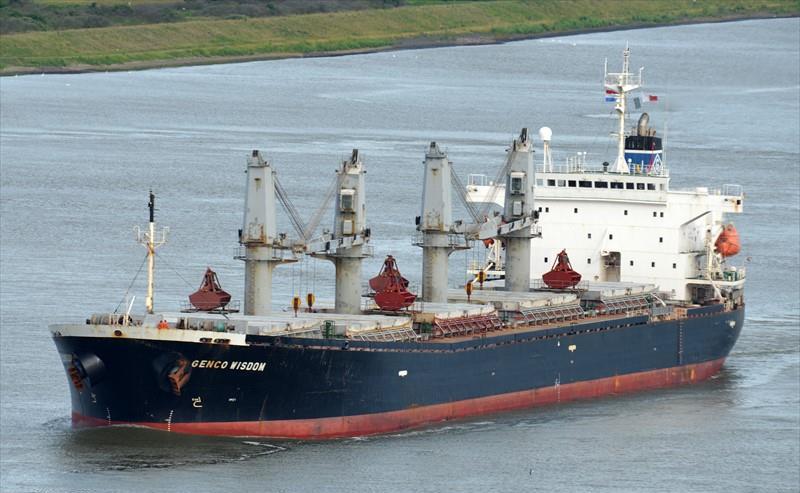

中国国務院環境保護部(環境省に相当)は12月29日、固形廃棄物の輸入を規制する新基準「进口可用作原料的固体废物环境保护控制标准—冶炼渣」を発表した。2018年3月1日から施行される。中国政府は2017年7月18日、世界貿易機関(WTO)に対し、2017年中に国外からのごみの輸入の規制を強化することを通知していた。今回の新基準はその関連法第一弾に相当するもの。
サブスタンダード船は船が適用しなければならない主な国際条約を守らないだけでなく、違法行為や犯罪にも使われる可能性が高い。サブスタンダード船は国際条約の順守しない事に関して寛大な、又は黙認する旗国に登録される可能性が高い。このような旗国は違法行為や犯罪にも寛大だ。結果として規則を守らない事が飛躍し、サブスタンダード船が頻繁に違法行為や犯罪に使われる。
「再発防止策として、ライトハウスウィンモアの船主は今後は瀬取りをしない方向で船舶を運用すると約束し、Pパイオニアは船舶自動識別装置を常時稼働させ、政府の要請があれば航海記録を提出することにしたとされる。」
重い処分なしの約束など、今度は上手くやるから大丈夫とか、次も何とかなると勘違いさせるだけである。韓国は凄い処分と対応が甘いと思う。
船舶自動識別装置(AIS)は発信できる範囲は狭いので嘘を付かれても確認のしようがない。船舶長距離識別追跡装置(LRIT)の情報は衛星経由なので確認が常時出来る。
「韓国の港に留め置かれている別の無国籍船2隻については、対北朝鮮制裁を故意に違反した可能性が高いとの判断から、制裁委で廃棄が議論されているという。」
「無国籍の2隻」は船としての価値はないので廃棄されても船主はそれほど困らないと思うので、廃棄で良いと思う。国際条約を満足できない船の価値はかなり低いので、代替えの船など簡単に安く購入できる。見せしめ的に廃棄で良いと思う。
LRITニュース (ClassNK)
LRIT(船舶長距離識別追跡)(海上保安庁)
開けない人はここをクリック
【ソウル聯合ニュース】国連安全保障理事会の対北朝鮮制裁決議に違反したとして韓国の港に留め置かれていた国内外の船舶2隻が、船主による再発防止の約束の下で解放される。
韓国外交部によると、安保理の北朝鮮制裁委員会は1日(現地時間)、韓国政府の同2隻に対する放免要請を承認したことを発表した。
2隻は香港船籍の「ライトハウスウィンモア」と韓国船籍の「Pパイオニア」で、いずれも海上で積み荷を移し替える「瀬取り」で北朝鮮船舶へ石油精製品を提供した。ライトハウスウィンモアは2017年11月から麗水港に、Pパイオニアは18年9月から釜山港にそれぞれ係留されていた。
再発防止策として、ライトハウスウィンモアの船主は今後は瀬取りをしない方向で船舶を運用すると約束し、Pパイオニアは船舶自動識別装置を常時稼働させ、政府の要請があれば航海記録を提出することにしたとされる。
船舶の係留期間が長引いていたことから、韓国政府は5月下旬に係留解除を要請する書簡を制裁委に送っていた。安保理の決議に基づき制裁に違反した船舶を係留した場合、適切な再発防止措置があればこれを解除することができる。
一方、韓国の港に留め置かれている別の無国籍船2隻については、対北朝鮮制裁を故意に違反した可能性が高いとの判断から、制裁委で廃棄が議論されているという。この2隻はそれぞれ、北朝鮮船舶への石油精製品の移し替え、北朝鮮産石炭の運送に関与した疑いが持たれている。
「北朝鮮籍の船舶など4隻を制裁対象に追加 国連安保理」
10/10 2017
http://www.fnn-news.com/news/headlines/articles/CONN00372957.html
上記の記事によると「国連安保理は、北朝鮮に対する制裁決議で禁止されている物品を運んでいたとして、5日付で、北朝鮮籍などの4隻の船舶に対して、国連加盟国の港に入港することを禁止する措置をとった。」とある。
北朝鮮に便宜置籍船で加担しているのはどれも小国である。
国連安全保障理事会の対北朝鮮制裁決議の履行状況を監視する制裁委員会は10日、決議違反の疑いがあるとして、北朝鮮船籍などの貨物船4隻について、加盟国の港への入港を原則禁止にする措置を発表した。大陸間弾道ミサイル発射を受けて安保理が8月に採択した制裁決議に基づく。
AFP通信によると、4隻は決議で禁じられた北朝鮮産の石炭や鉄鉱石、海産物を運んでいた疑いがあるという。同委が入港禁止を実施するのは初という。
制裁委が公表した4隻の国際海事機関番号を船舶記録の公開サイト「マリントラフィック」で照会すると、10日時点で船籍は、北朝鮮、アフリカ沖のコモロ、カリブ海のセントクリストファー・ネビス、カンボジアとなっている。
(金成隆一)
国連の安全保障理事会は、北朝鮮に対する制裁決議に違反した可能性があるとして、北朝鮮籍の船舶など4隻を制裁対象に追加し、加盟国の港への入港を禁止する措置をとった。
制裁決議に基づく入港禁止措置は、初めて。
国連安保理は、北朝鮮に対する制裁決議で禁止されている物品を運んでいたとして、5日付で、北朝鮮籍などの4隻の船舶に対して、国連加盟国の港に入港することを禁止する措置をとった。
この4隻の船舶は、8月に採択された安保理決議で禁止された石炭や海産物、鉄鉱石を運んでいたという。
資産凍結や航行禁止ではなく、入港禁止の措置がとられるのは初めて。
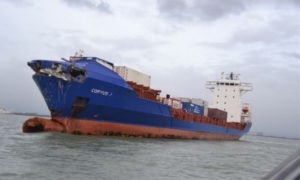 Le porte-conteneurs Corvus J, après sa collision avec le voiturier Baltic Ace, en 2012 / The container ship Corvus J after her collision with the Baltic Ace, a car-carrier, in 2012© KNRM Breskens | 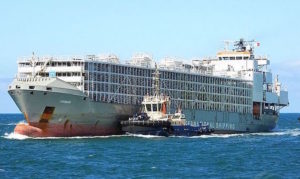 Devenu bétaillère sous le nom de Jawan, ici en décembre 2019, en Australie /Turned into a livestock carrier as Jawan, here in December 2019, in Australia© Graeme Waller |
|---|---|
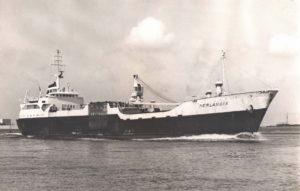 Le cargo polyvalent Nerlandia en 1972 / The general cargo carrier Nerlandia in 1972 © Thaletas | 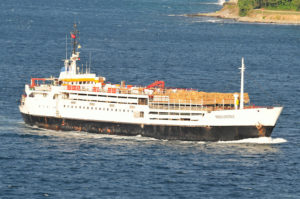 Devenu bétaillère sous le nom d’Omega Livestock, ici en 2014 / Turned into a livestock carrier under the name Omega Livestock, here in 2014 © Marc Ottini |
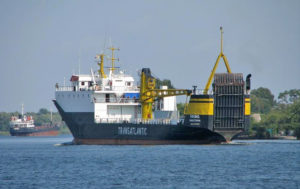 Le roulier Vicking en 2009 / The Ro-Ro Vicking in 2009 © Stetsenko Denys | 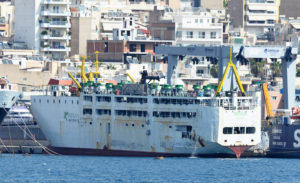 Devenu bétaillère sous le nom de Mira, ici en 2020 / Turned into a livestock carrier under the name Mira, here in 2020 © Marc Ottini |
The EU-approved livestock carriers are not compliant with the Marpol Convention for the Prevention of Pollution from Ships and are accustomed to oily waste discharges at sea. They are also air polluters.
43 livestock carriers fly the worst flags of convenience: Togo, Comoros, Palau, Tanzania and Sierra Leone. The others fly exotic flags such as Jamaica, Jordan, Lebanon, Panama, Liberia, the Marshall Islands or Singapore. The only 2 with a European flag are registered in Luxembourg.
55 are inspected by ghost classification societies, some of which are based in Greece, Cyprus or Bulgaria thanks to the complacency of the European Union.
The 78 EU-approved livestock carriers total at least 411 detentions in ports around the world.
During the years 2019 and 2020, they accumulated 2,504 deficiencies in particular with regard to working and living conditions of the crew, fire safety, compliance with the Maritime Labour and Marpol Conventions. The living conditions of livestock inside ships are not among the criteria for deficiencies as defined by inspectors at the ports.
The report written by the NGO Robin des Bois in cooperation with its German and Swiss fellows reads like a truthful novel of maritime piracy, where, page after page, deadly fires, corpses at sea, zoonoses behind closed doors, flags of convenience, the lure of gain and accustoming to cruelty jostle together. The animals wade through their excrement, the litters are soaked, the indoor air is saturated with ammonia from urine, the drinking water is warm and unsafe. Up there, the hay on the sun deck is rotten due to rain and falls overboard during storms.
Only 5 of the EU-approved livestock carriers were built purposely for the transport of livestock. However, they cannot be considered safe and exemplary. The 11-year-old Bahijah experienced major engine failures. On board the Brahman Express 14 major deficiencies were identified in 2019 and 2020. The 7-year-old Gelbray Express, built in China, was detained in Australia and the United States in 2017 and 2018. The 19-year-old Ocean Drover was detained 3 times, notably in China, and suffered mechanical and ventilation failures that caused significant sheep and bovine mortalities.
This report should serve as an electroshock for the European Union’s DG for Health and Food Safety, which has the upper hand in this traffic of another age. In cooperation with the DG for Transport, prompt, strong and binding measures must be taken to send this dilapidated fleet for scrapping as soon as possible. It is also necessary to avoid these ships to rust at the quayside and to be used as migrant carriers in the Mediterranean Sea, which already happened in 2015 with the Ezadeen.
Today, at around noon, the Sarah M, an ex-reefer converted in 2014 at the age of 35 into a livestock carrier, moored in the French livestock port of Sète. Panama flag, cosmopolitan crew. Owned by Jounieh Bay Shipping SA registered in the Marshall Islands.
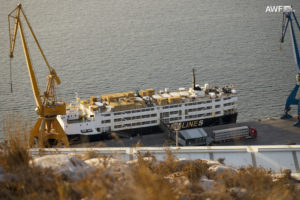 Le Sarah (devenu Sarah M) en Espagne, 2020 / The Sarah (turned into Sarah M) in Spain, 2020 | 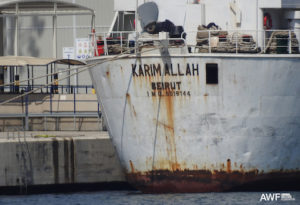 Le Karim Allah en Espagne, 2020 / The Karim Allah in Spain, 2020 |
|---|---|
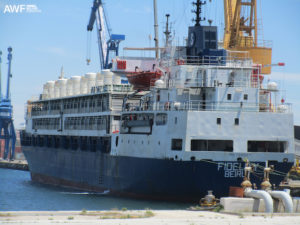 Le Fidelity en Espagne, 2018 / The Fidelity in Spain, 2018 | 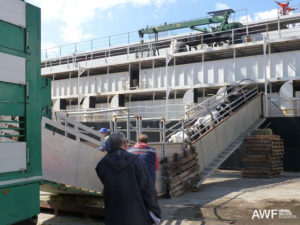 Chargement à bord du F.M. Spiridon en Croatie, 2016 / Loading on board the F.M. Spiridon in Croatia, 2016 |
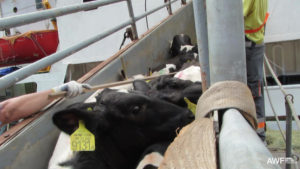 Chargement de vaches hongroises à bord du Karim Allah, Croatie, 2015 / Loading of Hungarian cows on board the Karim Allah, Croatia, 2015 | 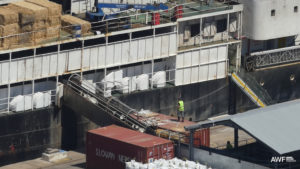 Chargement à bord du Spiridon II en Espagne, 2018 / Loading on board the Spiridon II in Spain, 2018 |
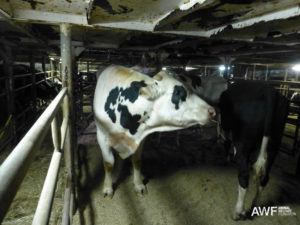 A bord du F.M. Spiridon, Croatie, 2016 / On board the F.M. Spiridon, Croatia, 2016 | 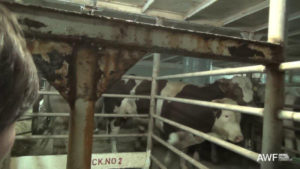 A bord du F.M. Spiridon, Croatie, 2016 / On board the F.M. Spiridon, Croatia, 2016 |
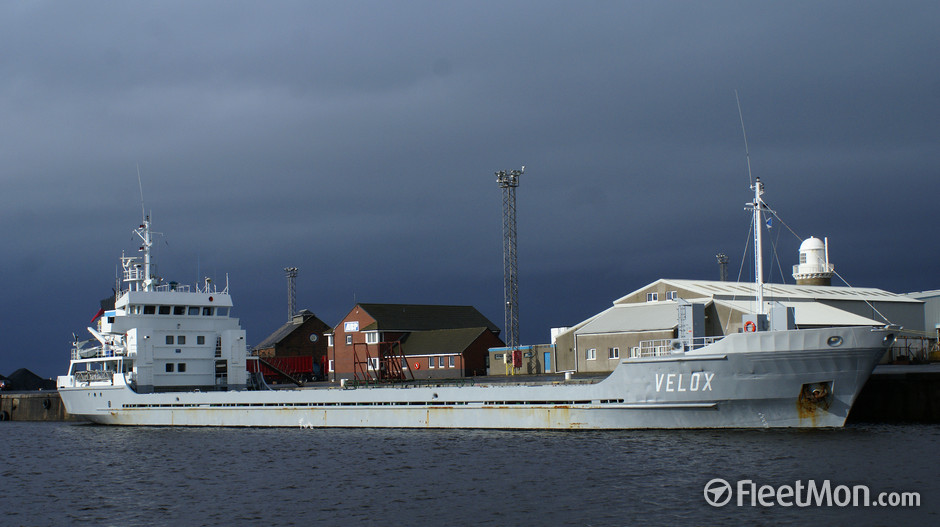 JIE SHUN IMO 8518780 Flag Cambodia (FleetMon) |
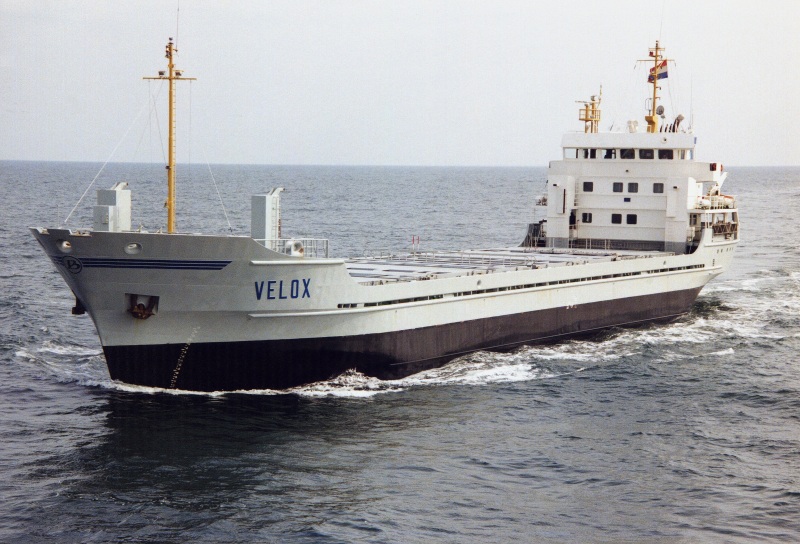 VELOX - IMO 8918291 Flag: Albania (ShipSpotting.com) |
|---|
北朝鮮が、国連の制裁対象となっている船舶を違法運航していると安保理の北朝鮮制裁専門家パネルが指摘した。米政府系のボイス・オブ・アメリカ(VOA)が報じた。
国連安保理1718制裁委員会の専門家パネルは先月、安保理に提出した報告書で、昨年3月に安保理が採択した対北朝鮮制裁決議2279号で制裁対象になった31隻のうち8隻が、船名を変え登録番号を新たに受け取る手法で、運航を続けていたと明らかにした。
専門家パネルはその一例として、昨年11月にロシアの港で書類の不備などの理由で停船措置を受けた「ソンピョン7」号を挙げた。
1984年建造の「ソンピョン7」号は、大きさなどが制裁対象である熙川(ヒチョン)号と同じだという。同じ年に建造された船の中で、同じ大きさの船はなかったため、専門家パネルはこの2隻が同一船であると確認した。
また、国際海事機関(IMO)の固有識別番号の代わりに、MMSIと呼ばれる「海上移動業務識別コード」と、コールサインとして通用している「船舶呼出符号」のみを用いていたと指摘した。
北朝鮮は制裁対象である熙川号に、ソンピョン7号という新しい名前をつけ、IMO番号を隠し、MMSI番号を利用して堂々と海外の港に出入りしていたということだ。熙川号は昨年3月、ロシアのボストーチヌイ港に入港しようとしたが拒否されている。
同様の手法で制裁対象船舶である鉄嶺(チョルリョン)号、セボ号、智慧山(チヘサン)号など8隻が、制裁逃れを行っていた。
報告書では、船舶以外の北朝鮮の制裁違反の実例について詳しく紹介している。
例を挙げると、カンボジアの旗を掲げてスエズ運河に向かっていた北朝鮮船舶から、輸出禁止品目である鉄鉱石2.3トンと、対戦車ロケット弾3万発が発見された。また、北朝鮮の武官が南スーダンなどと軍事契約を結ぼうとしていた状況も察知されている。
さらに、エリトリアへ向かっていた貨物船から発見された北朝鮮製の軍事装備などは、マレーシアに拠点を置く北朝鮮系企業、グロコムのものだと明らかにした。
一方で専門家パネルは、北朝鮮の銀行7行が、最近までスウィフト(国際銀行間通信協会)に加入しており、うち3行が、スウィフトとの取引を行っていることも明らかにした。
下記の記事はモンゴル籍船がこのような旗国の1つであることを示す例である。
今月4日、全羅南道麗水市(チョンラナムド・ヨスシ)の巨文島(コムンド)から南東34カイリ(約63キロ)の公海上。北朝鮮船員16人が乗ったモンゴル国籍の4300トン級貨物船「グランドフォーチュン1号」が沈没した。
韓国の海洋警察は救助活動を行って5人を救助したが、2人は死亡し、追加捜索を行って1人の遺体を引き揚げた。救助された3人と遺体3体は板門店(パンムンジョム)を経由して北朝鮮に送った。海洋警察や麗水警察署などによれば、沈没した船は北朝鮮の清津(チョンジン)港から出発して中国揚州市近隣の江都港へ向けて航海中だった。重油50トンや鉄鉱石などが載っていた。韓国政府は14日、最後の遺体1体を北朝鮮に引き渡した。
グランドフォーチュン1号は海がない内陸国、モンゴル国籍の船だった。船主は香港にある会社だった。海洋水産部などは船主が「便宜置籍」の一環としてモンゴルに船を登録して賃金が安い北朝鮮船員を雇用し、貨物事業を展開していたと推測した。
便宜置籍は、自国船員の義務雇用比率を避けて税金節約のために他国に船を登録することをいう。それ自体は違法ではない。パナマやリベリア国籍の船が多いのは便宜置籍が多い国だからだ。
モンゴルは内陸国だが2003年から船舶登録局を開設して他国の船の登録を受けている。船舶登録を受けて税金を集めて海運産業を育成するためだ。ウィキリークスが2007年に公開した米国大使館の資料によれば、モンゴルには283隻が登録されている。船の主人の国籍はシンガポール(91隻)、パナマ(22隻)、マレーシア(22隻)、香港(12隻)などだった。船主が国籍不明な船も39隻あった。
北朝鮮が香港会社を代理船主として前面に出し、モンゴルに船を登録した可能性を見せている部分だ。外交部関係者は「今回のグランドフォーチュン号は、韓国領海ではない公海上で発見されたので対北朝鮮制裁決議にともなう船舶の捜索や調査を行えなかった」として「すぐに目についた重油や鉄鉱石のほかに、どんな物があったのかは確認できなかった」と話した。
先月出てきた国連安保理の対北朝鮮制裁の専門家パネル報告書によれば、国籍は北朝鮮ではないが実際は北朝鮮の船と疑われるものが最低8隻以上だった。このうちスンリ2号、グンザリ号、クァンミョン号の3隻は、今回発見されたグランドフォーチュン1号のようにモンゴルに登録されている。他国の国籍を持っており、船主は香港人である船も1隻あった。
国連対北朝鮮制裁の専門家パネルは報告書を通じて「安保理の対北朝鮮制裁決議2094号(2013年)が発効された後、北朝鮮は船舶を再登録したり国籍を変更したりして制裁を避けようとする可能性が高い」と指摘した。実際に北朝鮮は昨年だけで4隻の船をカンボジア・トーゴなどに国籍を変更した。
このような前例もある。2011年5月、北朝鮮の南浦港(ナムポハン)からミサイル武器などと推定される部品を載せてミャンマーへ向かった「ライト」号は、米国海軍の追撃を受けると公海上にとどまって回航した。ライト号は2006年まで「ブヨン1号」という名前を使う北朝鮮国籍の船舶だったが、北朝鮮核実験後に対北制裁が激しくなると名前を「ライト」に変えて国籍も中米のベリーズに変更して運行した。「ライト」号は米国の取り締まりがあってから2カ月後、アフリカのシエラレオネで国籍を変えて船の名前も「ビクトリー3号」に変更した。国連の対北朝鮮制裁の専門家パネルは、国籍を「洗浄」した北朝鮮の船が19隻以上に上ると推定している。
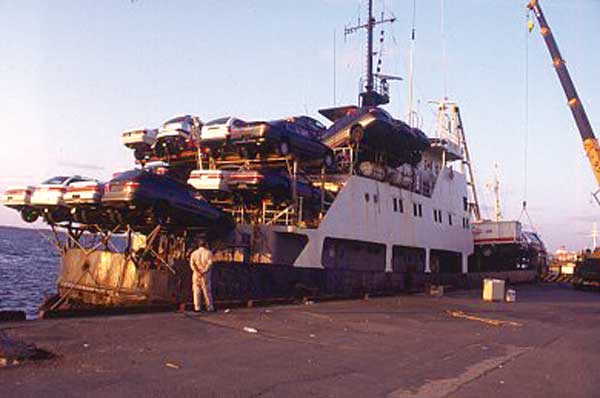
シエラレオネ籍船も同様な旗国の1つだ。 東京・伊豆大島沖で2013年9月、丸仲海運が所有する貨物船「第18栄福丸」が中国企業所有のシエラレオネ籍船貨物船「JIA HUI」と衝突し、栄福丸の乗組員六人が死亡した事故は当直責任者の中国籍の夏紅波被告がSTCW条約に関して問題があり、COLREG条約を無視した行動が原因だ。また、SOLAS条約のISMコードの要求を守っていない事により当直責任者の夏紅波被告のライセンスの問題が見過ごされた。「サブ・スタンダード船」であるが故に起こった事故だ。
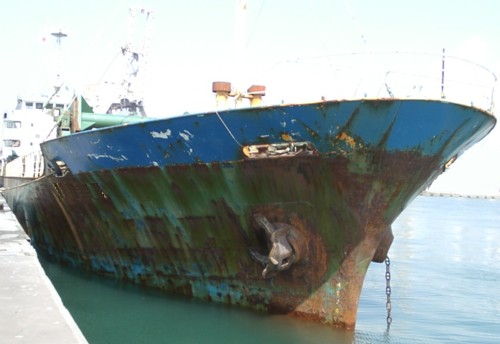
繰り返すようになるが サブ・スタンダード船は 海難事故、 座礁による被害 、公正な競争を妨げる。そして 犯罪に使用される 等の問題を世界中で引き起こしている。サブ・スタンダード船は事故の確率が高い。 世界の多くの国々が無視できない状態となっている。 国際条約に批准(守ることを約束)した国に船舶が登録されていても サブ・スタンダード船 の問題が未だに解決されていない。日本の港に多くのサブ・スタンダード船 が入港している。また、日本から多くの船が売船 され、サブ・スタンダード船の状態で出港している。 日本から出港後に座礁し放置されている船もある。 サブ・スタンダード船が座礁した場合、放置される確率が高い。 船主や検査した検査会社が 責任を放置して座礁したサブ・スタンダード船が放置されれば、 責任のない日本国民に間接的に負担を押しつけられるのである。 無責任な国も存在する。カンボジア船籍船が良い例だ。カンボジア船籍船の問題についてカンボジア政府は責任がなく、韓国の船舶登録会社に責任があると発言する。国際条約を守るのは船主の責任と責任回避する船舶登録会社。このような現状では問題は解決されない。 付け加えて、船舶油濁損害賠償保障法には欠陥があることも明確になった。 PSC (外国船舶監督官)は外国籍船舶を検査し、 問題があれば出港停止命令を出す権限を与えられている。 PSC (外国船舶監督官)は検査を行う時は、 サブ・スタンダード船が事故を起こせば責任回避する可能性が高い事を 良く理解してサブスタンダード船と思われる船舶を選び、厳しく検査しなければならない。
2004年に日本は欠陥船根絶で監査制度を提唱した。
国土交通省海運局はISO9001を取得し、2007年2月に国際海事機関(IMO)と日本政府の合意により、
「任意によるIMO加盟国監査スキーム」に基づく日本に対する監査が行われた。
A ship ‘snapped in half’ and sank off Turkey’s Black Sea coast while en route to Bulgaria. Now a shocking video has been shared showing the crew making an emergency mayday call as the bow breaks.
「各国が自国の船をきちんと検査できるようになれば海難事故は減らせる」(国交省海事局)と
発言している。実際、各国が自国の船を適切に検査できるようになると思っているのであろうか?本気で思っているのであれば、現状を把握していない証拠だと思う。
さらに国交省海事局(海事局検査測度課、安全基準課、総務課外国船舶監督業務調整室)や
職員である外国船舶監督(PSC)の
旗国によるインスペクション
に対する理解や旗国のインスペクターに対する協力は低い。国交省海事局は実際の現状を全く把握していないのか、本気でサブ・スタンダード船を撲滅するつもりはないと思える。
国際条約など守らせる意思のない旗国も存在する中で改善しようとしている旗国のインスペクターに協力するのか、自分達でサブ・スタンダード船を厳しく検査するしか選択肢はない。
残念ながら、協力的でなくPSC (外国船舶監督官)の検査も厳しくない。つまりダブルスタンダードだ。
現状を理解しやすいように写真をご覧ください。
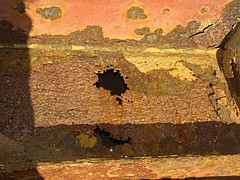
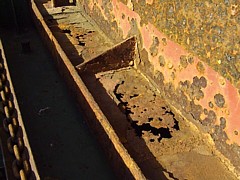
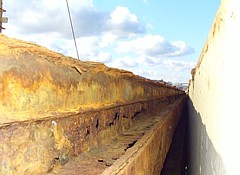
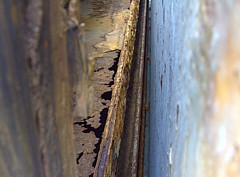
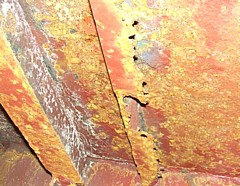
サンプル 2 2010年の夏に撮影。
日本の外国船舶監督官の検査から1ヵ月も経っていません。指摘された不備は2つでカーゴホールドに関する指摘はなかった。
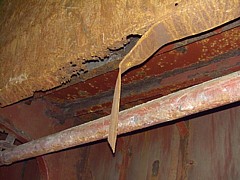
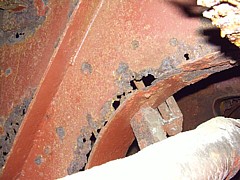
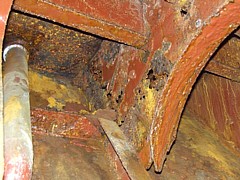
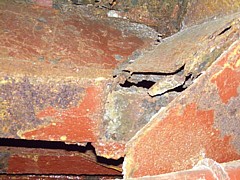
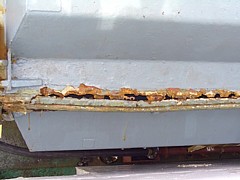
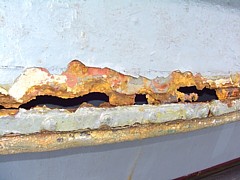
上記の写真(その2)は、元日本国籍内航貨物船だった外国籍貨物船のカーゴホールドの写真です。
Reports vary – some say that up to four crew members died in the incident. Rescue workers reportedly saved at least six people and retrieved the bodies of two others.
The Russian state agency overseeing sea and river fleets says the vessel belonged to the Ukrainian company Arvin Shipping Ltd.
According to Deha 24 Arvin is a river-sea cargo vessel type, vulnerable to strong storms at sea, because its structural strength isn’t sufficient enough to be fully seaworthy – it was too long and narrow. Arvin couldn’t stand against strong wind and waves and either broke in two, or was overwhelmed, while being anchored at Bartin anchorage in an attempt to shelter from a storm.
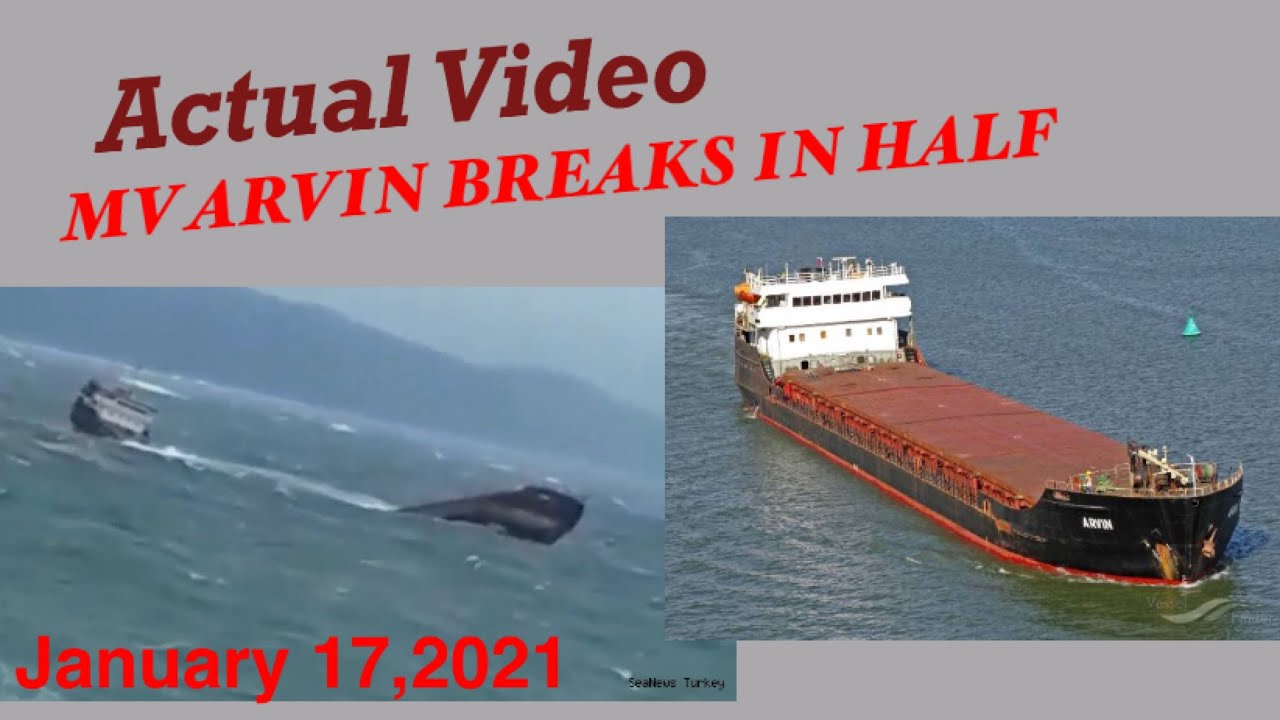
Actual Video - M/V ARVIN ship breaks -17 January 2021 - Sunk
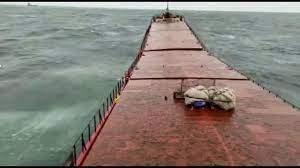
Mike Schuler
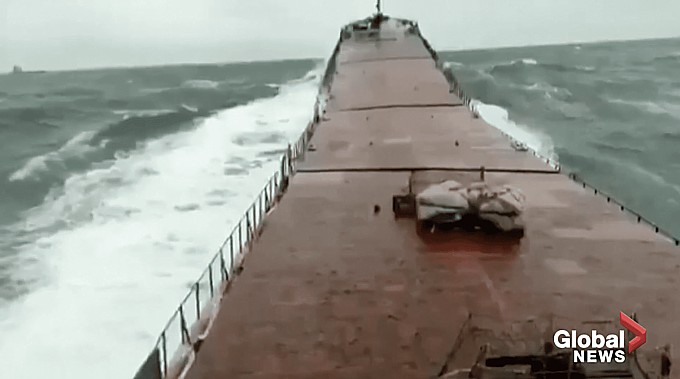
A screenshot of video showing the MV Arvin breaking in half, January 17, 2021.
By Interfax-Ukraine.
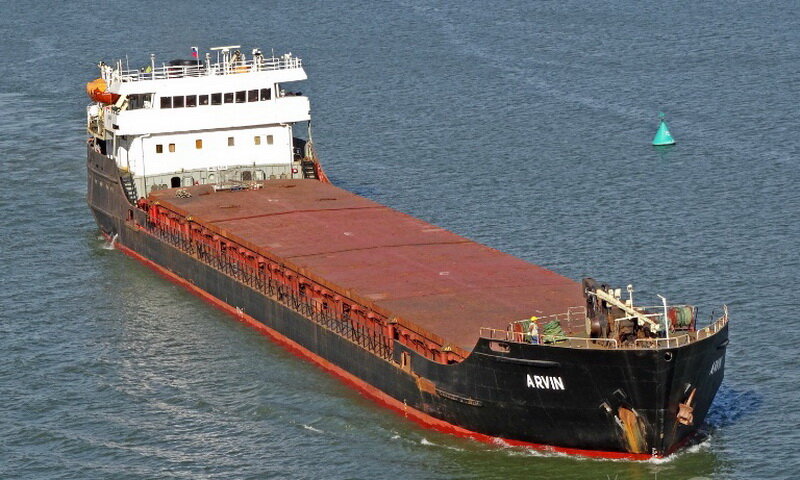
Arvin cargo ship, with 10 Ukrainians on board, sank near the port city of Bartyn, Turkey on Jan. 17. 2021.
Photo by SabriKeles/vesselfinder.com
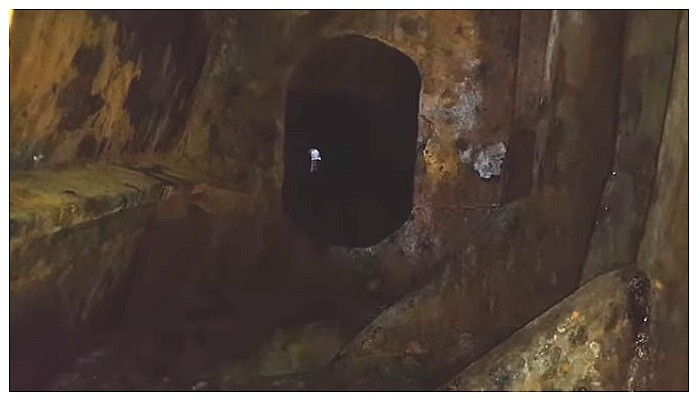
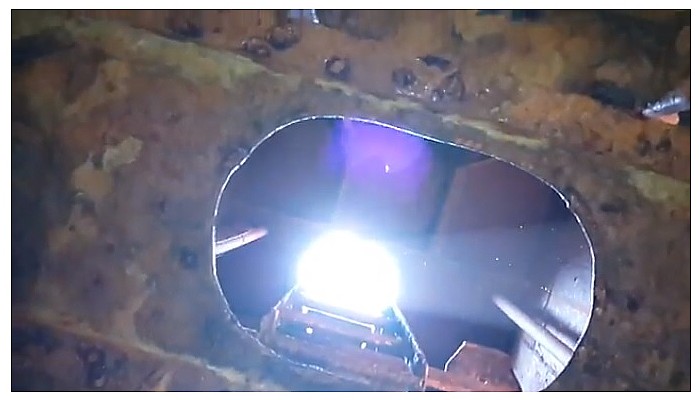
本フォーラムでは、国際基準に満たない質の悪い船舶(サブスタンダード船)の国際的排除を目指し、関係国と海事国際社会が協調してPSCに取り組むため、日本人初の国際海事機関(IMO)事務局長関水康司氏をはじめ海事産業の国際団体の代表が一堂に会するものです。
アジア太平洋地域における外国船検査(ポートステートコントロール)協力20周年を記念したフォーラムの開催について(PDF形式) (国土交通省)
上記のようなフォーラムが開かれても、PSCによる検査の現状を考えると現場と現場を知らない人達のギャップを感じる。
中国運輸局ホームページに 「ポート・ステート・コントロール(PSC)とは」 と言うタイトルで、外国船舶の監督の内容、 サブスタンダード船 の説明、旗国の義務 、及び国際航海に従事する船舶が順守しなければならない国際条約について書いています。 これについては、下記の通りです。
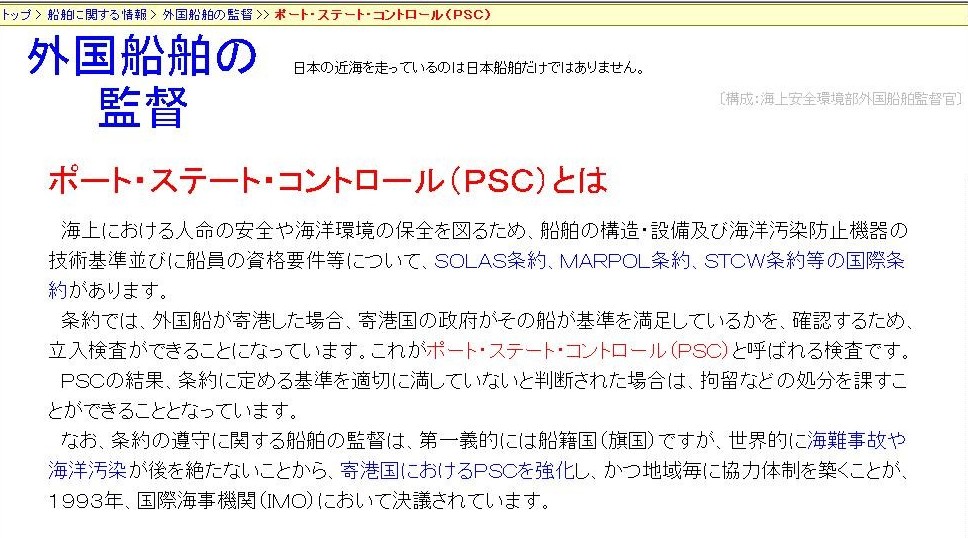
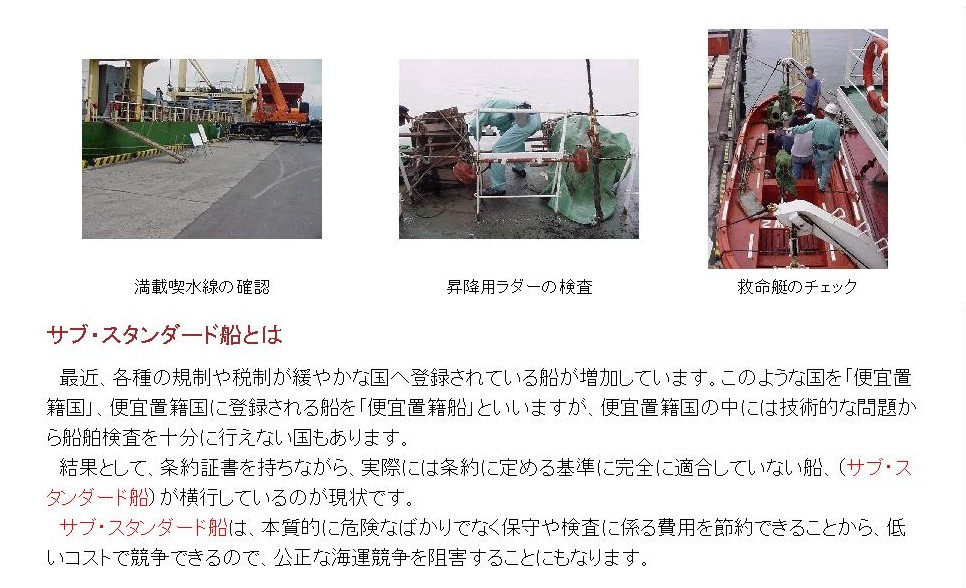
日本に入港する サブ・スタンダード船 が登録されている国を紹介します。基本的に問題のある旗国は世界中のどこでも同じですが、登録を行うオフィスや担当者が存在する、 又は、担当者達のコネクションや能力により特定のエリアで登録される隻数や運航される隻数には違いがあります。 良い仕事でも悪い仕事でも利用者にとって都合の良いサービスを提供する、マーケティングの才能がある、 PSC(外国船舶監督官)と癒着する、PSC(外国船舶監督官) に対して嘘を付くのが上手い、又は、これらの総合的な点で上手く対応できる場合は、登録隻数が増えるようです。 海難、偽造書類 や密輸船 問題で特定の船の国籍えお聞いたことがあるかもしれません。日本は 船が登録されている国の責任で管理及び監督すべきだと言っています。しかし、 現実は無理。出来ないから、それを承知で 利用している場合がある。 日本は欠陥船根絶で監査制度を国連の国際海事機関(IMO)に提唱。 日本に入港する外国船に対して厳しく検査している印象を与えれいるが、実際は 海保や外国船舶監督官による検査は甘い。
 ★ カンボジア籍船
:以前はホンジュラスやベリーズが有名でした。現在は、質の悪い船/登録されている隻数
では世界で一番だと思います。
★ カンボジア籍船
:以前はホンジュラスやベリーズが有名でした。現在は、質の悪い船/登録されている隻数
では世界で一番だと思います。
 ★ コモロ連合籍船
:日本では見かけられませんが、ヨーロッパ、中東、アフリカでは問題のある船籍として知られています。
★ コモロ連合籍船
:日本では見かけられませんが、ヨーロッパ、中東、アフリカでは問題のある船籍として知られています。
 ★ モンゴル籍船
:カンボジアの後に出来ました。以前、カンボジア船を登録した会社が登録業をしている。
★ モンゴル籍船
:カンボジアの後に出来ました。以前、カンボジア船を登録した会社が登録業をしている。
 ★ ツバル籍船
:日本で問題と見られている国籍では、一番新しい。以前、カンボジア船を登録した会社が
登録業をしている。
★ ツバル籍船
:日本で問題と見られている国籍では、一番新しい。以前、カンボジア船を登録した会社が
登録業をしている。
![]() ★ グルジア籍船
:日本で出港停止命令を受けた船舶が増えた。ツバル籍船の次になるのか。
★ グルジア籍船
:日本で出港停止命令を受けた船舶が増えた。ツバル籍船の次になるのか。
連絡先の情報については、
AMSA(オーストラリア)のHPを参考にしてください。
 ★ シエラレオネ籍船: 北九州で大量の麻薬が見つかり、船主は行方不明になり船が放置された事件に認知度がアップ。また、東京・伊豆大島沖で2013年9月、丸仲海運が所有する貨物船「第18栄福丸」が中国企業所有のシエラレオネ籍船貨物船「JIA HUI」と衝突し、栄福丸の乗組員六人が死亡した事故でさらに注目を集める。
★ シエラレオネ籍船: 北九州で大量の麻薬が見つかり、船主は行方不明になり船が放置された事件に認知度がアップ。また、東京・伊豆大島沖で2013年9月、丸仲海運が所有する貨物船「第18栄福丸」が中国企業所有のシエラレオネ籍船貨物船「JIA HUI」と衝突し、栄福丸の乗組員六人が死亡した事故でさらに注目を集める。
![]() ★ トーゴ籍船:日本ではまだ少ない。
★ トーゴ籍船:日本ではまだ少ない。
![]() ★ パラオ籍船:日本でも見られるようになった。
★ パラオ籍船:日本でも見られるようになった。
上記の問題が結果として
サブ・スタンダード船が座礁した時、多くのケースで放置され、多くの自治体を困らせた。
北朝鮮による拉致問題が注目を受け始めたころ、北朝鮮の貨物船が座礁しメディアが一斉に取り上げた。
北朝鮮籍船を主にターゲットにしたと思うが、
サブ・スタンダード船
を日本に入港させない目的で、船舶油濁損害賠償保障法
が適用された。これにより、以前よりも
サブ・スタンダード船
の入港が多少減ったと思われるが、期待されるほど減少しなかったと思う。
座礁及び放置船問題も2015年の現在でも解決されることもなく、現在進行形の状態である。
理由はまともな検査会社が検査した船舶しか船主責任保険(PI保険)等への加入が出来ないと
思われたが、船主責任保険(PI保険)に加入させる保険会社の存在が船舶油濁損害賠償保障法
をかなり骨抜きにした形となった。また、日本の政府や地方自治体の対応の悪さも悪い景況を与えた。
参考:
「外航船舶は2005年3月1日より、船主責任保険(PI保険)等への加入が義務付けられます。
無保険の船舶は入港が禁止されます。」
しかし、船舶油濁損害賠償保障法
の適用前後から、
問題がある検査会社
が検査した船舶に対しても船主責任保険(PI保険)への加入を受け入れる保険会社が出てきた。
サブ・スタンダード船
であっても船主責任保険(PI保険)に加入し、国土交通省が確認した証拠として発行する「一般船舶保障契約証明書」
を保持していれば日本には入港できる。
サブ・スタンダード船
の取り締まりは、
PSC(ポート・ステート・コントロール)
の経験、能力及びやる気次第となった。
Hw Global IMO 8914037 Flag: Panama built: 1990(ShipSpotting.com)
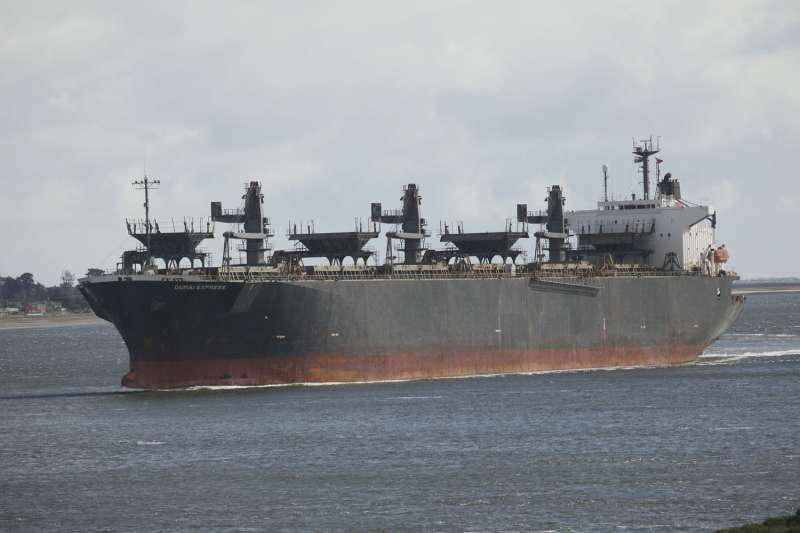
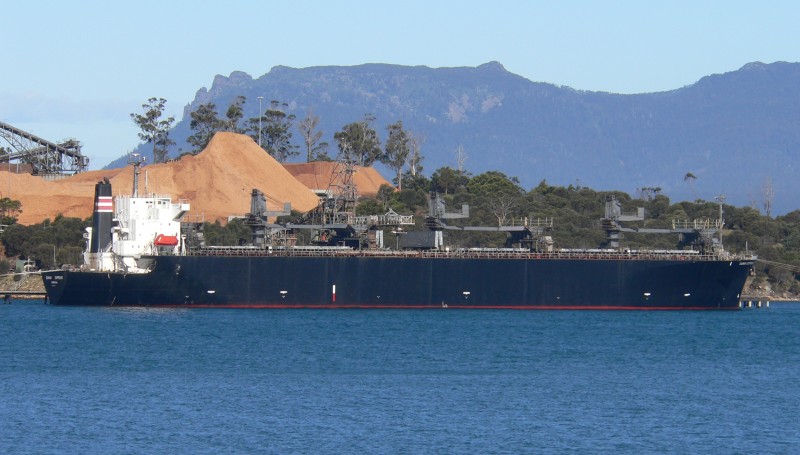
今度はシエラレオネ船籍の大型船が出港停止命令を受けた。 シエラレオネ船籍船は日本に麻薬を運んできたり、 不適切な免状の船員が操船する船が日本の内航船に衝突して、衝突された船に保険金が支払われずに泣き寝入りの状態になった。 大型のサブスタンダード船が日本で大きな損害を与えるまで時間的にそう遠くないかもしれない。
ENY IMO 8905490 Flag: Sierra Leone (Ex-Cambodia) built: 1989(ShipSpotting.com)
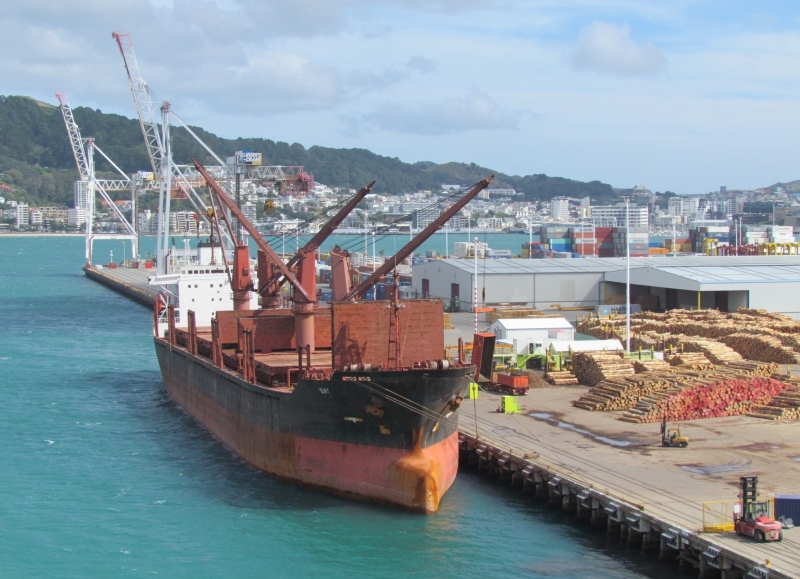
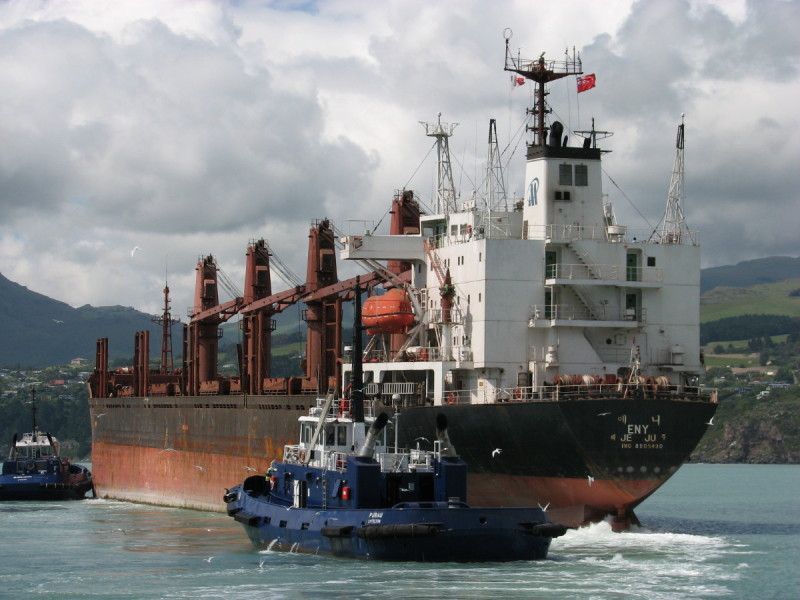
SOUTH HILL 2 IMO 8412467 Flag: Sierra Leone (Ex-North Korea) built: 1984(ShipSpotting.com)
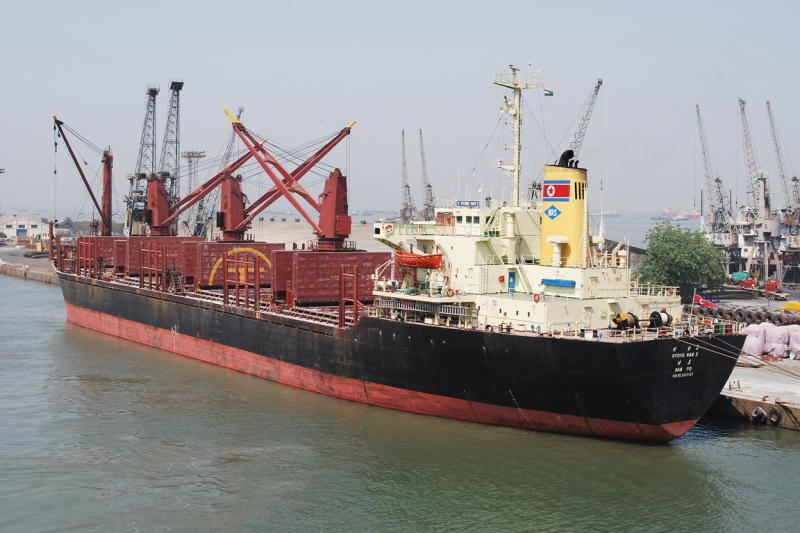
Oriental Sunny IMO 8318817 Flag: Cambodia built: 1985(ShipSpotting.com)
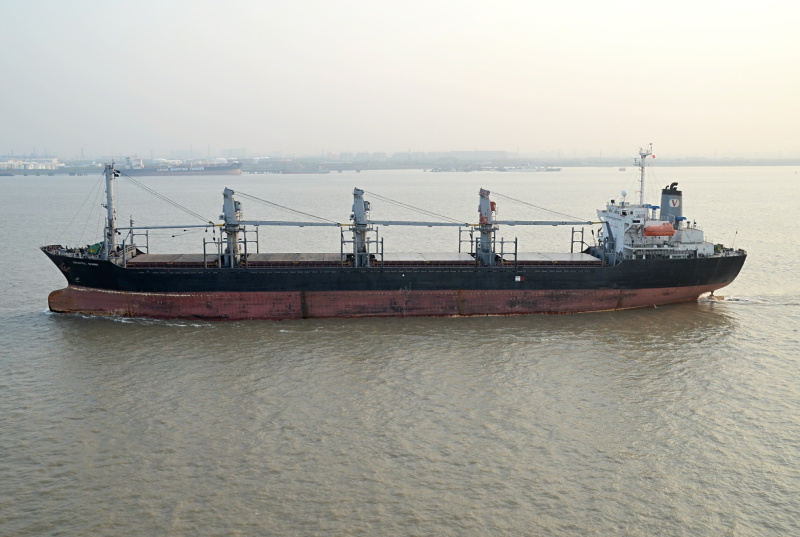
カンボジア船籍船 AN FENG 8 IMO 9365726の無責任な放置に成功したケースで 気を良くした中国船主が増えたのか、国際船級協会連合(IACS)でない検査会社(2流、又は3流)が 検査した船が大型化している。これまでは総トン数1万トンを超えた船はほとんど見られなかったし、日本にもほとんど入港しなかった。しかし、このような 船(サブスタンダード船の可能性が高い)が座礁したり、沈没したらどれほどの被害が出るのか?とてつもない額である。 ベリーズ船籍貨物船「GOLD LEADER」(総トン数1466トン、日本船籍内航船の時の総トン数683.96トン)が沈没した時の被害は約52億円。(参照:【第171通常国会】衆議院・国土交通委員会) 総トン数1500トンで52億円の被害である。総トン数1万トンの船の被害はとてつもない額になることが予測される。船の燃料タンクの容量も比べ物にならないほどに 大きい。保険に加入しているから安心と思っていたら大間違い。保険会社は船又は船員の免状や操船に問題があることを理由に支払いを拒否する可能性が非常に高い。 サブスタンダード船はいろいろな面で保険会社が支払いを拒否する問題を大きく抱えている。保険の加入は 気休めである。大きな損害を出す海難を起こす前にこのようなサブスタンダード船の厳しい検査を行わなければ とんでもない事になることを忠告します。このサイトを見た方で、利害関係がある人は行政に相談して早急の対策を求めてください。いつ大きな損害が出るかは 運次第です。
Lucky Future IMO 8822260 Flag: Panama built: 1989(ShipSpotting.com)
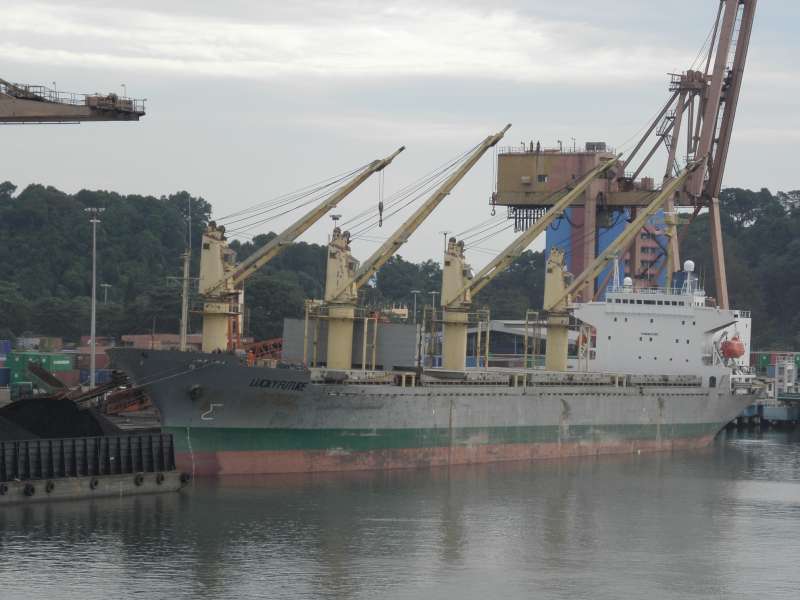
船舶油濁損害賠償保障法 の適用後でも曖昧だった日本から出港する外国籍船について、 国土交通省は十分な説明をおこなうべきだと思うが 適切な対応はない。
カンボジア船籍船はサブスタンダード船である可能性が
非常に高い。サブスタンダード船ある可能性が高い カンボジア船籍船
が加入する保険会社は2流、3流の保険会社である可能性が高い。 カンボジア船籍船を検査して国際条約で要求される
証書を発給する検査会社のほとんどは3流。
類を以て集まる(類をもって集まるとは、似た者同士は互いに寄り集まることのたとえ。また、善人の周りには善人が集まり、悪人の周りには悪人が集まるということのたとえ。)(故事ことわざ辞典)
海難(座礁等)が起こればどのような事になるのか想像できる。
しかし、被害者になるまではどこの自治体も他人事。被害を被った地方自治体も問題が去ってしまえば、防止対策を要求する行動は起こさない。
そして同じ事の繰り返し。これは15年以上も続いている。
国土交通省のPSC(外国船舶監督官)達に厳しく検査する事を要求していくしかない。または、法の改正を要求するしかないだろう。
抜本的な対応が取れない、又は取らない行政は自業自得なのかもしれない。問題は今でも存在する、ただ、ロシアンルーレットのように当たらなければ何もないのと
同じなのであろう。今回は、深浦町に座礁船問題がやってきた。ただそれだけである。深浦町に座礁船問題は改正船舶油濁損害賠償保障法が完全ではなく、どのような座礁問題に対しても機能しない事を証明した。この点においては地方自治体の深浦町及び青森県が苦労する事で一部の人々にはアピール出来たと思う。本当に国土交通省や日本政府に苦労が届いたかどうかは疑問。サブスタンダード船に対して日本は今でも甘い対応を取っていると思う。船主が座礁の尻拭いに対して発生した費用の支払いを拒否すれば、町民、市民、県民又は日本国民が負担するだけである。そして増税により集められたお金で負担する。国土交通省、外務省そして日本政府は町民、市民、県民又は日本国民に負担を押し付けるだけで、問題の解決及び防止策に対しては興味がないことを行動で示していると思う。これが現実。残念ではあるが深浦町民や青森県民は泣くしかない。
何も知識が無いって言う事はポジティブに考えることが出来る。!なぜカンボジア籍船がサブ・スタンダード船の船主や運航者に選ばれるのか知っていたら「今度はまともな船主であってほしい」と思えないだろう。まともな船主はカンボジア籍船を選ばない。
下記の記事を読む限り、青森県はカンボジア船籍の貨物船アンファン号からさほど教訓を得ていないようだ。カンボジア籍船に対する理解度も浅いようだ。まあ、最善の結果を出せなくとも努力だけしていれば給料が貰える公務員達の集団だから仕方が無いのかもしれない。下記の記事を参考にして日本政府又は国土交通省に働きかけるべきだ。オーストラリアを見本にすれば問題の解決について前進するだろう。少なくとも日本の港に入港するサブ・スタンダード船は減るであろう。つまり海難の確率が下がると言う事。
オーストラリア海上保安庁 (The Australian Maritime Safety Authority (AMSA))はインドネシア船籍貨物船「MERATUS SANGATTA (IMO:9116797)」号に対して3ヶ月間、オーストラリアの全ての港に入港させない措置を取った。これは2013年7月から実施された改正航海条令 (the revised Navigation Act which came into effect in July 2013)に基づいた措置だ。
青森県や深浦町はオーストラリアの改正航海条令のような法律の制定を地元の国会議員そして国土交通省に要求するべきだ。同様の法律が制定され、PSC (外国船舶監督官)が適切に検査を行い、出港停止命令を出せば、サブスタンダード船は日本に入港できなるなる。
日本郵船、川崎汽船、そして商船三井になぜカンボジア籍船の船を所有していないのか広報部に問い合わせてみれば良い。選択肢にも入っていないから良く知らないかもしれない。
国際運輸労連 - ITF TOKYO又は全日本海員組合 (JSU)にカンボジア籍船について問い合わせてみれば良い。夢も希望も砕け散るだろう。

青森県鯵ケ沢町の沖合で昨年12月、カンボジア船籍の貨物船が沈没した事故で、県が漁業被害などへの懸念を募らせている。隣の深浦町でも2013年3月に同国籍の貨物船が座礁。船主が所在不明のまま近くに放置され、県が行政代執行による巨額な撤去費用の負担を決めたばかり。「今度はまともな船主であってほしい」と関係者は心配している。
沈没したのは「MING GUANG(ミン クーアン)」(1915トン)。12月26日午前6時5分ごろ、函館港から韓国に向かう途中、鯵ケ沢町の北西約18キロ沖で沈没、外国人乗組員全10人のうち中国人とミャンマー人の計3人が死亡した。
県によると、青森海上保安部の今月4日の調査では、沈没地点から半径20メートルに油が浮き、油膜は南東に約900メートル、幅50メートルに広がった。漁業被害は確認されていないが、底引き網漁船3隻が付近での漁を見合わせている。船体には約34トンの油が残っているという。
13年に座礁した貨物船をめぐっては、県が船主の中国人3人に国際郵便などで再三撤去を求めたが返事がなく、結局、数億円の撤去費用を公費で賄う方針を決めた。
今回沈没したのは沖合の深い場所で、前回と異なり県が管理する海岸付近などの保全区域ではない。行政代執行で撤去する可能性は低いとみられ、船の保険会社の代理人も「引き揚げは技術的に難しい」と説明する。
だが油が海岸に漂着する恐れがあり、漁業被害が広がれば、第一義的な責任は船主側が負うことになる。県としては被害対策のためにも、前回のように船主と連絡が取れない状況は避けたい。
地元漁業者との補償に関する話し合いは始まったばかりで、青森海保や県、町、保険会社の代理人らが参加する連絡調整会議で、議論を本格化させる見通しだ。
三村申吾知事は5日の定例記者会見で「国際的な問題も絡み前回は大変苦労した。漁業被害が出ない対応などを船主には強く求める」と話した。
オーストラリア海上保安庁 (The Australian Maritime Safety Authority (AMSA))はインドネシア船籍貨物船「MERATUS SANGATTA (IMO:9116797)」号に対して3ヶ月間、オーストラリアの全ての港に入港させない措置を取った。これは2013年7月から実施された改正航海条令 (the revised Navigation Act which came into effect in July 2013)に基づいた措置だ。
青森県や深浦町はオーストラリアの改正航海条令のような法律の制定を地元の国会議員そして国土交通省に要求するべきだ。同様の法律が制定され、PSC (外国船舶監督官)が適切に検査を行い、出港停止命令を出せば、サブスタンダード船は日本に入港できなるなる。
|
| |
|---|---|
| Ship Name: | MERATUS SANGATTA |
| Type of Ship: | GENERAL CARGO |
| Flag: | INDONESIA |
| IMO: | 9116797 |
| Gross Tonnage (ITC): | 2532 tons |
| Year of Built: | 1996 |
| Builder: | SLOVENSKE LODENICE - KOMARNO, SLOVAKIA |
| Class Society: | GERMANISCHER LLOYD |
| Manager & owner: | MERATUS LINE - SURABAJA, INDONESIA |
| Former name: |
BAVARIA until 2011 Nov GEISE until 1996 Jul 30 |
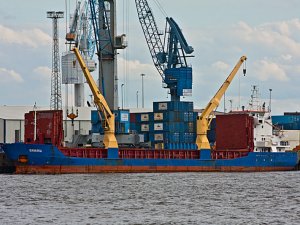
The Australian Maritime Safety Authority (AMSA) has issued a direction to Indonesian flagged multipurpose ship MV Meratus Sangatta (IMO 9116797) not to enter or use any port in Australia for three months.
The 1996-built, 3447 dwt general cargo ship has been detained three times since November 2012 and twice since November 2014. As a result it will not be allowed to re-enter Australian ports until April 6, 2015.
MV Meratus Sangatta was detained in Port Alma, Queensland on January 2 despite AMSA urging the ship’s operator, PT. Meratus Line, to improve its performance following the banning of another of its vessels, Territory Trader, in Cairns in November last year.
AMSA Chief Executive Officer Mick Kinley said a complaint was received in accordance with the Maritime Labour Convention (MLC) ahead of an inspection of the ship last week.
““The recent detention found numerous failings in compliance with the MLC, which place the welfare of seafarers at risk,” Kinley said. “The more serious of these deficiencies included not having enough food and potable water for the next voyage, defective and insufficient refrigerated storage to safely store fresh food, defective laundry, sanitary and cooking facilities, as well as expired Seafarer Employment Agreements (SEA).“
Kinley said ships operated by PT. Meratus Line would now be subject to inspections at every port call.
The vessel was required to rectify deficiencies identified during the inspection before it was released from detention from Port Alma.
The vessel is the third to be banned from Australian ports under the revised Navigation Act which came into effect in July 2013.
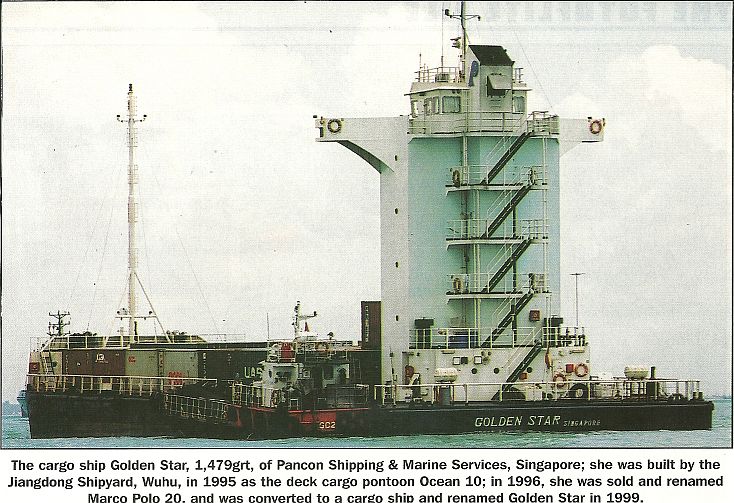 |
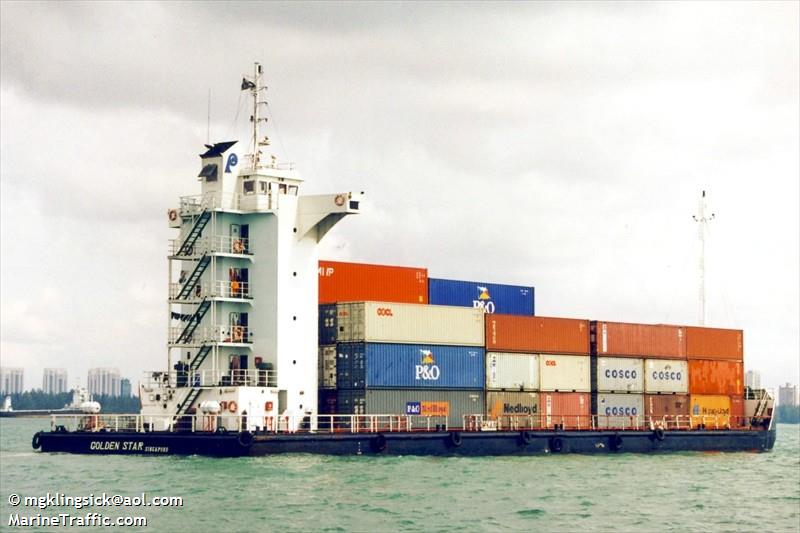 |
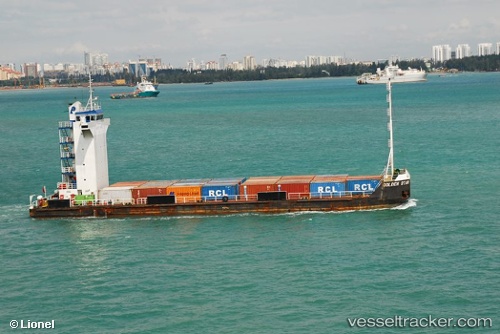 |
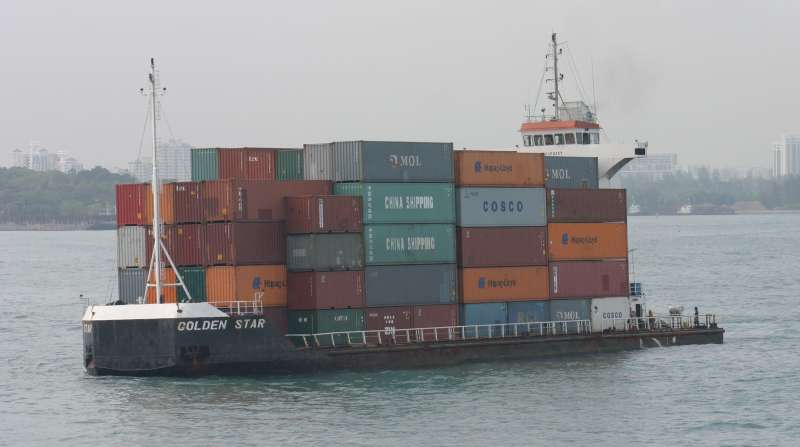 |
|---|
|
| |
|---|---|
| Ship Name: | GOLDEN STAR |
| Type of Ship: | GENERAL CARGO |
| IMO: | 8952857 |
| Flag: | KIRIBATI (EX-SINGAPORE) |
| MMSI: | 563000150 |
| Gross Tonnage (ITC): | 1479 tons |
| Year of Built: | 1995 |
| Builder: | JIANGDONG SHIPYARD - WUHU, CHINA |
| Class Society: | International Ship Classification (EX-REGISTRO ITALIANO NAVALE) |
| Manager&Owner: | PANCON SHIPPING & MARINE SERVICES - SINGAPORE |
| Former name: |
MARCO POLO 20 until 1999
ORIENT 10 until 1996 MARCO POLO 20 until 2018 Nov 30 |
ざる法の
改正船舶油濁損害賠償保障法を改正するか、サブスタンダード船である船が非常に多いカンボジア船籍船の検査を強化するしか、防止又は対応策はない。
運が悪ければカンボジア船籍の貨物船「AN(アン) FENG(ファン)8」や「MING GUANG」だけでなくさらなる海難も周辺で起きるかもしれない。利害関係者は国土交通省又は地元の国会議員に法の改正を要求するべきだ。法が改正されるとは思わないが自分であれば行動だけは起こす。愚かであるが、行動を起こせないのであればこのまま我慢するしかない。気持ちだけの安らぎであれば神頼みも良いかもしれない。
サブスタンダード船そしてその保険会社のレベル船主について嫌でも少しは理解できたであろう。
深浦町から北に約14キロの海上でカンボジア船籍の貨物船「MING GUANG」が沈没した事故で、沈没船の保険会社に事故内容や損害を報告するサーベイヤー(検査員)のアジア地区責任者の王国瑞氏らが30日、保険会社の代理人として鯵ケ沢町を訪れ、関係者と今後の対応を話し合った。王氏らは能力、実績がないことを理由に沈没船を引き揚げないことを明言、実質的な被害は出ていないとし、沈没船が障害となって出漁できないことで補償を求める漁業者との話し合いは平行線のままだった。
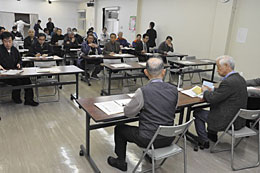
鯵ケ沢沖でカンボジア船籍の貨物船「MING GUANG」号が沈没した事故で、船主が加入する保険会社側の検査員は30日、地元自治体などに対し「船体撤去は不可能」として事実上、船を放置する考えを示した。船の腐食が進み、船内に30トン以上残留しているとみられる燃料油等が流出すれば、現場海域で漁業被害を招く恐れもある。
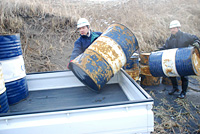
深浦町から北に約14キロの海上でカンボジア船籍の貨物船が沈没した事故で、30日に船主が鯵ケ沢町に来町し、関係者が今後の対応を話し合うことになった。また、29日につがる市南広森の海岸で貨物船からの漂着物とみられるドラム缶3本とライフジャケットなどが打ち上げられているのが見つかった。鯵ケ沢町では、打ち上げられた15本のドラム缶を一時、別な場所に保管してほしいと沈没船の保険会社の代理人から依頼があり、職員が撤去作業を行った。
深浦沖で沈没したカンボジア船籍の貨物船周辺では26日午後4時現在、油の流出などによる漁業被害は確認されていない。しかし沈没地点は今後、トロール船が旬のタラやサメ漁を行う海域で、漁網が沈没船に引っ掛かる恐れがあるため漁ができない。また、油が流出すれば西海岸の漁業が大打撃を受けることになる。地元の漁業者は「厄介なものを置いていってくれた」と憤る。
参院本会議で海岸法の改正法案が可決、成立したことに伴い、県は4日、昨年3月に深浦町の海岸で座礁したまま放置されているカンボジア船籍の貨物船「AN FENG(アンファン)号」(1996トン)について、中国人船主3人に撤去命令を出す方針を固めた。船主の所在が確認できていないことなどから手続きは難航する見通しで、県は撤去時期に関し「年内は難しい」と見ている。
県と深浦町などは今年3月まで計11回にわたり、船主や船舶管理会社などに座礁船の撤去を要請したが、回答がない状況。県がこれまで船の固定や油の抜き取り作業などに費やした費用約5000万円の支払いも、保険会社が応じていない。
改正海岸法では、現行法で対象外とされていた海上の座礁船について、海岸管理者の県が船主に法的な撤去命令を出し、履行されない場合は行政代執行で撤去することが可能になる。三村申吾知事は4日の定例記者会見で「実務上の手順を踏んだ上でしっかりと措置を講じたい」と話し、撤去に向けた手続きを進める方針を示した。
青森県は同県深浦町の海岸で昨年3月に起きた貨物船の座礁事故で、今夏にも中国人3人の船主に撤去命令を出す方向で検討に入った。
海岸管理者が座礁した船舶の撤去命令を出せる範囲を広げた海岸法改正案が4日の参院本会議で成立する見通しとなったためだ。ただ、船主の所在を確認できていないため、撤去に向けた手続きは難航する可能性がある。
改正案は、海岸管理者が海岸保全区域内で船舶の座礁事故が起きた場合、船舶の所有者に撤去命令を出せるようにしたことが柱の一つだ。所有者が所在不明で撤去命令を出せなければ管理者が自ら撤去することも可能にした。現行法では、撤去命令を出せる範囲が砂浜に限定されており、少し離れた海中にある座礁船は対象外のため、県は法的な対応が取れなかった。
改正案は3日の参院国土交通委員会で全会一致で可決した。4日の本会議で成立し、8月上旬に施行される見通しだ。県は「問題解決に向けて一歩前進した」と歓迎しており、早ければ8月にも撤去命令を出す。
県河川砂防課によると、県と町は船主側に国際郵便などで11回撤去を要請したが、今のところ返答はないという。県は撤去命令を出すため、船主の所在確認を急ぎたい考えだ。
所有者の所在が確認出来ない場合、簡易代執行で県が撤去できる。ただ、貨物船の撤去費用は数億円かかるとみられ、県は「粘り強く船主に撤去を求めていきたい」(幹部)との立場だ。安易に簡易代執行すれば「悪い前例」を作ることになるからだ。
横森源治県土整備部長は3日の市町村長会議(町村の部)で、撤去時期について「年内の撤去は厳しい」との見通しを示した。
◆座礁事故=青森県深浦町岩崎地区の海岸で昨年3月、カンボジア船籍の貨物船「AN FENG(アンファン)8」(1996トン)が座礁し、ベトナム人と中国人の乗組員12人が救助された。県と町は中国人の船主3人に再三撤去を求めてきたが、返答はなく、仲介する保険会社側は「撤去について船主の承諾が取れない」と説明している。県は船体が沖に流れないようにするため、ワイヤで固定する作業など約5000万円の費用を投じた。
マレーシアで出港停止命令を受けたモンゴル船籍INAI MERAH (IMO: 8662452)は問題のある曰くつきの船のようだ。
ペナン沖に沈む羽黒や球磨を違法サルベージしていた業者を逮捕 09/10/14 (いぷしお雑想ノート)
マレーシアの英字新聞THE STAR ONINEが5月23日、マレーシア海事当局はケンディ島沖で作業中のサルベージ船を発見し不法行為を行っていたとして乗組員を逮捕したと報じています。 発見時このサルベージ船は日本の特設砲艦「長沙丸」の引き上げ作業をしており、中国国籍の船長と乗組員9名を逮捕し引き上げられた残骸や取引先の調査、余罪の洗い出しを行っているとのこと
※引用先(1)
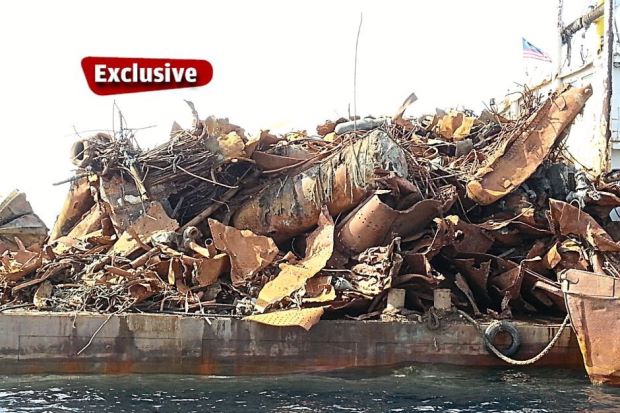
おなじくマレーシアの英字新聞THE STAR ONINEが5月22日付で
ペナン島沖で、サルベージ業者が今年に入り少なくとも5隻以上の沈船を鉄くず回収目的で当局に無許可で引き上げたと報じています
同紙によると不法引き上げの被害にあった沈船の中には旧日本海軍の軍艦、重巡洋艦「羽黒」、軽巡洋艦「球磨」、特設砲艦「長沙丸」が含まれています
•業者がマレーシア当局に無届でサルベージ作業を行っている
•沈船が漁礁として地元の大切な漁場になっており漁業者に被害が出ている
•大戦中に亡くなった水兵たちの墓標であり慰霊の場であること
などの問題点を同紙は解説し、地元から業者に対する非難や中止を求める声が上がっていることを伝えています
※引用先(2)(3)
8月14日NHKニュース9で、この件について特集が組まれ流されましたが、マレーシア現地業者と誤解しそうな表現を使われていましたので気になり調べてみました。
元ソースであるマレーシア紙THE STAR ONINEを読み、鮮明が記されているので海事ポータルからこの当該船について調べました
HAI WEI GONG 889
•IMO:8662452
•船型:クレーン船
•建造:2007年中国福建省 FUJIAN XINCHANG SHIPBUILDING
•母港:丹東
•船籍:中国→カンボジア
※引用先(4) ※引用先(5)
この違法サルベージ作業船は乗組員や船歴からして地元の業者ではなく中国の業者と見るのが妥当なようです
地元漁業者の生活の糧であり、大戦の慰霊の場であり、ダイビングスポットとして観光資源になっているペナン島沖の戦没艦船を無許可で鉄屑として転売しようという業者の行為は許されることではありません
戦時中に海没した艦船が違法サルベージ業者に狙われる事案が他にも
バタビア沖海戦で沈没した豪海軍軽巡洋艦「パース」
マレー沖海戦で沈没した英海軍戦艦「HMSプリンス・オブ・ウェールズ」「HMSレパルス」
などでも起こっており英国政府もこれら海の墓標を荒らされることに深い懸念を発しています
※引用先(6)
THE STAR ONINE紙の一連の報道に注目が集まるにつれてマレーシア当局も取り締まりに本腰を入れはじめたようですが、これ以上死者の眠りを妨げるような事のないよう願っています
by eddie chua
PETALING JAYA: A ship that illegally stripped shipwrecks off Penang island for scrap metal has been detained and impounded by the northern region Marine Department.
There was a mountain of rusty ship parts and salvage work was in progress when the agency’s officials boarded the ship, which is equipped with a crane, off Kendi Island.
The agency had been alerted about the illegal operation after The Star first discovered the salvaging there last week.
The Cambodian-registered vessel was caught red-handed dredging the Chosa Maru wreck, better known as the Japanese wreck among locals. The skipper and his nine-man crew, all Chinese nationals, have been arrested.
Aside from seizing the ship, the authorities impounded a workboat that accompanied Hai Wei Gong 889, a Chinese-made vessel that was commissioned in 2007.
“The ship does not have the documents for salvage work and was operating illegally in Malaysian waters,” a marine department official said.
The ship, workboat and its crew had been ordered to sail to Lumut, where the ship is now impounded.
“We are also investigating where the vessel had disposed the scrap metal after salvaging at least five shipwrecks off Penang, including the two Japanese World War II wrecks,” the official said.
At this point, he said, the authorities were investigating who the buyer of the scrap metal was.
“The department is also investigating how long the ship had operated in Malaysian waters illegally and whether it had looted other areas besides Penang.”
The official said the department was investigating if the vessel had plundered other ships, both commercial and military, off the east and west coast of Malaysia.
The Star reported yesterday that illegal salvagers had plundered scrap metal from at least five shipwrecks, including two Japanese World War II vessels, off Penang waters since early this year and their activities had gone undetected by the authorities.
The unscrupulous salvagers were believed to have “cleared up” at least two wrecks – the Japanese gunboat Chosa Maru, called Kapal Jepun by locals, which sunk in August 1943, and Japanese light cruiser Kuma that went down on January 1944 – and had taken away metal worth millions.
The other three wrecks that are being salvaged are Japanese warship Haguro, Kapal Taiwan and Kapal Simen, which are all located off Kendi Island.
UK-based trade union for maritime professionals Nautilus International has released details of a vessel detained in port, and which has been described as a ‘Mickey Mouse operation’.
Panamanian-registered bulk carrier Donald Duckling, owned by TMT Shipping of Taiwan, was detained by the Maritime & Coastguard Agency in the Port of Tyne & Wear, after an inspection revealed a long list of serious deficiencies. Crew members are said to have had such poor food provisions onboard that they were forced to catch fish from the side of the vessel which they had to cook on deck using dunnage because galley equipment was out of order.
The 16-year-old ship had previously been detained for 121 days in Gibraltar, when 21 safety deficiencies were found by port state control officers, and in September an inspection in Las Palmas found 33 deficiencies onboard. The chief engineer had been dismissed after requesting spare parts to rectify problems identified in the port state control inspections.
Nautilus/International Transport Workers’ Federation inspector Tommy Molloy is helping the crew members, and said the vessel was one of the worst examples of substandard shipping that he has encountered.
Crew members had not been paid on time on a number of occasions, he added, and formal requests by two seafarers to be repatriated because of family illnesses had been ignored.
“The fact that the vessel has been detained for such periods of time and for the nature and scope of the deficiencies provides clear grounds, in line with their contracts of employment, for the crew to claim repatriation due to breach of contract,” said Mr Molloy.
“The vessel is clearly not seaworthy - which ought to be of grave concern to the charterers and cargo receivers. It is clear that the crew would have been placed into potential danger had the ship left port for the voyage,” he added.
The ship had arrived in Tyne Port to load a cargo of scrap metal bound for Korea. Mr Molloy has written to the shipowner requesting the payment of owed wages and the repatriation of some of the crew due to a breach of contract, in line with their contractual entitlement. He said the onboard contractual documentation for the Romanian and Filipino crew members was not in compliance with international Maritime Labour Convention requirements.
“We are aware that TMT has been having problems, but this does not excuse the outrageous treatment of the crew in this case,” said Mr Molloy. “The ship is called Donald Duckling, and it certainly is a shocking example of a Mickey Mouse operation that undermines operators who run to decent standards.”
北朝鮮の船舶の老朽化が深刻な状況だ。平均船齢は、世界平均を大きく上回っていると、米政府系のボイス・オブ・アメリカ(VOA)が報じた。
アジア太平洋地域の船舶を管理監督し、加盟国の船舶を対象に安全検査を行っている東京MOUの資料によると、昨年検査を受けた北朝鮮の船舶は129隻。うち63隻は建造から30年を超えており、11隻が40年を超えていた。
また、一般的に「老朽船」とされる20年以上で30年以内のものが44隻。建造から10年経っていない新造船は4隻に過ぎず、平均船齢は29年だった。
国際海事機関(IMO)の調べでは、2010年末現在、世界の船舶の平均船齢は22年、貨物船は19年だ。それを考えると、北朝鮮の船舶の老朽化がいかに著しいかがわかる。
老朽化だけでなく、メンテナンスの不良も著しい。
今月11日、長崎県の五島列島の沖合で、浸水した北朝鮮船籍の貨物船「CHONG GEN」号が救難信号を発した。海上保安庁が現場に向かい、乗組員26人全員が救助された。「CHONG GEN」号の船齢は27年だった。
東京MOUの資料によると、この船は昨年4回の安全検査を受けて、そのたびに10ヶ所以上の欠陥を指摘されていた。また、昨年11月には中国山東省の日照港当局から停船を命じられている。
この資料の対象となっていないが、北朝鮮の木造漁船は遭難、漂着、沈没などの事故を度々起こしている。
昨年11月、京都府舞鶴市の岩場に北朝鮮のものと見られる木造船が漂着した。船内からは白骨化した9人の遺体が発見された。また、先月にも佐渡島の沖で木造船が発見され、船内から白骨化した遺体が2体収容された。
日本では、老朽船はメンテナンスコストがかかるという理由で、概ね18年程度で売却される。また、韓国では海運法で20年以上の船舶は毎年検査を義務付けられ、30年以上の船舶は運航が禁止されている
一方の北朝鮮では、船舶の多くが老朽船だ。おそらく、国際社会の経済制裁による外貨不足で、新造や修理に必要な原材料が輸入できないためと思われる。
4000年の歴史のある中国の造船技術はすばらしい。
船体破断し、沈没した型コンテナ船MOLコンフォートと比べると、船の幅に対して長さはかなり短い。船体強度に問題があるか、違法な過積載でなければおこらない事故だ。
Determination of representative hull strength (WBS和歌山放送ニュース)
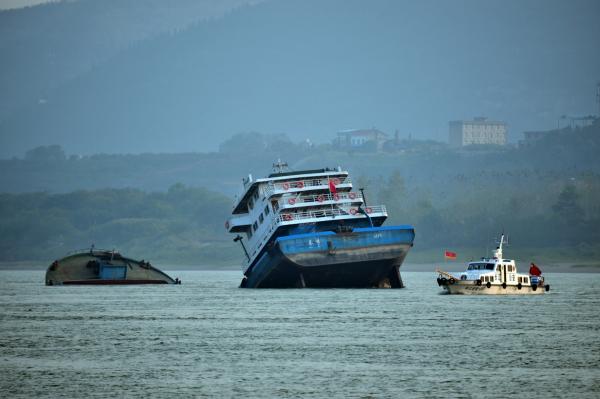 |
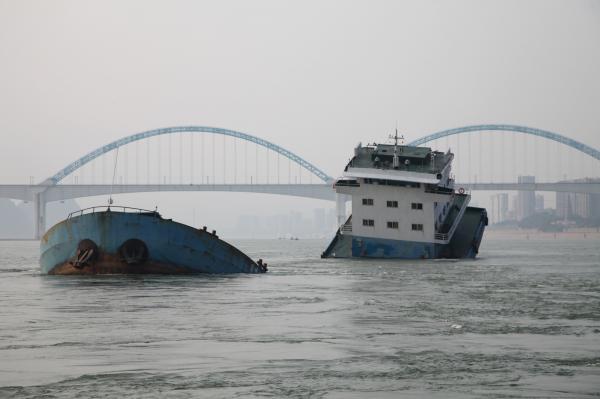 |
 |
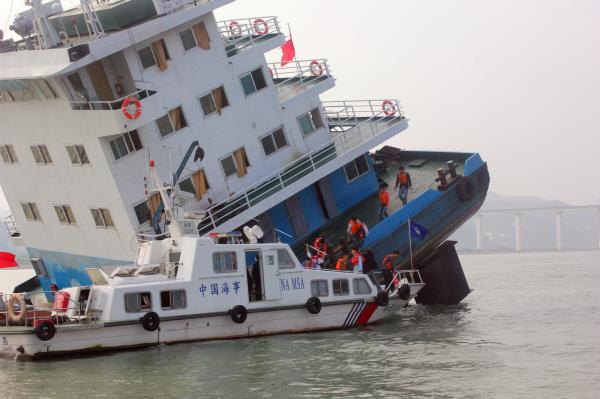 |
|---|
中国メディア・中国新聞網は22日、湖北省宜昌市を流れる長江で21日にチタン精鉱を積んだ貨物船が二つに裂ける事故が発生したと報じた。
事故が起きたのは同市の臙脂堰。事故当時船には10人が乗っていたが、全員救助されて死傷者はいなかった。同市海事局では緊急対策を実施、事故現場水域の監視を強化している。また、臨時の交通管制を発表し、現場の詳細な調査を進めている。
情報によると、船体が二つに裂けたのは重慶市奉節港船籍の貨物船で、重慶から江蘇省鎮江へ向かう予定だったという。4975トンのチタン精鉱を積載していた。
(編集翻訳 城山俊樹)
下記のニュースにリンクされている動画は興味深い。単に悪天候だけの問題じゃないと思う。安全とは思えない積み付けを指摘しない
PSC(外国船舶監督官)達にも問題があると思う。
Why cars and rough seas don't mix 07/29/13(Stuff.co.nz)
MATT CAMPBELL
It is not uncommon for cars to spend weeks on cargo ships en route to their destination - but sometimes the cars simply don’t make it.
推測でしかないが、当て逃げの多くはサブスタンダード船じゃないのか?
北九州市と山口県下関市を隔てる関門海峡で、航行安全のために設置した「灯浮標(とうふひょう)」(ライトブイ)と呼ばれる航路標識に、船舶が衝突する事故が多発している。
That scenario played out on a ship that experienced rough seas on a chaotic ocean crossing from Japan to Russia by the Cambodian vessel, Astongate.
According to the description of the dramatic vision uploaded to YouTube, the ship was carrying 64 used cars to Vladivostok, but following a storm and enormous swells, only 12 made it to the end. Further investigation suggests the incident may have actually occurred in February 2012, according to The Maritime Bulletin.
The vessel is described as being a Roll-on, Roll-off (RO-RO) ship, which are commonly used for shipping cars. In most cases, however, the vehicles are secured in the hull of the ship, meaning they won't be exposed to the elements. In this instance, however, the cars were on the top-deck.
The video shows several cars falling over the edges of the ship, and it appears there are broken tie-down straps littered over the deck.
The person who paid for the cars to be carried on the top deck of the ship reportedly signed a document acknowledging the risks involved.
There have been other well-documented incidents involving RO-RO ships, including the sinking of the MS Herald of Free Enterprise in 1987.
And even cargo ships with the cars secured in the hull can experience significant problems at sea. For example, the Norwegian carrier MV Tricolor sank in the English Channel in 2002, taking 2800 cars with it. And in 2006, a ship with nearly 5000 Mazdas on board tipped onto its side in rough seas.
海峡内には計34基の灯浮標を設けているが、昨年だけで9回衝突されたブイもあり、補修費の負担も大きい。第7管区海上保安本部(北九州市)は、海運会社などに注意を呼びかける一方で「有効な手立てがない」と頭を悩ませている。
◆難所のカーブ
下関市・長府漁港の南東約1・6キロにある「第35号灯浮標」。2001年に設置され、09年頃から被害が目立ち始めた。同年以降の5年間で、海峡内のブイは計39件の衝突被害に遭ったが、17件がこの35号に集中している。件数が最も多かった昨年は18件中9件、今年も10月末時点で4件中2件を占めている。
ブイは海面からの高さが約5メートルもあり、夜間はLED(発光ダイオード)が点滅し、航路であることを船舶に示す。しかし、相次ぐ衝突で、度々沈没させられた。10月20日未明も、福岡市の海運会社が所有する押船が35号に衝突し、海中に沈んだ。現在は仮設のブイが置かれている。
35号は瀬戸内海から関門海峡を西へ向かう船舶が左カーブする位置にある。航路内は右側航行が原則。7管は、船舶が逆流を受け航路外に押し流されたままカーブするため、衝突事故が発生しやすくなっているとみる。ただ、最近になって急増した原因は不明という。
◆当て逃げ被害
ブイの損傷による経済的損失も大きい。通常は加害船側が補修費などを負担するが、当て逃げされて加害船を特定できない場合は海保が支出することになる。
09年以降に発生した衝突事故39件のうち、ほぼ半数の19件は加害船を特定できておらず、7管は器物損壊容疑などで捜査している。同型のブイを新規購入すれば、1基当たり約1000万円は必要という。

2012年1月のPSC処分船リストによると門司港でカンボジア船籍船「XIN RUI 6 (IMO: 88904604)」 が日本のPSCから出港停止命令を受けた。理由の1つに「Cleanliness of engine room」があった。当然の事だと思うが日本のPSCが 「Cleanliness of engine room」で出港停止命令の理由とするは稀である。不備のカテゴリは「Living and working conditions」となっている。 ISMコードのメンテナンスでも指摘できると個人的には思う。
実際にどのくらいエンジンルームが汚いのか。写真で判断してほしい。写真の船はPSCから「Cleanliness of engine room」の指摘は受けていない。 個人的にはISM(国際安全管理規則)コードのメンテナンスで指摘できると思う。下記の船舶がSMS(マニュアル)に に従って維持管理されているとは過小評価しても思えない。PSC(外国船舶監督官)が 検査中に特別な場合を除いてエンジンルームに行っているのか知らないが、このようなエンジンルームを見て最低基準を満たしていると思っているので あれば 平成 18 年 6 月に国土交通省が 取得したISO9001 認証は機能していない事実の1つであると思う。下記の船は日本で内航船として建造された後、 外売され外国籍船となって日本に入港した船である。3隻の内、2隻はISM(国際安全管理規則)コードを満足している証明 としてSMCが発給されている。内航船の船員は自分の船と比較できるのでPSC(外国船舶監督官)の 検査基準が低いのか、高いのか判断してほしい。
ISM(国際安全管理規則)コードによる船舶安全管理認定書(SMC)を取得している船舶J
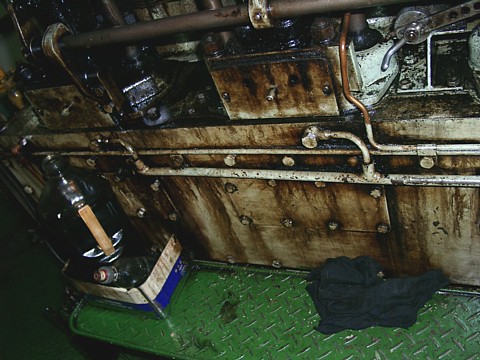
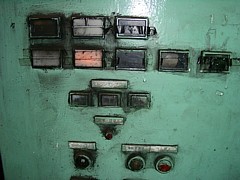 |
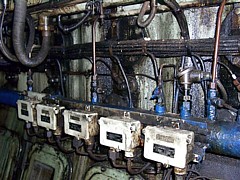 |
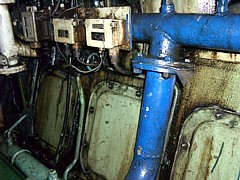 |
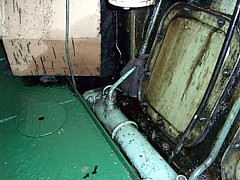 |
|---|
ISM(国際安全管理規則)コードによる船舶安全管理認定書(SMC)を取得している船舶D
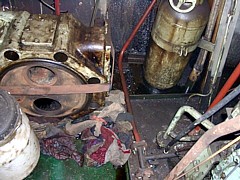 |
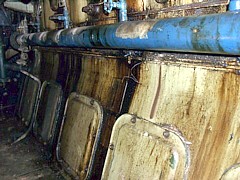 |
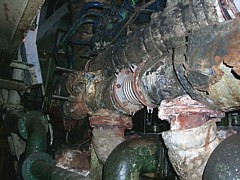 |
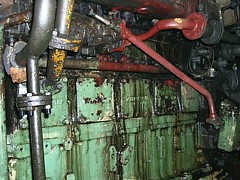 |
|---|
上記の写真のような不備を見落とすPSC(ポート・ステート・コントロール)
の検査ではサブ・スタンダード船は撲滅できない。見れば素人でも問題点を見落とさない。
「各国が自国の船をきちんと検査できるようになれば海難事故は減らせる」(国交省海事局)と言っている国交省海事局が現場を理解していない。
「各国が自国の船をきちんと検査できるようになれば海難事故は減らせる」(国交省海事局)と
発言している。現実を知った上での発言なのか、知らないから発言できたのかはわからない。しかし、
旗国の中には国際条約の順守よりも利益を優先させたり、民間の会社に船舶の登録や管理を投げ任せて
監督や管理にほとんど関与していないケースもある。そして、この現状を利用する
人間達がいるのである。個人的な意見としては、PSC(ポート・ステート・コントロール)
がしっかりと検査できる体制及び人材で構成されていないと、サブ・スタンダード船は撲滅できない。
「各国が自国の船をきちんと検査できるようになれば海難事故は減らせる」(国交省海事局)
は理想であって現実的な考え方ではない。このような考え方でサブ・スタンダード船
の撲滅は絵に描いた餅(ことわざデータバンク)
でしかない。
カンボジア船籍船の海難(事故)を考えれば特定の旗国には自国の船の管理及び監督は無理である事が明らかである。
はやく現実を直視し、方法転換に気づいて欲しい!そして日本のPSC(ポート・ステート・コントロール)
がどのようなレベルで検査しているのか抜き打ちで自分の目で見るほうが良いだろう。
下の写真(その3)は、貨物船のハッチ・カバーです。 ハッチ・カバーは、国際満載喫水線条約で要求されている風雨密に問題があります。 この船を検査した組織は、 国際船級協会連合(IACS) のメンバーであるが、検査官の検査の 質に差がある場合、このような船も存在する。良い点は、検査会社が国際船級協会連合の メンバーなので、メジャーな船主責任保険に加入できる。保険に加入している場合、事故を起こしても 保険が掛かると言うことでしょう。
検査を受けて 船主責任保険(PI保険) が船舶にかかれば、更新時に再検査を受ける必要はないと聞いています。 一度、保険が掛かれば、大きな事故を起さない限り 船主責任保険(PI保険) は自動的に継続できるようです。問題であるかは個々の意見がありますが、保険金を支払う保険会社 の判断です。厳しい検査よりも多くの保険契約を増やすほうが儲かるのでしょう。
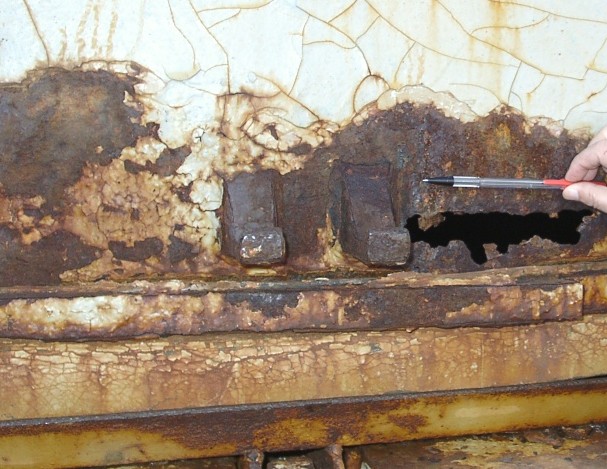 |
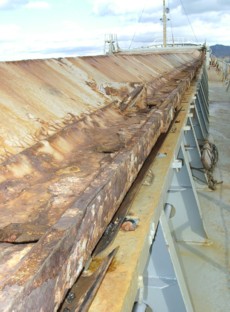 |
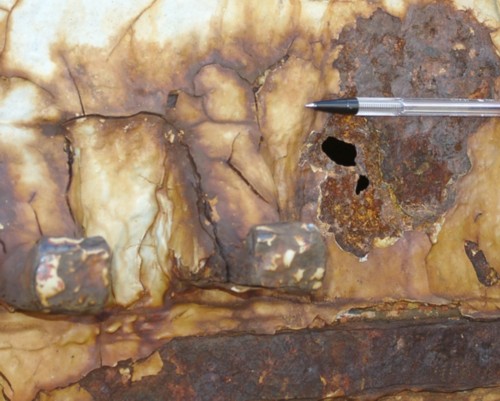 |
|---|
問題船舶の規制をめぐる動き-国際条約の改正を中心に- (国立国会図書館 ISSUE BRIEF NUMBER 438 (Feb.25.2004) が国立国会図書館のHPで公開されていても 旗国によるインスペクション に対する理解や旗国のインスペクターに対する協力は、未だに低い。 防衛省の守屋武昌前事務次官の癒着問題 からもキャリアが持てはやされることがわかるが、良い大学を出ても問題に真剣に取組まない キャリアもいる。問題船(サブ・スタンダード船)でも同じ事が言える。 PSC(ポート・ステート・コントロール) の仕事は出世のための通過点に過ぎず、問題を解決するような姿勢は見えない。
海運局は ISO 9001を取得している。 ISO が適切に実行されていれば、外国籍サブ・スタンダード船だけでなく、日本籍サブ・スタンダード船の 撲滅につながる。おなしな船が検査に通ったとか、あの検査官だったら検査に通るとかの話は聞かなくなるだろう。 国交省海事局、このメリットをよく理解するべきだ。
話は元に戻すが、適切な検査を行い、問題の指摘又は問題の改善命令(改善の確認)を行えば、 サブ・スタンダード船 は、日本に再々、入港できないのである。
残念ながら、日本の現状は少し違うので サブ・スタンダード船があまり減らないのである。 同じ事を繰り返すようになるが PSC(外国船舶監督官) と呼ばれる国土交通省職員が外国船に対し検査を行っているが、 経験や知識を持っている監督官は少ない。少なくとも厳しく検査する外国船舶監督官が 少ない。結果としてサブ・スタンダード船 は思った以上に減らない結果となっている。 サブ・スタンダード船 は頻繁に日本の港に入国し、出港している。 いい加減に徹底的に検査を行ってくれと思うが、日本政府は適切には動かない。
日本の外務省 が実際に、問題を理解し、「サブ・スタンダード船」の撲滅に協力しているのかについては 疑問な点がある。
「灯台下暗し」と言うが、AISや旗国検査の不十分さを説明する前に、問題のある船舶を検査し出港停止命令を出すことが肝心だろ!
「旗国(Flag State)は、自国船について検査をし、条約の基準に適合させる義務を負っている。」
日本でもそうだがチェックが甘い、法令遵守よりもお金儲けを優先、チェックしないから不正を行う等の理由で不正や不祥事が起きている。
条約不適合船(Substandard Ship)が存在することを知っているのなら、なぜ厳しい検査をおこなわないのか?なぜ全体的に条約不適合船(Substandard Ship)?
なぜ、日本船籍内航船が売船され、外国籍に登録され税関から輸出許可を受けて出航する前に厳しい検査を行わないのか?
国土交通省職員は税金から給料が支払われている。利益や顧客を失うことは心配しなくて良い。しかも、条約不適合船(Substandard Ship)が存在し、
下記のHPでは触れられていないが、多くの条約不適合船(Substandard Ship)に対して旗国(Flag State)から承認を受けた民間検査会社が、
不適切な検査又はほとんどノーチェックで検査に合格した証明として証書と呼ばれる書類を発給している。この事実も公表すべきだ。
船舶代理店の中には自分達の利益しか考えていない会社や社員がいる。検査よりも荷役を優先。安ければ条約不適合船(Substandard Ship)を使っても
問題ない。仕事があれば条約不適合船(Substandard Ship)でも扱う。全て旗国(Flag State)が悪いように言っているが、国土交通省だってインチキの
耐火証明テストを承認した。問題のある民間会社にも指定確認検査機関の権限を与えた。
姉歯氏、開発会社「ヒューザー」やイーホームズの耐震偽造
が注目を集めるまで、適切な対応を取っていなかった。
旗国(Flag State)から承認を受けた民間検査会社が条約不適合船(Substandard Ship)を作り出していることを理解しないと
国土交通省から承認されるための実験やデーターの改ざんや偽装書類等の問題は改善及び解決されないだろう。
違う形で姉歯氏、開発会社「ヒューザー」やイーホームズの耐震偽造
のような問題が起きるかもしれない。騙す民間業者が悪いのか?
見抜けない国土交通省は悪いのか?両方が悪いのか?よく考えて条約不適合船(Substandard Ship)の検査を行ってほしい。
旗国(Flag State)だけが悪いのではない。承認を受けた民間検査会社も悪いのだ。モラルがなければ民間会社は規則を守るよりも利益や仕事確保を優先にする。
誤解を招くようなことは避けてもらいたい。
条約不適合船(Substandard Ship)の登録を許した旗国(Flag State)と
変わらない。程度の差だけだ。それに日本船籍船の検査について言えば、ISO9001を取得しながらも検査官により検査基準がかなり違う。ISO9001の
取得の前であれば、これが国土交通省(日本国や海運局)のやり方と諦めるしかないと思う。ISO9001の取得後で検査基準に違えば、ISO9001の不備と
しか考えられない。なぜなら、ISO9001を取得すればマニュアルが存在し、検査基準で曖昧な点があれば問題点として記録し、改善されるからである。
また、過去に検査した検査官の検査に間違いがあることが確認されれば、記録し書類として残し、適切な対応が行われなければならない。
上記の極端なケースが、結果として条約不適合船(Substandard Ship)の存在として認識されるのだ。
船に関係ない人のために、今でも注目されている 耐震強度偽装問題を例として説明します。 国土交通省を旗国、自治体や民間検査会社を船級(検査会社)とします。 国土交通省が検査基準や制度の問題を改善及び解決をおろそかにし、自治体や民間検査会社も ずさんな検査(人材的問題、検査方法の問題、現場の問題報告や改善要求も含む)を行い 続けた。結果、故意であるか、故意でないにも関わらず、耐震強度に問題がある建築物が 検査を通り、建てられた。また、明確でない耐震強度計算方法も放置され、強度や安全の 基準まで確認できないけれど、検査をパスできる状態になっている。検査を通ったけれど、 問題がある建築物が、 サブ・スタンダード船 と考えてもらえばよい。
この事実を逆手にとって、 でたらめな検査を行っている検査会社や検査官がいる。 取締まる能力がない外国船舶監督官を増やしても、効果が望めない。情報交換もあまり行っていないようである。 検査を行っても、検査官の能力や制度に問題がある場合、問題を 防げないのは耐震偽装問題で明らかにされている。
競争が激しい中、最低限度の規則も守らない から、サブ・スタンダード船 が存在する。 取締りがなければ、規則を守っている会社は競争に負ける。 サブ・スタンダード船 の繁栄となる。 今年は食品の偽装が注目を集めた。 食品の偽装と同じである。処分されない、取締りが甘ければ、偽装(違反)はなくならない。 正直者がばかを見るのである。何十年もの間、偽装をしてきた企業も日本にはあった。 船の世界も同じことが言えるのである。
興味深いことは、日本で出港停止命令を受ける船舶の多くは、以前は日本国籍の内航船として 日本で建造された船舶であること。つまり、ISO9001を取得した国土交通省海運局が 本気で日本の内航船として建造された船舶と最初から外航船として建造された船舶に対する 要求規則の違いを調べ、一覧表を PSC(外国船舶監督官) に配布しチェックさせればこれまで以上の成果をあげることができる。また、日本は 他の国のPSC(外国船舶監督官)に研修などをおこなっている。チェックリストを作成し、 配布すれば確実に結果は出せると確信する。なぜ、国土交通省がチェックリストを作成しないのかは、 疑問だ。 サブ・スタンダード船 の撲滅と言いながらも、撲滅する意思がないと言う事だと思っている。
「県水産課は『事故件自体をなくす対策を取りたい』としている。」
サブ・スタンダード船に何を言っても無駄だと思う。対策を考えるだけ時間と労力の無駄!
国土交通大臣を訪問して
PSC(外国船舶監督官)が厳しい検査を行うようにお願いするのが一番だと思う。
全国一のカキ産地、広島県の広島湾で養殖いかだに船が衝突する事故10+件が相次ぎ、出荷ピークを迎えた業者が悲鳴を上げている。例年はピーク時の12〜1月で数件だが、今シーズンは4日現在で6件。業者は天災時に損失を補てんする「漁業共済」を活用するなどしているが、原則は当事者間の交渉。外国船が相手の場合は交渉が難航して大きな負担になっている。
全国シェアの約6割を占める広島では、沿岸や島沿いにカキいかだが1万2000台ある。航路はその間の狭い海域に設定されている。いかだに船が衝突すると、海中にカキが落下し、業者にとっては大打撃となる。
木村海産(広島市西区)は昨年12月11日夕、カンボジア船籍の貨物船にいかだ17台を壊され、年間出荷額の約3割を失った。
交渉相手の船舶保険会社はオランダの会社で日本に支店はなく、やむを得ず弁護士を通じて交渉を始めたが、経営者の木村洋三さん(63)は「外国相手だと言葉が分からんし、出荷シーズンで人手も無い」と嘆く。
同県江田島市の美能漁協では08年、中国船にいかだ約40台を壊され、1億円の被害が出た。約2年かけて6000万円が戻ったが、交渉中に船会社が破産し、保険金が中国当局に差し押さえられるところだったという。
事故の約6割は夜間に起きる。第6管区海上保安本部は「いかだに衝突を防ぐ明かりが設置されているが、冬場はカキの重みでいかだが沈み見えにくくなる」と説明する。ただ、今シーズンの事故10+件多発の原因は不明という。
カキ全体の出荷量に大きな影響はないとみられるが、県水産課は「事故件自体をなくす対策を取りたい」としている。【植田憲尚】
一般に
日本籍内航船
は国際条約を満足しない規則で建造されており、日本領海内(平水、沿海、非国際近海)
でしか運航できない。国際近海(外国港への入港が可能)は国際条約を満たすように
建造されている。このため、日本籍内航船(国際近海として建造された船舶は除く)が外国籍になった時点で
サブスタンダード船となる。日本の内航船で使われている総トン数は
国際総トン数(ウィキペディア)
ではありません。日本国内総トン数は国際総トン数より小さな値になる。国際条約のSOLASは国際トン数で適用規則が決まるので
国際総トン数を適用した場合、多くの元日本籍内航船は国際条約を遵守していない船、つまりサブスタンダード船となる。
(国際トン数は1969年の船舶のトン数の測度に関する国際条約(kouko.com)
に基づき計算される。)
PSC(外国船舶監督官)
がこの事実を理解し、予習をして元
日本籍内航船
の外国船を検査すれば、出港停止に値する不備を簡単に見つけることが出来る。
しかし、現実は一部の
PSC(外国船舶監督官)
以外は見つけていない。
最近は、日本籍内航船から外航船になっても日本船名を使う船が出てきた。 外航船であることが見つかり難くするためだろうか?コールサインで判断できると思うが、それでも間違える人達が存在するばそれで良いのかもしれない。
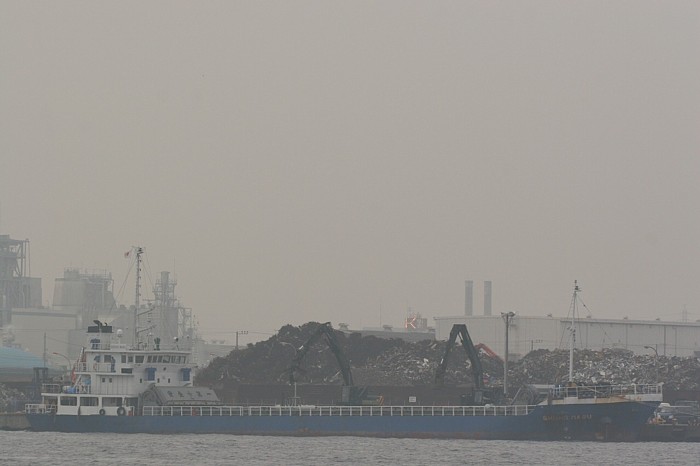
これは 日本のPSC(外国船舶監督官) を含むアジアのPSCが問題点を指摘していない(出来るだけの知識と能力がない)現状が存在するから成り立つのです。 国際船級協会連合(IACS)の 船級規則で遠洋区域(Ocean Going)の要求を満足する内航船などほとんどありません。
内航船として使われている「フェリーよなくに」に関して国境の離島における短国際航海(与那国−花蓮間60 海里)の貨客船あるいは貨物船の航行許可に関する要件緩和もしくは地域の実情をふまえた規制適用等
(財団法人都市経済研究所より)
からも推測できるが、内航船を改造することなしに国際航海に従事することは不可能だ。
しかし、船の国籍を選べば、
PSC(外国船舶監督官)
が問題を指摘しない現状では逃げ道があるのです。
検査会社が検査を見逃してやり、お金と引き換えに証書を発給するから多くの船が日本に入港出来るのです。
事実を知らないから、上記のような発想が出来るのでしょうね。
産地偽装問題
も同じですが、正直者がばかを見るのが現在の日本です。
外国人に対して強い対応が出来ない日本の公務員が生み出した矛盾です。
これを読んだ人達の中には割り切れない矛盾を感じる人がいるかもしれません。しかし、これが現実です。
外国航空会社が日本の地方空港に参入するケースが増えています。
「国土交通省が、来年度予算の概算要求に『外国航空機安全対策官』の配置を、新規施策として盛り込みました。」 11/01/07(京都新聞)
と新聞に書かれています。
PSC(外国船舶監督官)
と同じレベルなら外国航空機安全対策官による検査をしないよりはまし程度でしょう。しかしはっきり言って、空の安全は守れません。
中国が航空機の生産を始め、アメリカの会社が既に発注したとのことです。中国で建造された船に乗っているドイツ人船長が言うには、
中国建造の船に乗るのは問題ないが、中国製の飛行機は空飛ぶ棺おけなので絶対に乗らないと言っていた。
現実を知らない日本人は大惨事が起こるまでは安心して格安の外国航空会社の飛行機に乗るのでしょう。
内航海運の代替建造促進に向けた施策の検討状況について(説明資料)(資料4)2011年7月4日 海事局内航課(国土交通省) を見つけました。
はっきり言って、国土交通省は同じ省内でも情報交換が出来ていないようです。つまり、時間とお金の浪費のようなことをしています。 「なぜ、日本から問題船が出港できるのか?」と 「PSC、サブスタンダード船と内航海運の未来」 を読んでも何が問題なのか理解できなければ国土交通省幹部職員のレベルは最終学歴に関係なく低い状態にあるのでしょう。 説明資料4の13ページ にトルコ、インドネシア及びタイが「海外沿岸航行船代替プロジェクトに対する取り組み」として紹介されています。 外航船は国際条約に満足しているので、船級のコメントや航行に影響する機器の不備がなければ売船後、準備が出来れば2、3日で 国際航海が可能ですが、内航船は不可能です。これまでは国際条約違反ですが、 外国船舶監督官の検査 を逃れたり、外国船舶監督官 があまり来ない港や外国船舶監督官 が検査しない祝日や週末を選んで出港したケースが多くありました。また、問題があると容易に推測ができるにもかかわらず、 外国船舶監督官 が検査に行かなかったケースも多々あります。利益重視、自称「ブローカー」、 違反を知っているが検査なしで証書を発給する検査会社 を使う悪質なブローカーが存在するから、今までは「放置船問題」は存在しましたが大きな問題なく元内航船が国際航海できたのです。 まともに国際航海に必要とされるものを装備したら船の価格が跳ね上がることも理解しないまま、話を進めているのでしょう。 外国船舶監督官達の気分次第の指摘を満足するだけでは、安全に航行できる状態では ありません。それとも、国土交通省が関与しているので外国船舶監督官達 にこれまで以上に見て見ぬふりをしろと裏で指示をだすのでしょうか?? 関水康司氏 国際海事機関(IMO)海上安全部長がIMO事務局になる のだからもっと模範になる行動を取るべきだと思います。こんな状態だから、国際会議で 「サブスタンダード船」 の撲滅と宣言しながら、「サブスタンダード船」 がなくならないのだと思います。
四国新聞の記者の調査不足であるが、「四国内での航行停止命令は過去10年で2例目。」は間違い。もっと多くの
が四国で出港停止命令を受けている。しかしながら、他のエリアと比べると
出港停止命令を受けるサブスタンダード船は少ない。
「中国籍の船長らが他国籍船に乗船するための許可証明書を所持しておらず、汚水処理装置やコンパス、窓の故障・破損も判明した。
是正と中国での修理を命じられ、8月13日に中国へ出港した。しかし、今月14日に再入港した際の立ち入り検査で、
改善されていないことが分かった。」
船主、船舶管理会社及び検査会社が日本の
PSCをなめているのがよくわかる。TOKYO MOU
のデータ(下記にコピー)から判断しても「グアン・シアン3」(GUAN XIANG 3:IMO8974996)はサブスタンダード船
であり、サブ・シッピングであることがわkる。
船主、船舶管理会社及び検査会社にサブスタンダード船の
ままでは日本に入港することができないし、サブスタンダード船の状態で出港停止命令を受ければ、
不備の是正や修理が中国で行う以上に費用が掛かることを理解させるために、全ての不備が是正され、完全な修理が行われるまで宇和島港から出港させる
べきでない。
ある問題のある検査会社の検査官が言っていた。検査会社
が検査した船舶が不備で出港停止命令を受けたら、日本での修理費用はすごく高いことをアピールして、反省したフリをすれば簡単に出港させてくれる。
日本のPSCは検査も甘いが、対応も甘いので馬鹿にされているのがよくわかる。
日本人として恥ずかしいがこれが公務員達の現実なのである。彼らの上司であるキャリア官僚達も馬鹿にされても自分達の出世や給料に影響がなければ
穏便にする方が良いと考えているのかもしれない。外務省の税金泥棒職員は外務省にはFAXが無いと平気で言うのだからタチが悪い。そんな言い訳など
通用すると思っているのか、よほど国民を馬鹿にしているとしか思えない対応を取る。名前を聞くと名前を名乗らない。一度、総務省に電話して
公務員は自分の名前を名乗る義務はないのかと抗議したことがあるくらいだ。その時は、少なくとも苗字は名乗る必要があると言っていた。
こんなことだから領土問題ないど解決できるわけもないし、まともに仕事をするわけがないと思っている。話は元に戻るが、
PSCは3日に一度は「グアン・シアン3」(GUAN XIANG 3:IMO8974996)を訪船して更なる
不備があれば指摘して出港前に是正させるべきである。
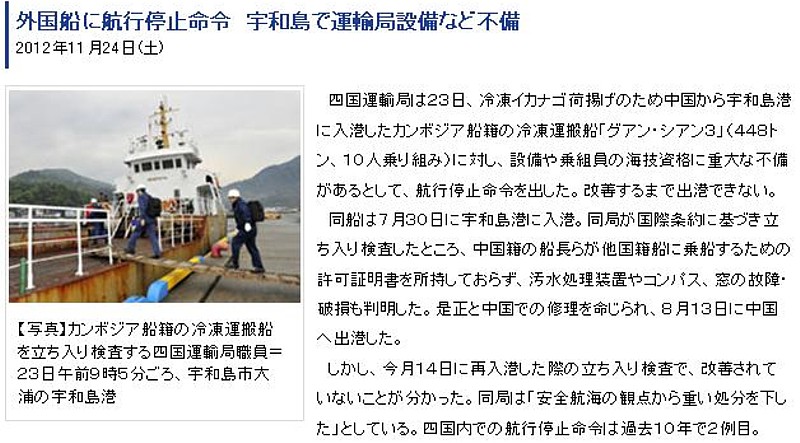
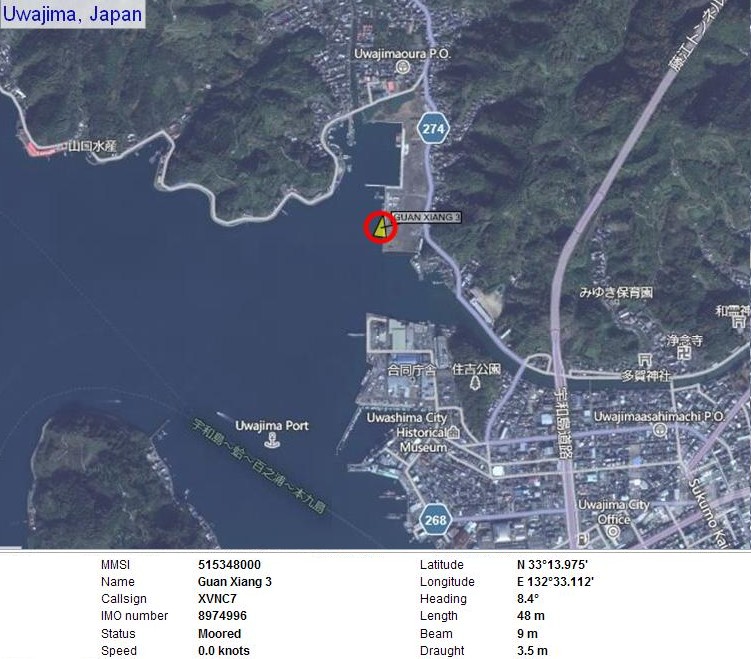

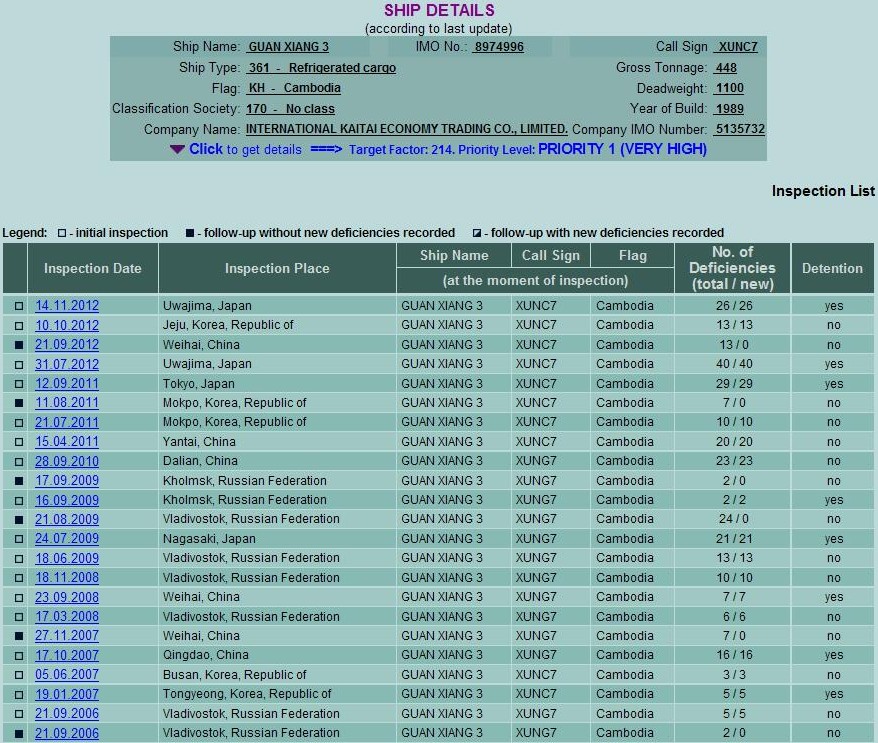
四国運輸局は23日、冷凍イカナゴ荷揚げのため中国から宇和島港に入港したカンボジア船籍の冷凍運搬船「グアン・シアン3」(448トン、10人乗り組み)に対し、設備や乗組員の海技資格に重大な不備があるとして、航行停止命令を出した。改善するまで出港できない。
同船は7月30日に宇和島港に入港。同局が国際条約に基づき立ち入り検査したところ、中国籍の船長らが他国籍船に乗船するための許可証明書を所持しておらず、汚水処理装置やコンパス、窓の故障・破損も判明した。是正と中国での修理を命じられ、8月13日に中国へ出港した。
しかし、今月14日に再入港した際の立ち入り検査で、改善されていないことが分かった。同局は「安全航海の観点から重い処分を下した」としている。四国内での航行停止命令は過去10年で2例目。
サブスタンダード船、検査会社の問題
そしてサブ・スタンダード船と旗国の関係について調査しなくともこれらの問題に精通している人達は原因を推測出来る。
結果としてどれほどの事故になるだけの話である。多くの人命が失われなければニュースにもならないし、事故調査も行われない。
サブ・スタンダード船と旗国の関係と検査会社の問題に精通していればどの旗国の船に行けば良いのか、そしてその旗国の船の中でさらにどの船を検査するべきか推測出来るはずである。検査を行わず、証書だけを発給し、船に郵送する検査会社も存在する。そのような検査会社が検査できなくなったとあまり聞かないし、PSC(ポート・ステート・コントロール)が厳しく徹底的に検査しているとも聞いたことがない。原因と解決方法がわかっているのならなぜ問題がかいけつされないのか?それは他人事だからと思っている。自分達に直接関係なければ脅迫されながら問題解決などする必要がない。脅迫されたからITFが助けてくれるわけでもない。ITFは組合員だけのために働いているのだから関係ない人達はそれほど動かないのではないのかとも感じる時がある。ITFはただ漠然と便宜置籍船を非難するだけでなく非難する旗国を絞り、ターゲットにする船を絞るべきだと思う。似たような悲劇は今後も起こると思うが本気で問題を解決しようとしなければ状況はあまり変わらないと思う。
【木浦聯合ニュース】韓国の旅客船「セウォル号」沈没事故で、光州地裁木浦支院は13日、業務妨害などの容疑で同船の救命いかだなどの安全点検を行った整備会社、韓国海洋安全設備の代表取締役(53)と取締役(48)に対する拘束令状を発付。2人は拘束された。
同社は今年2月、検査機関からの委託で同船のいかだなど救命装備の状態を点検する際、実際には点検を行わずに17項目で「良好」と評価する虚偽の報告書を提出した。
救命いかだは浸水時に自動で開くものだったが、搭載されていた46個のいかだのうち、事故発生時に開いたのは1個だけだった。
聯合ニュース
【木浦聯合ニュース】韓国の旅客船「セウォル号」沈没事故で、光州地裁木浦支院は13日、業務妨害などの容疑で同船の救命いかだなどの安全点検を行った整備会社、韓国海洋安全設備の代表取締役(53)と取締役(48)に対する拘束令状を発付。2人は拘束された。
同社は今年2月、検査機関からの委託で同船のいかだなど救命装備の状態を点検する際、実際には点検を行わずに17項目で「良好」と評価する虚偽の報告書を提出した。
救命いかだは浸水時に自動で開くものだったが、搭載されていた46個のいかだのうち、事故発生時に開いたのは1個だけだった。
【ソウル共同】韓国の旅客船セウォル号沈没事故で、ことし2月に救命いかだの安全点検を行った整備会社が、実際には全く検査せず、いかだの状態は「良好」とする書類を作成、政府から管理を委託された業界団体に提出していたことが11日、合同捜査本部の調べで分かった。
救命いかだは、船が建造された20年前に取り付けられ、交換されず使用。固定器具がさびていた上、船体を塗り直した塗料で甲板にくっついて使えなかったとみられている。イ・ジュンソク船長(68)=業務上過失致死容疑で逮捕=らは、いかだが使えないことを認識し、発覚を恐れて乗客に退避を命じなかった可能性がある。
合同捜査本部は、整備会社の次長を10日に拘束し、業界団体に対する業務妨害容疑での逮捕を検討。手抜き検査を見逃した同団体の管理態勢も捜査する。
セウォル号には少なくともカプセルに入った42個の救命いかだがあり、船が沈めばカプセルが船体から離れ、いかだが飛び出す仕組みだったが、沈没直後に浮き上がったいかだはなかった。
韓国メディアは、回収されたいかだには1994年製造と記されていたと報道。甲板上のカプセルにも船体と同じ塗装を施し、塗料がのりのように固まって張り付いていたとの乗客の証言も伝えている。
セウォル号沈没事故を捜査中の検察·警察の合同捜査本部は12日、救命装置整備会社である韓国海洋安全設備次長(37)について、業務妨害の疑いで拘束令状を請求した。
ヤンは、今年の2月の歳月号の救命ボートと、乗客が海に脱出するスライダー装備のシューターなど、17の項目を点検しながら、かなりの部分の点検項目を確認をしたかのように書類を操作した疑いだ。
ヤン氏は仕事が多く忙しいという理由で、最も重要な検査項目である船体の離脱とガス膨張するかどうかもしっかりチェックしていないことが明らかになった。
セウォル号沈没事故当時、救命ボートは、46個の中でただ1つだけ動作した。
救命ボートは1994年日本で製作されたもの清海海運が2012年にセウォル号を購入して交換せずにそのまま使用してきた。
合同捜査本部は、救命ボートの継ぎ目の間まで塗料が塗られてボンドのように固まっていたずさんな安全点検はもちろん、清海海運の管理もまともに行われていないと判断している。
ヤンに対する拘束令状実質審査はこの日午前に開かれる予定だ。
合同捜査本部は、現在までの乗客を置いて脱出した船員15人と清海海運ギムハンシク(72)代表などの役職員5人を拘束しており、救命機器点検業者と増築業者に捜査を拡大している。
http://www.newsis.com/ar_detail/view.html?ar_id=NISX20140512_0012910119&cID=10202&pID=10200
【ソウル共同】韓国の旅客船セウォル号沈没事故で、ことし2月に救命いかだの安全点検を行った整備会社が、実際には全く検査せず、いかだの状態は「良好」とする書類を作成、政府から管理を委託された業界団体に提出していたことが11日、合同捜査本部の調べで分かった。
救命いかだは、船が建造された20年前に取り付けられ、交換されず使用。固定器具がさびていた上、船体を塗り直した塗料で甲板にくっついて使えなかったとみられている。イ・ジュンソク船長(68)=業務上過失致死容疑で逮捕=らは、いかだが使えないことを認識し、発覚を恐れて乗客に退避を命じなかった可能性がある。
【ソウル共同】韓国の旅客船セウォル号沈没事故で、ことし2月に救命いかだの安全点検を行った整備会社が、実際には全く検査せず、いかだの状態は「良好」とする書類を作成、政府から管理を委託された業界団体に提出していたことが11日、合同捜査本部の調べで分かった。
救命いかだは、船が建造された20年前に取り付けられ、交換されず使用。固定器具がさびていた上、船体を塗り直した塗料で甲板にくっついて使えなかったとみられている。イ・ジュンソク船長(68)=業務上過失致死容疑で逮捕=らは、いかだが使えないことを認識し、発覚を恐れて乗客に退避を命じなかった可能性がある。
合同捜査本部は、整備会社の次長を10日に拘束し、業界団体に対する業務妨害容疑での逮捕を検討。手抜き検査を見逃した同団体の管理態勢も捜査する。
セウォル号には少なくともカプセルに入った42個の救命いかだがあり、船が沈めばカプセルが船体から離れ、いかだが飛び出す仕組みだったが、沈没直後に浮き上がったいかだはなかった。
韓国メディアは、回収されたいかだには1994年製造と記されていたと報道。甲板上のカプセルにも船体と同じ塗装を施し、塗料がのりのように固まって張り付いていたとの乗客の証言も伝えている。
韓国の旅客船セウォル号沈没事故で、ことし2月に救命いかだの安全点検を行った整備会社が、実際には全く検査せず、いかだの状態は「良好」とする書類を作成、政府から管理を委託された業界団体に提出していたことが11日、合同捜査本部の調べで分かった。
救命いかだは、船が建造された20年前に取り付けられ、交換されず使用。固定器具がさびていた上、船体を塗り直した塗料で甲板にくっついて使えなかったとみられている。イ・ジュンソク船長(68)=業務上過失致死容疑で逮捕=らは、いかだが使えないことを認識し、発覚を恐れて乗客に退避を命じなかった可能性がある。
合同捜査本部は、整備会社の次長を10日に拘束し、業界団体に対する業務妨害容疑での逮捕を検討。手抜き検査を見逃した同団体の管理態勢も捜査する。(共同)
とうとう客船セウォル号の救命いかだを整備したYANG(ヤン)氏が逮捕された。
下記の救命いかだは客船セウォル号のものではない。古い、新しいの違いはある。しかし両方とも業者が整備し、検査を合格している。業者によってこれほどの差があるのが現状だ。これで検査に通るのであれば、コストを下げたい船主又は船舶管理会社はどちらを選ぶのかわかるであろう。PSC(外国船舶監督官)は整備業者の取締はおこなっていない。

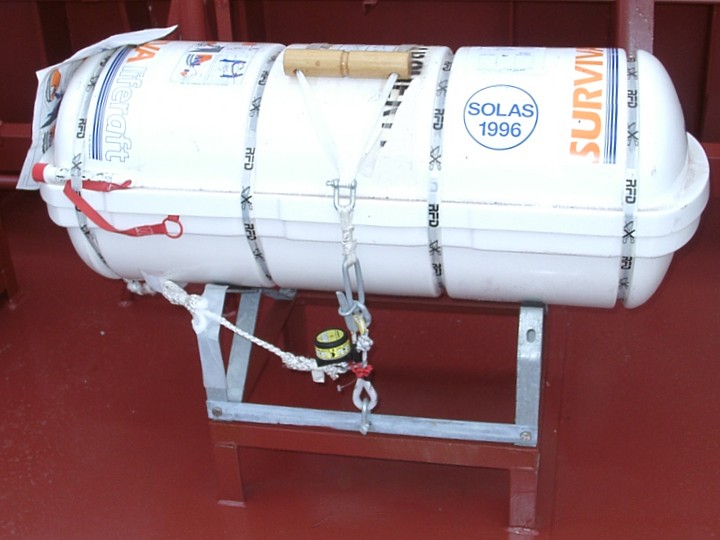
As the criminal investigation of the Sewol ferry sinking continues, police and prosecutors said they have made another arrest.
Authorities on Saturday arrested a man surnamed Yang who was responsible for the maintenance of all the emergency life rafts on the Sewol.
Officials say Yang only made cursory inspections of the rafts and declared to the Korea Register that they were safe to use.
Only one of the 46 rafts on the ill-fated ferry deployed when the ferry sank last month carrying hundreds of people.
The joint investigation team has so far detained 21 people including key crew members from the ship and officials from the ferry operator.
The prosecution on Saturday also summoned a 72-year-old actress who is suspected to have managed slush funds of the man alleged to be the actual owner of Chonghaejin Marine, the operator of the sunken ferry.
【ソウル大貫智子】韓国の客船セウォル号沈没事故で、船舶や積み荷の安全検査を行う機関が官僚の天下り先となっていたことから、各業界の天下り問題がクローズアップされている。韓国メディアは各省の天下りや政界との癒着の実態を連日詳報。捜査当局が調べを進めるとともに、朴槿恵(パク・クネ)大統領は不正根絶に向けて抜本的な措置を取る方針だ。
検察当局は4月24日と今月2日、船の安全検査などを担当する社団法人「韓国船級」本社などを相次いで家宅捜索。船の設計会社から金品を受け取るなどし、不十分な安全検査しか行わない一方で、海洋水産省幹部や政治家らに金品を提供していた疑いで調べている。
同社には海洋水産省出身者らが多数天下りしていることが判明。捜査当局は、同社に対する家宅捜索前日の4月23日、海洋警察職員が同社側に文字メッセージで家宅捜索情報を伝えた疑いでも調べている。
韓国紙・東亜日報は7日、海洋業界だけでなく建設や環境など各業界に天下り問題があると指摘。2011〜13年に国土交通省や環境省などの官僚出身者計141人が計79団体の関連業界に天下りしたと報じた。
また中央日報は8日、2日に事故を起こしたソウル市の地下鉄運営会社の最高経営責任者に関し、歴代15人のうち現職を含む10人がソウル市職員出身だと伝えた。
朴大統領は6日、「長い間黙認され、積み重なった誤った慣行や官民の癒着などの問題を改め、不正を根絶し、正しくクリーンな政府を作るための最善の方法を模索している」と述べ、各業界の癒着体質にメスを入れると強調した。
Press Release: International Transport Workers' Federation
14 June 2013
ITF comment on Swanland sinking report
After fully studying the United Kingdom Marine Accident Investigation Branch’s (MAIB’s) report into the Swanland sinking, the ITF (International Transport Workers’ Federation) has issued the following statement.
The ITF condemns the lack of effective regulation and control in the international shipping industry that allowed this tragedy to occur.
The MAIB report reveals how cost cutting and negligence led to the sinking of the general cargo ship Swanland in theIrish Sea in November 2011, with the loss of six Russian seafarers.
As the MAIB notes, the Swanland is one of nearly 250 general cargo ships that have foundered in just over 10 years. In this period over 800 seafarers have perished in often ageing vessels. The Swanland was over 30 years old when the sinking occurred.
It is questionable whether such an old ship should have been trading at all; but as a minimum it needed regular maintenance and structural repairs. This report highlights the failures in its maintenance of the ship, and the fact that no structural reviews had taken place since 2009.
Even more alarming is the fact that Swanland Shipping Ltd changed the classification society of the ship from Lloyds Register to the International Naval Surveys Bureau in 2009 to reducetheir fees by 30 percent. The report highlights the fact that unscrupulous operators can make savings by cutting back on repairs and the rectification of deficiencies.
The report also reveals that the ship managers, Torbulk, did not make available to the chief officer the means toconduct the strength and stability checks on board the ship which are necessary prior to cargo loading. In addition the owners and managers of the ship seemed to be unaware of the risks of carrying high density cargoes and the importance of obtaining accurate information so that the ship could be safely loaded.
The MAIB further reveals that during the course of its investigation it became evident that many shipowners and managers are unaware of the importance of compliance with the International MaritimeSolid Bulk Cargoes Code (IMSBC), and that they may believe it only applies to bulk carriers.
The ITF believes that this accident investigation report must now be the catalyst for urgent action – in particular for general cargo ship safety to be made a priority at the International Maritime Organization (IMO). The fact that at the time of the accident the Swanland had been certified as being in compliance with all applicable statutory requirements makes a mockery of the existing regulatory framework, the ITF states.
National governments and the international shipping community can no longer stand on the sidelines as this terrible loss of life continues. The ITF is calling for:
· A wholesale review of general cargo ship safety by the IMO
· Stricterenforcement of all existing regulations
· Additional checks and safeguards to guard against the potential precarious safety of older general cargo ships
The MAIB report can be seen at www.maib.gov.uk/latest_news/swanland_publication.cfm
ENDS
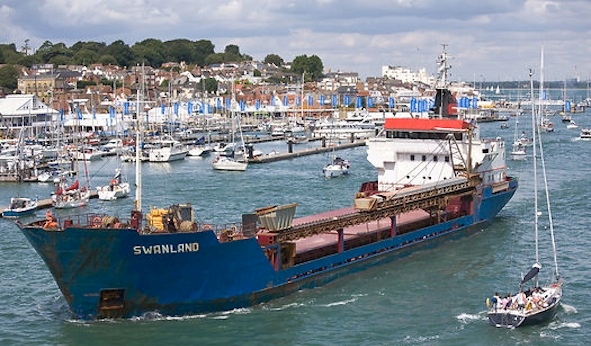
A cargo ship which sank off north Wales killing six crew had been subject to "money-saving" measures by the owner, an investigation has found.
Two of the Russian crew were airlifted to safety by an RAF helicopter co-piloted by the Duke of Cambridge as the Swanland sank off the Llyn peninsula.
One union official called the Marine Accident Investigation Branch (MAIB) report "shocking and damning".
Swanland operator Torbulk Ltd said it was studying the detail of the report.
The Grimsby-based company, which managed the ship for the owner, Swanland Shipping Ltd, Cemex, said: "We wish to extend our condolences to the family of those who died.
"It is a huge report and we are studying its detail. Until we have done that we will not be making any further comment."
The chief officer's body was recovered from the sea, and the bodies of five crew members have never been discovered.
The investigation by the MAIB said the Swanland, which sailed under a Cook Islands flag, had not been properly maintained and was severely weakened by corrosion in the two years between its intermediate survey and the accident in the Irish Sea.
It had been carrying nearly 3,000 tonnes of limestone when it experienced a "structural failure when heading directly into rough seas and gale force winds" en route to Cowes on the Isle of Wight.
The investigation identified that the major factors contributing to the structural failure included the way the cargo was loaded - putting pressure on the midships section - and a lack of repairs in recent years.
Other contributing factors included non-compliance with an international maritime code, a lack of effective safety management and the "financial pressures of operating this type of vessel in the current economic downturn".
'Reduced cost of repairs'
In its report, the MAIB said Swanland Shipping Ltd decided to change the vessel's classification society from Lloyd's Register (LR) to the International Naval Surveys Bureau (INSB) in 2009, reducing the fees paid by about 30%.
The report acknowledged the transfer as a "money-saving" initiative, and added: "In effect, significant long-term savings are possible through reduced cost of repairs and the rectification of deficiencies. This was certainly the case for Swanland."
The report also highlighted how Swanland's crew did not regularly conduct "abandon ship" drills.
The report added: "There is no justifiable reason why the safety record of general cargo vessels should be allowed to lag behind other vessel types, such as bulk carriers, without vigorous attempts being made to redress the balance.
"It is hoped that the loss of Swanland and her six crew will be a catalyst for the work already being undertaken by the International Maritime Organisation to tackle the global issue of general cargo ship safety."
The MAIB has issued a number of recommendations including highlighting the need for all vessels carrying solid bulk cargoes to comply with regulations.
An MAIB spokesperson said: "This was a tragic and avoidable accident that cost the lives of six crew.
"Worldwide, between 2002 and 2011, nearly 250 cargo vessels foundered causing the deaths of more than 800 seafarers - statistics that bring into sharp focus the need for action to be taken to improve the safety of general cargo vessels."
The bodies of ship master Yury Shmelev, 44, chief engineer Geeadiy Meshkov, 52, second engineer Mikhail Starchevoy, 60, Able Seaman Sergey Kharchenko, 51, and ship's cook Able Seaman Oleg Andriets, 49, remain lost at sea.
Second Officer Roman Savin, 27, and Able Seaman Vitaly Karpenko, 48, were airlifted to safety and Chief Officer Leonid Safonov, 50, was pronounced dead after his body was recovered from the sea shortly afterwards.
Following the report, Bob Crow, general secretary of the RMT transport union, said: "This shocking and damning report into the avoidable and tragic sinking of the Swanland in the Irish Sea should shame our own government and the international maritime industry into urgent action.
"The seafarers on board never stood a chance. Their lives were lost in the name of profit and greed."

The ship had been carrying 2730 tonnes of limestone loaded near Llanddulas Photo: Athena Picture Agency Limited
An investigation has found that cargo ship Swanland suffered a "catastrophic structural failure" before sinking off the coast of North Wales.
The Marine Accident Investigation Branch have release their interim report revealing the ship suffered the structural failure on 27th November 2012, claiming the lives of six of its eight Russian crew. The ship took approximately 16 minutes to sink.
The wreck of the Swanland is now lying in a depth of water of approximately 80m, 12 nautical miles off the west coast of Wales.
An extensive air and sea search commenced immediately involving four lifeboats and several rescue helicopters.
At 0315, the first of the rescue helicopters arrived on the scene and spotted 2 survivors. The search for the six missing crew men continued among a large amount of floating debris. The seaborne search for the missing crewmen terminated at 1100 on 28th November.
The Marine Accident Investigation Branch say technical investigations are now nearing completion and it is anticipated that a final investigation report will be published in 2013.
この船、
2008年9月4日に横浜の
PSC(外国船舶監督官)
にも出港停止命令を受けている。安全なのかな?
日本のPSC(外国船舶監督官)
の検査は厳しくない?それでも出航停止命令なのか?よほど状態が悪いのだろう。
サブ・スタンダード船
の仲間入り??
「五月十四日に横浜港を出港した第六十二回の船旅で、米国を航行中に船体に亀裂が生じているなど米沿岸警備隊から安全性をめぐり指摘を受けた。
そのため、航海を一週間にわたり中断してドック入りし修理を施したという。」
途中の航海を中断して一週間のドック入りはただ事じゃない。
「再発しないよう本格改修してほしい」改修じゃなしに修理でしょう。でも下記の記事から推測しても、かなりの修理が必要の可能性がある。
商船じゃなくて客船だから船員が死んでおしまいじゃ困る。チャーター先は、検査レポートや事前の訪船で船をチェックしたの?
それとも予算の問題で妥協するしかなかったのか?
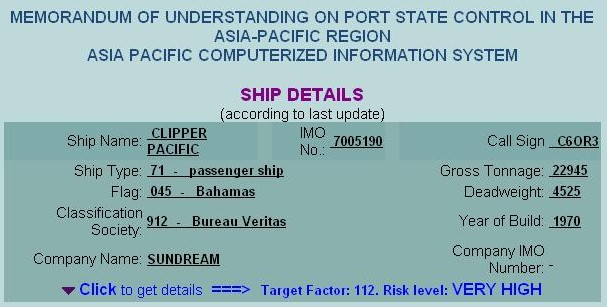
東京MOUのHP で検索すると国籍はバハマで検査会社は フランス船級協会(Bureau Veritas)
下記のサイトで商船は15年ぐらいと書いていたが、船齢30年も船もある。日本は船が15年ぐらい経つと 修理などのコストや維持・管理が必要となるために売ることが多いので、15年と言った人がいるのだろう。 船齢が20年や30年の船は客船でなくとも、日本に頻繁に入港している。多くの人達が知らないだけか、 注目されていないだけ。 日本のPSC(外国船舶監督官) がこのような船舶を検査し不備を指摘しているケースが少ないので注目を浴びないのかもしれないが、 多くの老齢船が日本に入港している。ただ言えるのは、下記のHPを見ると、かなりひどい状態であることは確か。 検査会社 もまともに検査しているのか疑問を持つ。バハマによる旗国検査はどのようになっているのだろうか??
参考HP
中高年男のブログ。自主早期退職、将来不安?起業も再就職もせずに?
クリッパー・パシフィック(Clipper Pacific) 横浜港初入港風景 (横浜市港湾局のHP)
乗客を対象に平和学習や交流活動を目的にした「ピースボート地球一周の船旅」のためにチャーターされた一九七〇年建造のバハマ船籍の客船「クリッパー・パシフィック」(二二、九四五トン)が、航海中に船体に亀裂が生じるなどトラブルが相次いだことが分かった。修理を重ねたため横浜港への帰港は当初予定から十日遅れの四日。七日に新たな地球一周に出港する予定だ。
船旅は非政府組織(NGO)のピースボートが企画。主催者の旅行会社ジャパングレイス(東京・新宿)によると、五月十四日に横浜港を出港した第六十二回の船旅で、米国を航行中に船体に亀裂が生じているなど米沿岸警備隊から安全性をめぐり指摘を受けた。そのため、航海を一週間にわたり中断してドック入りし修理を施したという。
また、航行中に四基あるエンジンのうち一基が突然停止するトラブルも発生。主催者は「船会社によると、航行中にエンジンのオーバーホール(分解調整)を行った」と説明するが、「エンジンが故障した」と指摘する乗客もいる。船内施設にも不具合が相次いだという。
乗客の一人で川崎市川崎区の男性(60)は「活動はこれからも続けてほしい」と前置きした上で「日程が大幅に変更されるなど影響は深刻。再発しないよう本格改修してほしい」と主張。主催者は「船体のトラブルは船会社の責任だが、主催者としてはできる限りの誠意を乗客に示してきた」としている。
チャーター船は五月の船旅から、建造から五十年余りたった客船「トパーズ」(三一、五〇〇トン)から「クリッパー・パシフィック」に変更された。
4日午前2時10分ごろ、倉敷市水島の製鉄会社JFEの岸壁で、パナマ船籍の貨物船「TENYU」(1258トン)が 鉄板を積み込む準備をしていたところ油が流出しました。水島海上保安部が調べたところ、TENYUのハッチカバーを 操作する油圧管の中央部分が破損していました。海上に流れ出た油の量は約3リットルで、JFEが吸着マットなどで 午前8時頃までに回収しました。水島海上保安部は、油圧管が古くなって破損したのが原因とみて詳しく調べています。
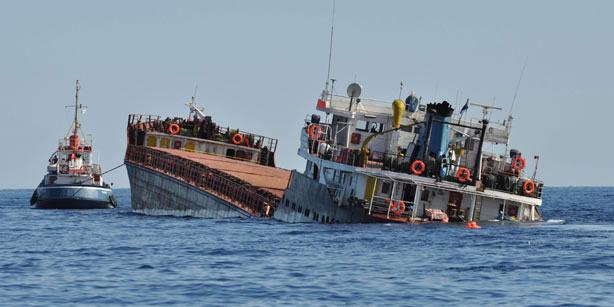
The Volgo-Balt 199 disaster once again focused industry’s attention on a problem of substandard shipping safety in general, and in Black sea in particular. River-sea type, general cargo vessel Volgo-Balt 199 sank in Black sea on Dec 4 last year, 9 crew died, and 4 survived the disaster. Vessel loaded with 3,300 tons of coal was en route from Mairupol, Ukraine, to Turkey, got caught in storm and broke in two, sinking in just minutes, some 20 miles off Turkish coast. On Jan 31 of the same year, another river-sea type vessel Vera sank during the storm on Eregli road, roughly in the same area where Volgo-Balt 199 sank. Vessel was en route from Rostov-on-Don to Izmir, Turkey, loaded with scrap, and anchored on Eregli road to outwait the storm. 4 crew were rescued, 7 died.
In June last year, ITF and affiliated unions published a brochure “Black sea of shame”, slating regional ship owners as irresponsible greedy flock, and the whole coastal shipping in Azov-Black sea area as extremely dangerous for the seafarers working on board of regional coasters.
On the wake of Volgo-Balt 199 disaster, ITF and affiliated unions, mainly SUR (Seafarer’s Union of Russia), are launching a news campaign aimed at what they call, “substandard shipping” in Azov-Black sea region. To comprehend the problem and the safety risks, one must scrupulously consider all known facts and statistics, avoiding emotions which prevail in media coverage of the Black sea disasters, and in Trade Union’s proclamations and allegations.
m/t Volgo-Balt 199 was vessel of river-sea type, widely spread in European waters. The owner of the vessel operates 5 other vessels, also coasters. The only criteria available for the assessment of the safety of those vessels, is the detention history. All 6 vessels, including the ill-fated Volgo-Balt 199, have a good history in this regard, after they were obtained by the owner in question. Before the present owner, their history wasn’t so good. Together with other information gathered after the disaster, including the Ukrainian Shipping Inspection statements, it may be presumed, that Volgo-Balt 199 was up to the required standards, or to put it short, as seaworthy, as the river-sea type vessel may be. The question is, what is seaworthiness of the river-sea type vessel, and why technically nonfaulty vessel sank in though strong, but still, regular for this region and this time of year storm?
The river-sea type was developed in former Soviet Union sometime back in the late 50-th, with the main idea of creating a vessel capable of navigating both inner waterways and the coastal seas. There are many projects of those vessels, they are widely built since the 60-th up to the present days, but whatever is project or year of built, the vessels still, are not seaworthy in a generally accepted meaning of seaworthiness. By Class requirements they’re restricted in navigation and can’t sail further than 50 nautical miles from a refuge, but in fact, such a restriction is a dissimulation. The vessels are too long, flat-bottomed and not strong enough in terms of structural strength.
The meaning of it is very simple – vessels are prone to capsizing even in fresh weather, if they become disabled and open the side to the waves, and prone to hull breaking in more or less strong storm, even if they’re under power and can keep against wind and sea. Vessel may be more than 50 miles off the coast, or less than 5 miles, it doesn’t actually matter. What matters is the sailing itself – river-sea type can’t sail into any storm, it’s mortally dangerous.
River-sea type in this respect, is similar to a soldier in battlefield, who’s moving around by short spurts from one shelter to another, during the short periods of fire cease. River-sea type has to sail from one port to another, from one area to another with enough places of refuge, during the periods of safe weather conditions, depending on favourable weather forecasts and captain’s knowledge and feeling of local weather. To be caught in storm is, if applied to river-sea type, an accident in itself, requiring an investigation, even if the vessel managed to survive. The long-term statistics show, that 2 out of each 100 river-sea type vessels sink due to unfavourable weather conditions.
“Substandard ship” term is widely spread and believed to be understandable without need for any further clarifications, but is it so? Some define substandard ships as “seaworthy but with conditions on board the ship which are clearly hazardous to safety or health”. Some define substandard ships in quite a different way:
“A substandard ship under our standing point is the one that falls under at least one of these criteria:
a. Poor Shipbuilding Quality
b. Poor Maintenance
c. Under qualified crew”
Generally, it is understood or accepted, that substandard vessels are the vessels mainly of coastal trade, aged and registered under FOC. As such, they’re believed to be risky for crews, cargoes and environment. Let’s look into the ITF brochure “Black sea of shame”. ITF and affiliated unions describe the Black sea coastal shipping as mainly substandard one, trying to prove their allegation by the following statistics:
“There are some 2,400 dry cargo vessels trading in the area, of between 2,000 – 12,000 dwt. Close to 1,000 vessels are of 2,000 – 4,000 dwt. Trade is dominated by the vessels over 20 years old, with some 800 vessels being over 30 years old, and only some 500 vessels are of 10 years old, or newer”.
ITF obviously considers the above figures to be so frightening, that there is no need for any other argumentation. For a superficial reader, for general public, yes, there is no need for anything else, such ages seem to be very frightening indeed. For an industry insider, the figures ITF is operating are hardly frightening or alarming. Just for one reason – if we check the world merchant fleet statistics, we’ll easily figure out, that some 62% of global fleet of dry cargo vessels of 2,000 – 12,000 dwt are 20 years old or older, the remaining 38% being 0-20 years old, and this proportion exactly correlates with Black sea figures. But there is another reason, too. There is no need in scrapping general cargo vessels of 2,000 – 12,000 dwt achieving10-15, or even 20 years, ages. They’re not state-of-the-art floating wonders of high-tech, and they don’t have to be such. They’re basically rather simple devices, which may be safely exploited for 20-30 years period, providing they’re properly maintained and operated. Coastal shipping doesn’t need modern vessels, it needs safe, sound and reasonably cheap vessels, easy to operate and maintain. In this respect, river-sea type has an advantage of sailing at least one third time of their lives in fresh water, which is much more merciful to the hull than sea water.
Most owners of the river-sea type vessels are small and middle-sized companies, struggling for survival in hostile business environment of Russia and Ukraine. They have to fight for the survival on the market outside their countries, and simultaneously, they have to fight the almighty bureaucracy and all-embracing corruption inside their countries. What’s worse, they are not sure of the future, especially middle and long termed. The rules of the game which is called “private business”, both in Russia and Ukraine, may change overnight, leaving the ship owners with little choice except either fleeting the country, or selling out everything and leaving shipping for good. One can hardly expect them to invest all capitals they have into modern vessels, let alone ordering newbuilds. Still, many of them manage to modernize their fleets, like for example, the company which owned ill-fated Volgo-Balt 199. Of course the pace of modernization is very low, but keeping in mind, that the States in question do everything they can to make the owners life short of unbearable, it’s a wonder how the owners manage to do what they do.
The river-sea type is risky in comparison with any other type of purely sea-going vessels. They are risky not because of age, but because of their basic conception. The vessels are a compromise between seaworthiness and an ability to navigate inner waterways, and technically speaking, the vessels are not satisfactory both to river and sea standards. But there is one advantage, which makes up for all other lacks and flaws. Economically the vessels are very effective, bringing profits to the whole number of other industries except shipping. A river-sea type vessel may reach towns which lay far inland, and carry goods at unrivalled cost and time. Volgo-Balt may sail to Ural, load cargo of steel from Perm steel mills, and deliver it directly to Italy or Algeria, to Rostock or to Birmingham, saving fortunes on transportation costs. On a return voyage vessel may deliver goods to Kazakhstan or Iran, again with great savings for shippers.
There is only one guaranteed way to make river-sea vessels as safe as any other sea-going vessels, it is banning them from sailing in high seas. But such a ban will have negative effect for many industries and economy in general, which will bear the burden of raised transportation costs. There is another, social aspect, too. Nearly all the companies which own and operate river-sea type vessels are considered by seamen community as “start-up” or “final stop” grounds. Young and ambitious start their ocean-going careers, turning from green rookies into professionals on board of coasters, which is especially true for the Ukrainian and Russian ratings. Aged ones find their final employment with not too educationally demanding coaster positions, which is especially true for officers, as the officers of river-sea type vessels, mostly, don’t have such profound education and knowledge of English, as officers of ocean-going vessels.
Statistically, river-sea type is barely more risky than any other type of the cargo vessels. Technically, it’s much more risky. The river-sea type risk is derivative of seamanship of the captain and the responsibility of the operator. In other words, ocean-going vessel may survive the mistakes made by operator or captain by sailing through storm, while river-sea vessel may not. There are ways of course, to make river-sea type vessels safer than they are now, by applying mostly, more strict regulations. For example, to prohibit the vessels to leave the port in bad weather or if forecast is promising storm, making it the responsibility of port administration, or PSC, and making the new regulation compulsory throughout all Europe. That alone will make river-sea type about as safe as any next type in coastal waters.
What is definitely not bound to make the river-sea type safer, is the new campaign the ITF and affiliated unions are trying to launch, using the Volgo-Balt 199 tragedy as a pretext. Their true concerns lay elsewhere, but not in the spheres of safe and socially responsible shipping. The SUR for example, bluntly declared, that the only way to make Black sea shipping safe, is to force the ship owners operating in the region to sign the ITF collective agreement with those trade unions in their States, which are affiliated with the ITF. The SUR as bluntly said, that there are no parties around capable of making Black sea shipping safer, except seamen and dock workers unions. It’s an alarming, worrisome claim, because the safety of the shipping is strictly professional matter to be attended to exclusively by authorized organizations, not by any self-proclaimed well-doers. And because, alas, the trade unions enjoy too much power nowadays.
Voytenko Mikhail
船舶火災:
スクラップを積んだ船舶の火災が起きている。問題はIMDG コードでスクラップ (Scrap Metal)が危険物に指定されていない。 また、BC コードにもスクラップ (Scrap Metal)について明確に定義されていない。 日本はIMOにスクラップ (Scrap Metal)をBC コードの改正に含めることを提案している。 参考資料:第12 回DSC 小委員会提案文書概要 「Scrap metal has been carried in bulk.」よって、Bulk Cargo (BC) Codeに該当する。
伊豆大島沖カンボジア船籍貨物船火災発生情報 (M/V "SAKURAKAWA")
中国向けスクラップを運搬するバラ積み貨物船の火災が再び発生した。一月二十三日午後、 渥美半島沖七十五キロで発生した船舶火災はベリーズ船籍ピンヤン八号一千四百二十四トン (乗組員十名中国籍) でスクラップ八百トンを積載。
船橋から中国のハイメンに向けて航行中の発生だが、 この積荷に関して様々な情報がテレビ報道等で伝えられている。 曰く積み込まれた廃バッテリー、 プラスチックが延焼しているのではないか等だ。しかし、 積荷に関する実態は、 仮に日本国の港湾に戻って検分を待つ以外に解明のしようが無く、 現時点ではその積荷の実態は全く判明していない。
このケースは十二月六日に、 お台場十三号地から中国海門向けに出向したカンボジア船籍SAKURAKAWA号一千百九十五トン (積荷鉄くず八百十四トン) が、 伊豆大島沖で火災を引き起こした事案と同様の決着が付けられる可能性がある。当該貨物船は、 日本の港湾に戻ることなく、 中国海門まで航海して貨物を降ろしており、 結局火災の発生原因や積荷の実態までは明らかになっていない。
スクラップの輸出入に携わる業界関係筋では、 「今回のピンヤン八号のケースも昨年末の事案と同様に、 検分不可能のままハイメン港に向けて航行する可能性が強まっているとしており、 仮に積荷に都合の悪いものがあった場合にはその確立は飛躍的に高まるだろう」 としている。
輸出物資をチェックする税関当局の手続きについては、 全ての貨物を厳密に検分することは物理的にも不可能といわれているが、 関係当局の日本人輸出事業者に対する厳しいチェックの一方で、 船舶火災が目立って多くなっている現状に対して、 全ての輸出事業者に対する公平で適正な手続きによる積荷チェックなどが行なわれることを期待する声も高まっている。
増大する便宜置籍船(FOC)フリート
便宜置籍漁船のフリートは、世界の便宜置籍船隊の10%から12.5%へと、1999年以降も増加を続けている。一部のFOC船籍国(パナマ、マルタおよびモーリシャス)の漁船隻数は減少したが、その他のFOC船籍国(ベリーズ、ボリビア、カンボジアおよび赤道ギニア)に登録された漁船隻数は増加した。
ベリーズおよびホンジュラスは、漁業規則に違反した漁船の登録を抹消していると主張している。けれども、ある国で取締りを強化しても、他のFOC船籍国が緩めてしまう。制裁措置が実施されたり、解除されたりしているが、船舶は船籍を他の国へ移してしまう。約80カ国に漁船は船籍登録されているが、受益(実際の)船主は、台湾、日本およびEUに所在している。商業的漁業の対象となる魚種の90%は、沿岸国の排他的経済水域(EEZ)内に棲息しているが、FOC漁船の利用によって得られる利点は、適用される漁業管理制度の回避あるいは違法操業しかない。
2001年7月の公式監視代表団は、世界の漁業フリートによる行動綱領の悪用および違法操業の増大に照明を当てた。ルクセンブルグが資金を提供したグリーンピースおよび監視活動提携ユニットは、上空からの監視を行い、ギニア―コナクリのEEZ内で操業中の漁船32隻と冷凍船2隻を発見した。その半数は、船名、船籍、認識番号のない大型トロール漁船で、最も貴重な魚種を対象に操業していた。
多くの懸念や公式の決議にもかかわらず、規制執行の欠落のために、違法・無規制漁業に反対するための、あらゆる措置がまたもや侵食されていたのであった。2001年において、1,349隻の漁船が「未知の国旗」を掲げていた。前年に比較して300隻の増加である。1994年に発見されたこの種の漁船は、14隻に過ぎなかったのに比べれば、大幅な増加である。
フランスは、南極圏のフランス領周辺の海域で、マゼランアイナメを漁獲するため操業中の20隻の漁船を拿捕した。これらの漁船の大半は、便宜置籍船であった。フランスの裁判所は、絶滅に瀕している魚種を捕獲したとして、グランド・プリンス号の船体を没収した。漁船の所有者はスペインのノイカン社で、ベリーズに船籍が登録されていた。
ベリーズ船籍には、約500隻の漁船が登録されている。「ベリーズ船籍は、ポートステート・コントロール(PSC)による抑留、海難事故および乗組員に関する問題などについて、最悪の記録を残している」と「さらに荒れる海洋」は述べている。
改善命令又は航行停止の処分された船舶のリストをみたければ、
処分船リストを見てください。
サブ・スタンダード船は、多くの問題を引き起こしている。 海上事故、 座礁船、 座礁の補償問題、公正な競争の妨げなどである。多くの国が、問題を認識し、 PSCの活動 を通じて、サブ・スタンダード船の撲滅に目指している。
サブスタンダード船
は国際条約を満足しないレベルなので、犯罪や違法行為に関与するケースも
多い。
◆密輸船&問題船
◆問題船(密入国)
◆密航/不正輸入事件
カンボジア船籍の貨物船「GOLDEN WISE号」の 中国人船員らが逮捕された。 平成17年における密輸及び密航取締り状況について(海上保安庁のHPより) の資料を見てもわかるがカンボジア籍船が犯罪に関わっているケースが多い。 これは、旗国のチェックが甘い、もしくは、旗国のチェックが適切に行なわれていないことも意味する。 なぜなのか、それは、 パナマ籍船の偽装事件でも分かる。 チェックされないから違反を行い、密輸及び密航にも関わりを持つ。
PSCによる検査が甘い、 一部の税関や税関職員に問題がある、 一部の保安部や保安部職員によるチェックが甘い、 そして一部の外国船が入港する国際港湾施設のセキュリティーに問題がある等のために サブスタンダード船 が違法行為に関与する可能性は残っているのだ。
ISPSコード(国際船舶及び港湾施設保安コード) で要求される証書を本船に保持しているだけでなく、本当に本船が要求規則が満足されているか PSC 又は 保安職員 がチェックするば違法行為は減る。
船員を含め船への出入りを訪船者記録簿に理由も含め、記録しているかチェックすればよい。 中国電力 のようにウソや改ざんは可能であるか、不正を発見しやすい。 誰が乗船者をチェックしていたのか、Gangway Watchは常時、いたのか等もチェックできる。 船舶代理店は訪船したのか、シップ・チャンドラーは来たのか等の事項が記録簿になければ おかしいことになる。
サブスタンダード船 の多くが日本で最低限のセキュリティーも満足していないのに、 PSC 又は 保安職員 に指摘を受けていない事実もある。 テロとかテロ対策とか頻繁に言われるが、日本の政府の対応もこのようなお粗末さである。 サブスタンダード船 と違法行為との関係はそう簡単に切れないだろう。
ISPSコード(国際船舶及び港湾施設保安コード) が適用される前は、外国船が入港する国際港湾施設と国内船の区別もなく、フェンスなどで 囲まれている国際港湾施設も少なかった。週末や夕暮れに サブスタンダード船 に行かなくてはならない時など、普通の人が乗るような車でない車を見かけたり、 周りを凄く気にする中国人が訪船してきたり、写真を取るなと訪船してきた中国なまりの 人間と船員に囲まれ、船から降りないと海に突き落とすと言われたことがある。 たぶん、昔は今よりも犯罪天国であったと思っている。
カーゴホールドに新品に見えるユンボがあり、その上にスクラップをかけていることもあった。 盗難品を隠すためにおこなっていると思われることもあった。税関や保安部が入っている 建物が3km以内にある場所でもこのようなありさまであった。
広島県の広警察 や 神田造船所 の経験から警察なども基本的には信用していない。犯罪を取締まるべき警察の体たらく に付き合うほど暇でもない。 仕事を増やしたくないからいろいろと 口実をつけているのもよく分かる。現実は、それだけの組織だ。 税金で生活しているんだからしっかりしろよ、公務員 と思うだけである。
一般に 日本籍内航船 は国際条約を満足しない規則で建造されており、日本領海内(平水、沿海、非国際近海) でしか運航できない。国際近海(外国港への入港が可能)は国際条約を満たすように 建造されている。このため、日本籍内航船(国際近海として建造された船舶は除く)が外国籍になった時点で サブスタンダード船となる。 PSC(外国船舶監督官) がこの事実を理解し、予習をして元 日本籍内航船 の外国船を検査すれば、出港停止に値する不備を簡単に見つけることが出来る。 しかし、現実は一部の PSC(外国船舶監督官) 以外は見つけていない。

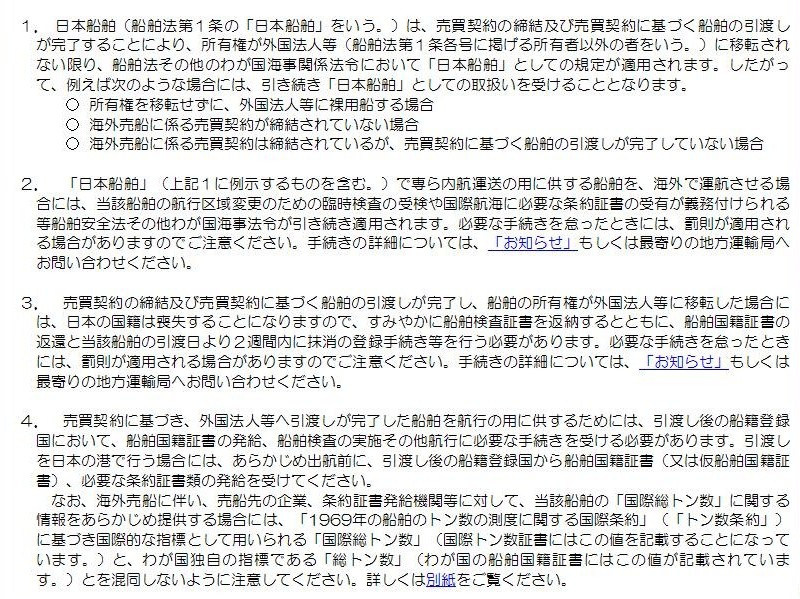
RESOLUTION A.789(19) SPECIFICATIONS ON THE SURVEY AND CERTIFICATION FUNCTIONS OF RECOGNIZED ORGANIZATIONS ACTING ON BEHALF OF THE ADMINISTRATION (IMO)なんか無視しても、PSC(外国船舶監督官)の検査から指摘されない。
なぜ PSC(外国船舶監督官) は指摘しないのか。指摘できないようなレベルの検査しか、多くのPSC(外国船舶監督官) 達が行っていないから。検査で重大な問題を指摘しなければ、少なくとも6ヵ月間は他のPSC(外国船舶監督官) に検査されないこととなる。このように問題船がざるからこぼれるように見逃されている。 TOKYO MOUの職員は今後の対策について考慮するのだろうか? これでサブスタンダード船 がなくなるのか。素人でも答えられると思う。
事実を知らないから、規則、理想と 勘違い(内航.com) が存在し、問題が解決されない。 産地偽装問題 も同じですが、正直者がばかを見るのが現在の日本です。
サブスタンダード船が座礁し、放置されているケースもあります。
青森県深浦町で座礁したAN FENG 8などが例です。
Cyprus continues to demonstrate “very impressive” levels of performance in regards to its shipping sector, according to the International Chamber of Shipping (ICS).
This evaluation is included in the ICS’s latest edition of its annual Shipping Industry Flag State Performance Table, which assesses the quality of international states’ maritime operations.
“The very largest flag states,” remarked ICS Secretary General, Peter Hinchliffe, “such as the Bahamas, Liberia and the Marshall Islands, as well as Hong Kong, Singapore, Cyprus and Greece, all continue to demonstrate very impressive levels of performance, as do all of the other large European and Asian flags.”
The Table offers positive performance indicators for Cyprus in 16 of the total 18 categories evaluated. These include attendance of International Maritime Organisation meetings, the completion of relevant industry reports, fleet age, ratification of relevant conventions, and port state control. The ICS found, in assessing the effective enforcement of international rules that Cyprus may improve on its compliance with USCG safety requirements and its Qualship 21 program.
Given the nature of the indicators that ICS uses, the organization notes however, whether or not a flag is missing one or two positive evaluations on the ICS Table may “not be especially important”. Amongst the 19 largest ships registers, covering more than 85% of the world fleet, none have more than three potential indicators of negative performance.
However, there are a number of smaller flag states that still have considerable work to do, and ICS continues to suggest that shipowners may wish carefully consider whether to use such flags. The largest of these is Tanzania, though Mongolia, Moldova, Cambodia and Sierra Leone are also conspicuous examples of sub-standard ship registers according to the ICS Table.
Source: http://goo.gl/B3c1nU
MWANZA, Tanzania – The International Chamber of Shipping (ICS) has warned ship owners about registering ships and flying the flags of Tanzania.
Other state flags on the list include states of Mongolia, Moldova, Cambodia and Sierra Leone.
The ICS says Tanzania does not comply with the United Nations’ labour standards and tops the list of states with sub-standard ship registers.
Last month, the International Chamber of Shipping (ICS) published its annual Shipping Industry Flag State Performance Table.
Amongst the 19 largest ships registers, covering more than 85% of the world fleet, none have more than three potential indicators of negative performance.
However, there are a number of smaller flag states that still have considerable work to do, and ICS continues to suggest that ship owners may wish think very carefully about using such flags.
According to the ICS table the largest of these is Tanzania, but Mongolia, Moldova, Cambodia and Sierra Leone are also conspicuous examples of sub-standard ship registers.
When contacted last week David Mziray, Public Relations Manager, Tanzania’s Surface and Marine Transport Authority (SUMATRA) said he was not aware of such development.
He told East African Business Week that red-flagging Tanzania might have been caused by the open registration that was being conducted in Zanzibar.
“So such ships do carry Tanzanian flags that’s why you see our country on the list of smaller flag states that do not comply,” he said.
According to the annual ICS flag state performance table published last week, these are examples of sub-standard ship registers, reported London’s Tanker Operator.
“One area on which we would like to see more progress is with respect to ratification of the ILO Maritime Labour Convention,” Peter Hinchliffe the ICS Secretary General said.
“But following the entry into force of the convention, it is now being enforced worldwide through Port State Control and the vast majority of international shipping companies are operating in compliance,” he said.
According to ICS largest flag states have very impressive levels of performance.
Mr Hinchliffe says the fact that a certain IMO Convention may not have been ratified by a flag state does not necessarily mean that its requirements are not being implemented in practice.
“One area on which we would like to see more progress by certain flag states, including some of those with otherwise better performance, is with respect to ratification of the ILO Maritime Labour Convention,” he said.
By Leonard Magomba
下記のサイトを見つけて驚いています。
内航海運の代替建造促進に向けた施策の検討状況について(説明資料)(資料4)2011年7月4日 海事局内航課(国土交通省)
を見つけました。
はっきり言って、国土交通省は同じ省内でも情報交換が出来ていないようです。つまり、時間とお金の浪費のようなことをしています。 「なぜ、日本から問題船が出港できるのか?」と 「PSC、サブスタンダード船と内航海運の未来」 を読んでも何が問題なのか理解できなければ国土交通省幹部職員のレベルは最終学歴に関係なく低い状態にあるのでしょう。 説明資料4の13ページ にトルコ、インドネシア及びタイが「海外沿岸航行船代替プロジェクトに対する取り組み」として紹介されています。 外航船は国際条約に満足しているので、船級のコメントや航行に影響する機器の不備がなければ売船後、準備が出来れば2、3日で 国際航海が可能ですが、内航船は不可能です。これまでは国際条約違反ですが、 外国船舶監督官の検査 を逃れたり、外国船舶監督官 があまり来ない港や外国船舶監督官 が検査しない祝日や週末を選んで出港したケースが多くありました。また、問題があると容易に推測ができるにもかかわらず、 外国船舶監督官 が検査に行かなかったケースも多々あります。利益重視、自称「ブローカー」、 違反を知っているが検査なしで証書を発給する検査会社 を使う悪質なブローカーが存在するから、今までは「放置船問題」は存在しましたが大きな問題なく元内航船が国際航海できたのです。 まともに国際航海に必要とされるものを装備したら船の価格が跳ね上がることも理解しないまま、話を進めているのでしょう。 外国船舶監督官達の気分次第の指摘を満足するだけでは、安全に航行できる状態では ありません。それとも、国土交通省が関与しているので外国船舶監督官達 にこれまで以上に見て見ぬふりをしろと裏で指示をだすのでしょうか??
公務員達は何を見て、何を考え、何をやっているのでしょうか。理解できません。批判しない、されないから非効率や無駄なことを やっているのでしょうか??また、 外国人に対して強い対応が出来ない日本の公務員が生み出した矛盾です。 これを読んだ人達の中には割り切れない矛盾を感じる人がいるかもしれません。しかし、これが現実です。
参考情報:急増するモンゴル船籍と減りだした北朝鮮船籍 07/27/04 (SankeiBiz)
参考サイト:
| 海運秩序の無政府化 |
無法地帯を遊泳する国際海運業者 |
| 国際海事監査制度セミナー、ロンドンIMO本部で開催 | 海上労働ネットワークから見た便宜置籍船 |
| 日本人船員と海員組合の現状 |
サブスタンダード船のことが書いてあります。
| 環境保護への対策 |
これだから恐ろしい、世界のオンボロ船 |
|
世界的な海洋汚染対策 |
違法許した甘い監視 |
|
◆サブスタンダード船
◆サブ・スタンダード船と旗国の関係 ◆なぜ、サブ・スタンダード船? ◆サブスタンダード船の見つけ方 ◆サブスタンダード船の写真 ◆検査会社の問題 |
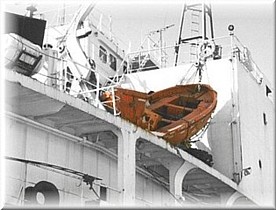 ★HOME |
◆海運関連業界
◆なぜ、サブ・スタンダード船? ◆BLUE OCEAN(ブルーオーシャン)の事故 ◆座礁船及び放置船 ◆PSCによる検査の現状 ◆船舶油濁損害賠償保障法 |
|---|